

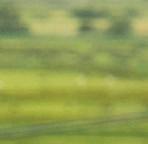

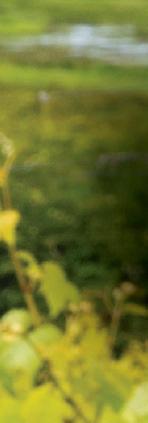








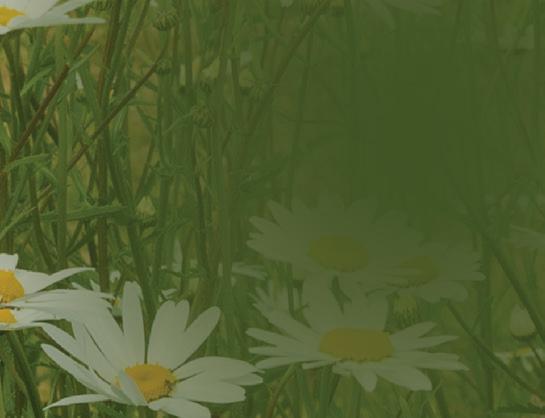



JULY 2024 ™ The relaxed atmosphere at Henners Vineyard will ensure visitors keep coming back Returns guaranteed INSIDE Spotted Wing Drosophila London Wine Fair Commitment to create the best possible wine LAND & PROPERTY CONSULTANTS Expert advice for viticulture: • Site-finding • Sales & acquisitions • Planning applications • Environmental schemes & grants Call us on 01892 770339 Matthew Berryman 07710 765323 matthew@c-l-m.co.uk





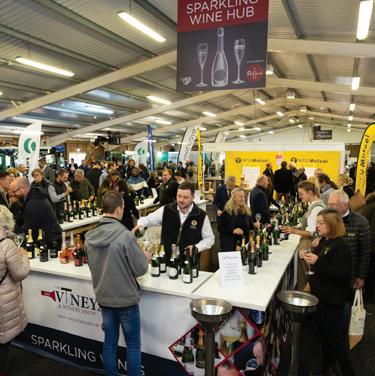

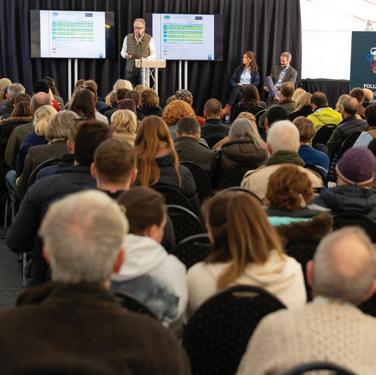

2024 BOOK YOUR STAND NOW REGISTER: VINEYARDSHOW.COM #VINEYARDSHOW24 FOR BOOKING ENQUIRIES CONTACT JAMIE MCGRORTY ON 01303 233883 Sponsored by Vitifruit Equipment Sales and Hire VineWorks has been supporting UK vineyards since 2006 Specialising in: Vineyard Vineyard Vineyard Fruit ONE VINE AT A TIME 210mm VINE WORKS A4 PORTRAIT VINE WORKS ADVERT 09.11.22 Colour List:Target PMS Colours: 1525U In association with For viticulturists in Great Britain SEMINARS | WINE TASTING | MEET INDUSTRY ADVISORS 20th November 2024 Kent Event Centre, Detling, Maidstone, Kent ME14 3JF
www.vineyardmagazine.co.uk
VINEYARD
Kelsey Media, The Granary, Downs Court Yalding Hill, Yalding, Maidstone, Kent, ME18 6AL 01959 541444
EDITORIAL
Editor: Rebecca Farmer vineyard.ed@kelsey.co.uk
Features: Malcolm Triggs
GRAPHIC DESIGN
Jo Legg Flair Creative Design jo.legg@flair-design.co.uk
ADVERTISING & MARKETING
Jamie McGrorty 01303 233883 jamie.mcgrorty@kelsey.co.uk
PHOTOGRAPHER
Martin Apps www.countrywidephotographic.co.uk
MANAGEMENT
DIVISIONAL MANAGING DIRECTOR: Steve Kendall
PUBLISHER: Jamie McGrorty
RETAIL DIRECTOR: Steve Brown
SUBSCRIPTION MARKETING MANAGER: Claire Aspinall
PRINT PRODUCTION MANAGER: Kelly Orriss
DISTRIBUTION
Distribution in Great Britain: Seymour Distribution Limited 2 East Poultry Avenue, London EC1A 9PT Tel: 020 7429 4000 www.seymour.co.uk
Distribution in Northern Ireland and the Republic of Ireland: Newspread Tel: +353 23 886 3850
Kelsey Media 2024 © all rights reserved. Kelsey Media is a trading name of Kelsey Publishing Ltd. Reproduction in whole or in part is forbidden except with permission in writing from the publishers. Note to contributors: articles submitted for consideration by the editor must be the original work of the author and not previously published. Where photographs are included, which are not the property of the contributor, permission to reproduce them must have been obtained from the owner of the copyright. The editor cannot guarantee a personal response to all letters and emails received. The views expressed in the magazine are not necessarily those of the Editor or the Publisher. Kelsey Publishing Ltd accepts no liability for products and services offered by third parties.
Kelsey Media takes your personal data very seriously. For more information on our privacy policy, please visit https://www.kelsey.co.uk/privacy-policy/
If at any point you have any queries regarding Kelsey’s data policy you can email our Data Protection Officer at dpo@kelsey.co.uk





globe-asia vineyard.ed@kelsey.co.uk twitter @VineyardMagGB facebook VineyardMagGB NEWS 8 Leonardslee Family Vineyards has already secured three UK listings 9 Wine trail launch puts Wealden vineyards on the map 10 Harvesting a new generation of wine connoisseurs REGULARS 12 Posing with alcohol Langham Wine Estate recently marked fifteen years since planting its vineyard. 22 Matthew Jukes A whole lotta rosé 32 Written from experience Varieties, varieties and varieties. 35 The agronomy diary Caring for new vines over the summer. 48 The vine post In conversation: regenerative viticulture. 50 Representing you WineGB Awards Lunch and Celebration and Julia Trustram Eve farewell. 53 Machinery A strategic partnership. 57 Machinery advice and tips Opening up and controlling the canopy. FEATURES 20 Insights Key learnings from our project on establishing cover crops. 30 Extract maximum income from timber Properly managed, though, woodland can benefit the environment, create a nature friendly habitat and add to diodiversity. 52 Why your vineyard needs business interruption insurance now. Front cover image: Henners Vineyard © Martin Apps, Countrywide Photographic iti t i ts in G t B t in VI N E YAR D www.kelsey.co.uk
14
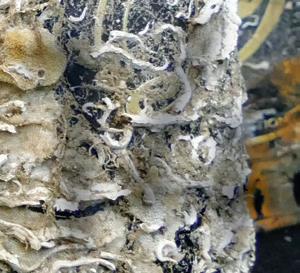

Features
London Wine Fair
Vineyard magazine was pleased to be able to offer visitors to the Vineyard stand tastings of wines that have featured in recent editions alongside some new releases
24
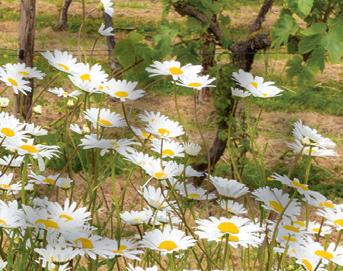


Returns guaranteed
The vineyard at Henners aims to produce around eight to ten tonnes of fruit per hectare each season. However grower partnerships are an important part of the wines produced.
Spotted Wing Drosophila

36
Reports of the vinegar fly Spotted Wing Drosophila in UK vineyards have increased significantly over the last few years.
42


Commitment to create the best possible wine
That level of service will soon be available to a broader range of customers when Defined Wine expands into East Anglia.
CONTENTS



Omnia with EasyPlan upgrade


From the editor




































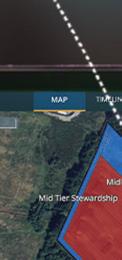








“Talent wins games but teamwork and Intelligence win championships.”
Michael Jordan.








With the Cricket World Cup in full swing, the Euro 2024 football tournament kicking off, the Olympic and Paralympic Games on the horizon, and the Americas Cup setting sail it will undoubtably be a sporting summer (that is aside from the usual sporting summer highlights including, Henley Regatta and Wimbledon).




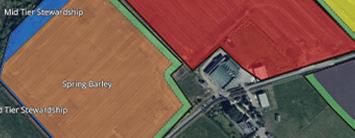












This year sport will be a centre piece of the summer. Vines too will be a centrepiece this summer amongst those who choose to visit vineyards and enjoy one of the many events or amongst those who buy a bottle to share with friends or celebrate with those closest to them.





In a vineyard the vines set their own pace and every season they will start from what appears to be a few unimpressive matchsticks and within the space of a few short weeks will require swift action. As a visit to East Sussex proved this month (page 26) established vines need to be trained and new vines need (among other things) a lack of competition to establish properly (page 35). From canopy management (page 57) to pest management (page 36) vigilance will be vital as the season moves forward. Just like every season that has gone before or all those going forward, the vines will demand attention and as every grower knows look away and you miss something crucial. (Just like a goal in the 90+ minute, a wicket in the last over, a double fault on match point…)


The ultimate objective is to achieve a personal best every season for both growers and winemakers but when these two objectives combine in teamwork that is when results become really outstanding. The English and Welsh wine industry will soon know the name of the Supreme Champion 2024 at the WineGB awards (Page 50) and with many vineyards planning to open their own winery facilities and new contract winery facilities soon to be available (page 44) the possibilities are endless.
At this time of year wine tourism events are also gathering pace. Welsh Wine Week and English Wine Week are just the beginning with many vineyards offering experiences in the vines throughout the summer. Spectators are a vital part of any sport and engaged customers are vital to English and Welsh wine businesses. As wine festivals and wine tourism events increase so too does the connection with customers. Hopefully this will serve to bring great wines to wider audiences and make English and Welsh wine a central part of shared experiences be they planned or spontaneous. Here would be an ideal scenario: some unexpected guests arrive to enjoy some unexpected sunshine with friends in the garden. The host goes to the fridge to pull out a chilled bottle of Welsh or English Rosé they keep on hand for just such an occasion (See Matthew Jukes page 24).
So it may be a summer of sport by I am looking forward to a viticultural summer that promises to be one of the best yet.
6 6 Send your thoughts and comments by email to vineyard.ed@kelsey.co.uk
R
#OmniaYesYouCan omniadigital.co.uk Managing your farm records couldn’t be easier Increase your productivity, sustainability and accuracy Save time A British system for British farmers JULY 2024 | VINEYARD










ONE VINE AT A TIME VINEWORKS HAS BEEN SUPPORTING UK VINEYARDS SINCE 2006 FOR MORE INFORMATION CONTACT: 01273 891777 VINE-WORKS.COM SALES@VINE-WORKS.COM VineWorks has been supporting UK vineyards since 2006 Specialising in: • Vineyard Establishment • Vineyard Services • Vineyard Shop • Fruit Brokering For MORE INFORMATION CONTACT: 01273 891777 vine-works.com sales@vine-works.com ONE VINE AT A TIME SPECIALISING IN: • VINEYARD ESTABLISHMENT • VINEYARD SERVICES • VINEYARD SHOP • FRUIT BROKERING VineWorks has been supporting UK vineyards since 2006 Specialising in: • Vineyard Establishment • Vineyard Services • Vineyard Shop • Fruit Brokering For MORE INFORMATION CONTACT: 01273 891777 vine-works.com sales@vine-works.com ONE VINE AT A TIME
Successful launch
Leonardslee Family Vineyards announced that three UK listings for its new English sparkling wines have been secured after the official launch to the trade at special events on 5 and 6 June.
Leonardslee wines are now available from Horsham Cellars, South Downs Cellars and Taurus Wines. This is an incredible achievement for these newly released wines.
Leonardslee Family Vineyards launched three sparkling wines, all made by traditional method: Leonardslee Blanc de Blancs (RSP:£60), Leonardslee Brut Reserve (RSP: £45) and Leonardslee Brut Rosé (RSP: £45). Leonardslee only makes wines from its own estate grown grapes, under well-respected head winemaker; Johann Fourie.
The launch days were a huge success, attended by a mix of press, buyers, and prominent members of the wine industry.
Penny Streeter OBE and her son Adam, who
heads up the operations at Leonardslee, welcomed guests before Johann Fourie took everyone through the wines and Barry Anderson, the estate’s viticulturist explained the vineyards, the regenerative viticulture practices and sustainability management.
Guests were then treated to a luxurious wine and food experience with a celebratory three course lunch at Interlude, the Michelin star restaurant at Leonardslee which has been specially created by chef Jean Delport to perfectly match the new wines.
Ranulf Sessions, export director commented: “This is an incredibly exciting time for everyone at Leonardslee and despite the tough challenges facing the market we are incredibly confident in our offering. The wines, all made with estate grown grapes, are tasting fantastic, we have received really great feedback so far and three such quick listings reflect this.”
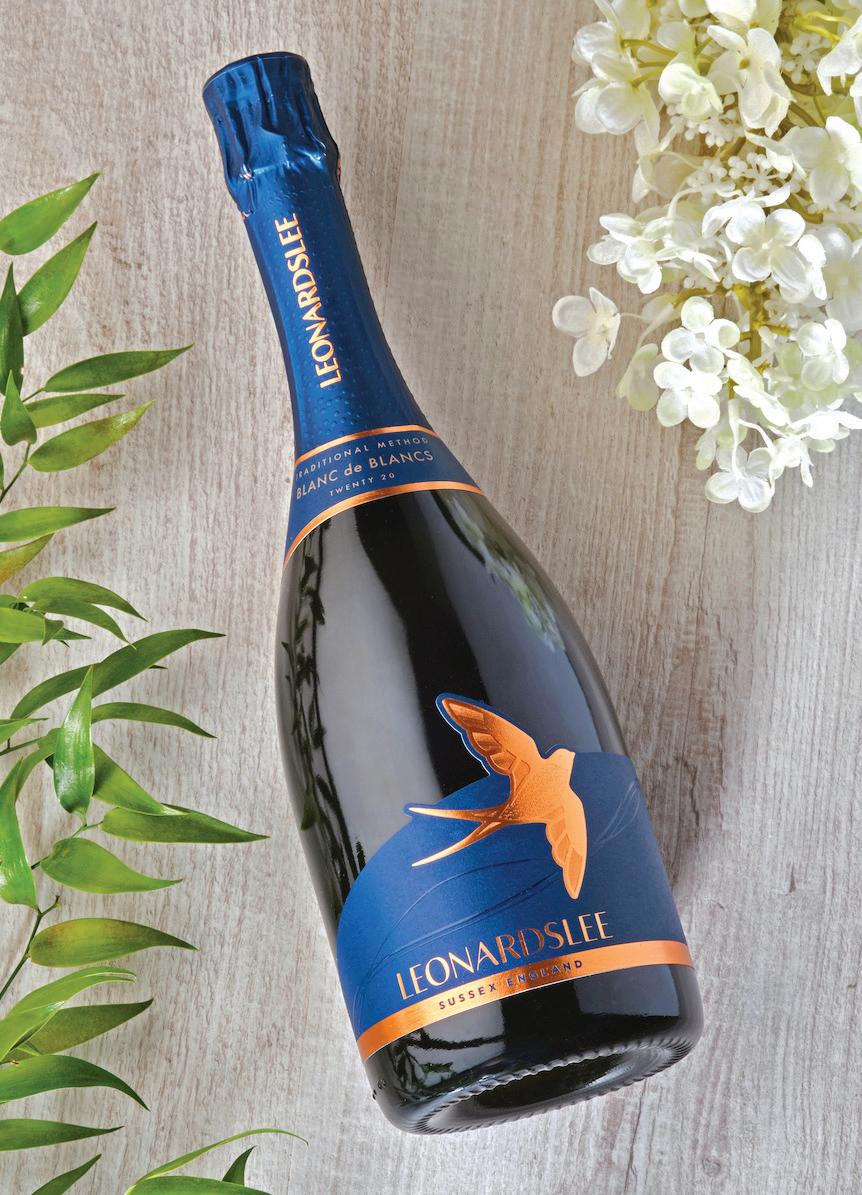
Free vineyard website
Introducing Cloud Wine, the innovative sub-brand of
To celebrate their launch, Cloud Wine is running an exciting competition where your vineyard can win a bespoke website worth £10,000. Entering the competition is easy, you just need to visit www.cloud-wine.uk and enter a few basic details – it’ll take you less than 60 seconds. This competition offers a unique opportunity for vineyards to enhance their online presence with a professionally
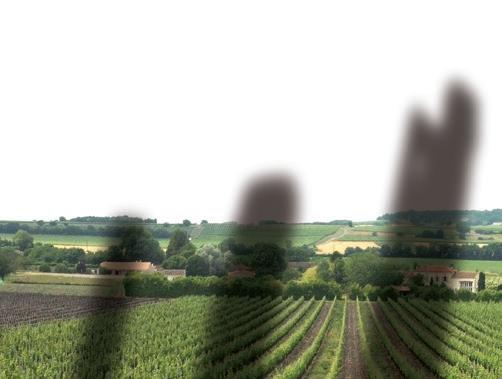

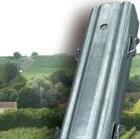


designed, entirely bespoke website tailored to your business and customer needs.
At the core of Cloud Wine's success is a dedicated family team comprising a Strategy Lead, Project Manager, and Web Developer. Alongside their highly talented design partners, Cloud Wine ensures each vineyard website looks fantastic and has smooth and fast functionality, delivering an outstanding user experience.
website agency Riweb.
Cloud Wine's mission is clear: to elevate the digital presence of vineyards through expertly crafted websites that deliver tangible business results. Cloud Wine is set to become the go-to choice for vineyards looking to thrive in the digital age. Visit their website to learn more about the competition and how Cloud Wine can transform your vineyard's online presence. www.cloud-wine.uk



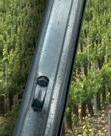







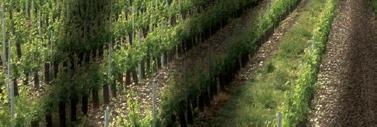














8 8 NEWS
Equipping your Vineyard for Success. Specialized manufacturer from the southwest of France, producing steel vineyard posts since 1997. www.innoveausolutions.co.uk innoveausolutions@gmail.com 07576010088 Discover IDELYS, a French company providing essential accessories for your vineyard. Innoveau Solutions, official distributor of the brand SLPA® and IDELYS products in UK SCAN ME JULY 2024 | VINEYARD
Wine trail launch puts Wealden vineyards on the map
Twelve vineyards are joining forces with Wealden District Council to unveil the new Explore Wealden Wine Trail.
The exciting initiative aims to raise awareness of Wealden’s vineyards, invites visitors to embark on a journey through the new Explore Wealden Wine Trail by visiting award-winning Sussex vineyards, offering wine tastings and picnics, vineyard tours, nature trails and special events.
The project aims to improve pride in place, invest in communities and support local businesses.
Sussex’s vibrant viticulture scene has attracted significant attention in recent years, with its production of premium quality still and sparkling wines gaining praise both domestically and internationally.
This new Explore Wealden Wine Trail celebrates the people, places and passion behind every bottle, showcasing the diversity and excellence of the area’s burgeoning wine industry.
From large wine estates to undiscovered hidden gems nestled amid the stunning Sussex Weald, the new trail features twelve vineyards which are open to the public and offer the opportunity to explore the art and science of winemaking for enthusiasts of all levels.
Vineyards participating in the Explore Wealden Wine Trail are as follows:
◆ Beacon Down occupies 18 acres of the beautiful High Weald Heathfield. A designated High Weald National Landscape, the vineyard is set on gentle south east facing slopes with stunning views.
◆ Bluebell Vineyard Estates is one of England’s leading producers with over 100,000 vines growing premium quality Chardonnay, Pinot Noir, Pinot Meunier, Seyval Blanc, Bacchus, Ortega, Chasselas and Merlot grapes.
◆ Coes Farm was formerly owned by Lisa-Marie Presley and this family-run estate near Rotherfield now features an organic vineyard.
◆ Downsview Vineyard, nestled in the High Weald is run by husbandand-wife team Katy and Toby Spiers who met as wine students in 2005.
◆ In the Loop Drinks, located at Downsview Vineyard, specialises in IWSC award-winning English Vermouth, made from English wine and predominately fresh botanicals.
◆ Henners Vineyard established near the picturesque village of Herstmonceux in 2007, overlooks the Pevensey Levels Nature Reserve, just five miles from the sea. Planted with the three classic
sparkling grape varieties, Chardonnay, Pinot Noir and Pinot Meunier, the vineyard is in one of the driest, sunniest pockets of England.
◆ Hidden Spring is situated on a 23 acre small-holding in Horam, just outside Heathfield. Richard and Sara Asman took ownership of Hidden Spring Vineyard in early 2022 after relocating back to the UK from South Africa.
◆ Mousehall Country Estate lies within the High Weald near Mayfield. Mousehall was first recorded in the Doomsday book in 1086.
◆ Off The Line Vineyard partners Kristina Studzinski and Ann-Marie Tynan established Off The Line Vineyard on a south-facing site on the lower slopes of the Weald in 2014, with the aim of growing grapes and making original English rosé wines on site in a modern, purposebuilt winery.
◆ Rathfinny Wine Estate founded in 2010 by husband and wife Mark and Sarah Driver, Rathfinny is dedicated to producing some of the world’s finest sparkling wine. The vineyard comprises over 230 acres of predominantly Pinot Noir, Chardonnay and Pinot Meunier.
◆ Tickerage Vineyard and Winery In 2007, this family-owned and run vineyard planted 8,000 vines on five acres of north facing slopes on the edge of the Sussex Weald – primarily comprising Chardonnay, Pinot Meunier and Pinot Noir grapes perfect for quality sparkling wine production.
◆ The Secret Vineyard featuring vines nestled in between lakes and ancient woodland in the village of Herstmonceux, this is an artisan producer where everything is done by hand.
◆ Wildwood Vineyard is a multi-award winning, family owned vineyard is located in Eridge, southwest of Tunbridge Wells. Planted in 2016, the vineyard is off-grid, using sustainable practices to grow Bacchus, Pinot Noir and Regent grapes which are tended by hand to create premium quality still and sparkling English Wines.
A council spokesperson said: “We are thrilled to launch the Explore Wealden Wine Trail in partnership with our local vineyards. This initiative not only showcases the exceptional quality of Sussex wines but also underscores the significant economic potential of viticulture and wine tourism to the district."
Explore the Wealden Wine Trail at www.explorewealden.co.uk/wine-trail




9 9 NEWS
WIN A FREE WEBSITE WORTH £10,000! How to enter? …really, it’s that easy! 1. Scan the QR code or visit cloud-wine.uk 2. Enter your details and Submit 3. Pour yourself a glass Enter today and raise a glass to your online success! Cloud Wine specialises in websites that deliver amazing results for vineyards, just like yours.
more people to your vineyard
more wine Book more tours and tastings SCAN ME TO ENTER JULY 2024 | VINEYARD
Attract
Sell
Harvesting a new generation of wine connoisseurs
Seven hundred tonnes of grapes are squashed across 30 sprawling South Staffordshire acres each year, equating to 650,000 bottles. Next year this is expected to rise to 900 tonnes and if the weather is kind, the 1 million mark might just be reached in the family business’s biggest milestone of all.
It boasts 14 own-label products including seven whites, three red and rosés and four sparkling wines and it’s a military operation that runs like clockwork, belying the sleepy hollow in which it resides. It needs to be seen to be believed.
But fitting crown caps, screw caps and corks on a brand new bottling line is far from the end of the story at Halfpenny Green.
In an exclusive development unique to the English wine market, founder Martin Vickers has helped plant a new vineyard at Harper Adams University in Shropshire, in an attempt to safeguard the English wine industry by developing a new generation of talent in viticulture.
“We planted the student vineyard for a sense of legacy,” he said. “The only other venue offering viticulture courses is Plumpton College near Brighton. The industry desperately needed this facility, as do farm businesses who can diversify and become successful through wine making.”
It was Martin’s son Clive who planted 400 vines on a tiny patch of land on their farm in 1983 and after some 40 years of ripening success, his daughters Imogen (21) and Emily (19) might well become the third generation of Vickers wine makers, with the former in her third year of her Agrifood Marketing and Business course – at Harper Adams University!
“It would mean a lot if Imogen and Emily did follow in our footsteps, but they will embark on their own careers in their own time, which we’ll support them with. I’m not sure if wine runs through the blood here, but they both have an intuitive flair and understanding for the business and they would add a tremendous amount to what we do.”
Supplementing the wine operation is a charming restaurant, deli and gift shop – all run by Clive’s wife Lisa. More blossoming growth can be seen in an enticing craft village and even a three-acre zoo at the back of the estate, housing meercats, reptiles and birds of prey.
Never content to let the grass grow beneath their vines, Clive and Lisa are refusing to slow down. They are now exploring the possibility of building a number of holiday lodges, to turn the destination into a

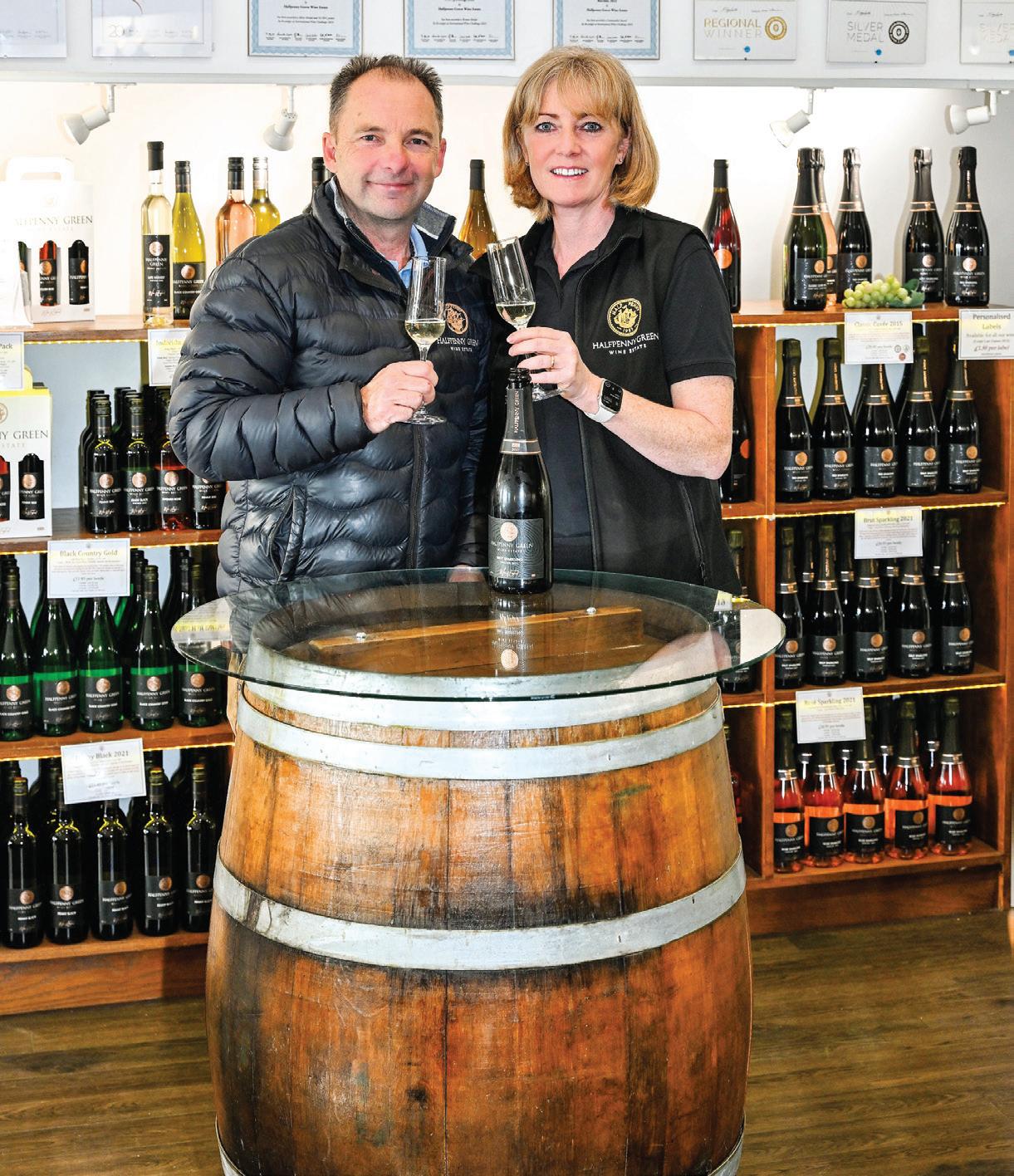
bonafide West Midlands tourist attraction with accommodation.
Clive added: “The possibilities are endless here, but we never lose sight of the fact that we’re only as good as our wines. They’ve never been more popular and we’re proud of the reputation we have carved out for ourselves. It’s not possible without a lot of hard work and a touch of kindness from Mother Nature here and there.
“What we have created here is something we’re all proud of. We think we’re on our way to becoming one of the most reputable and prestigious vineyards in England, but it’s been 40 years in the making and there’s still a great deal of hard work ahead.”
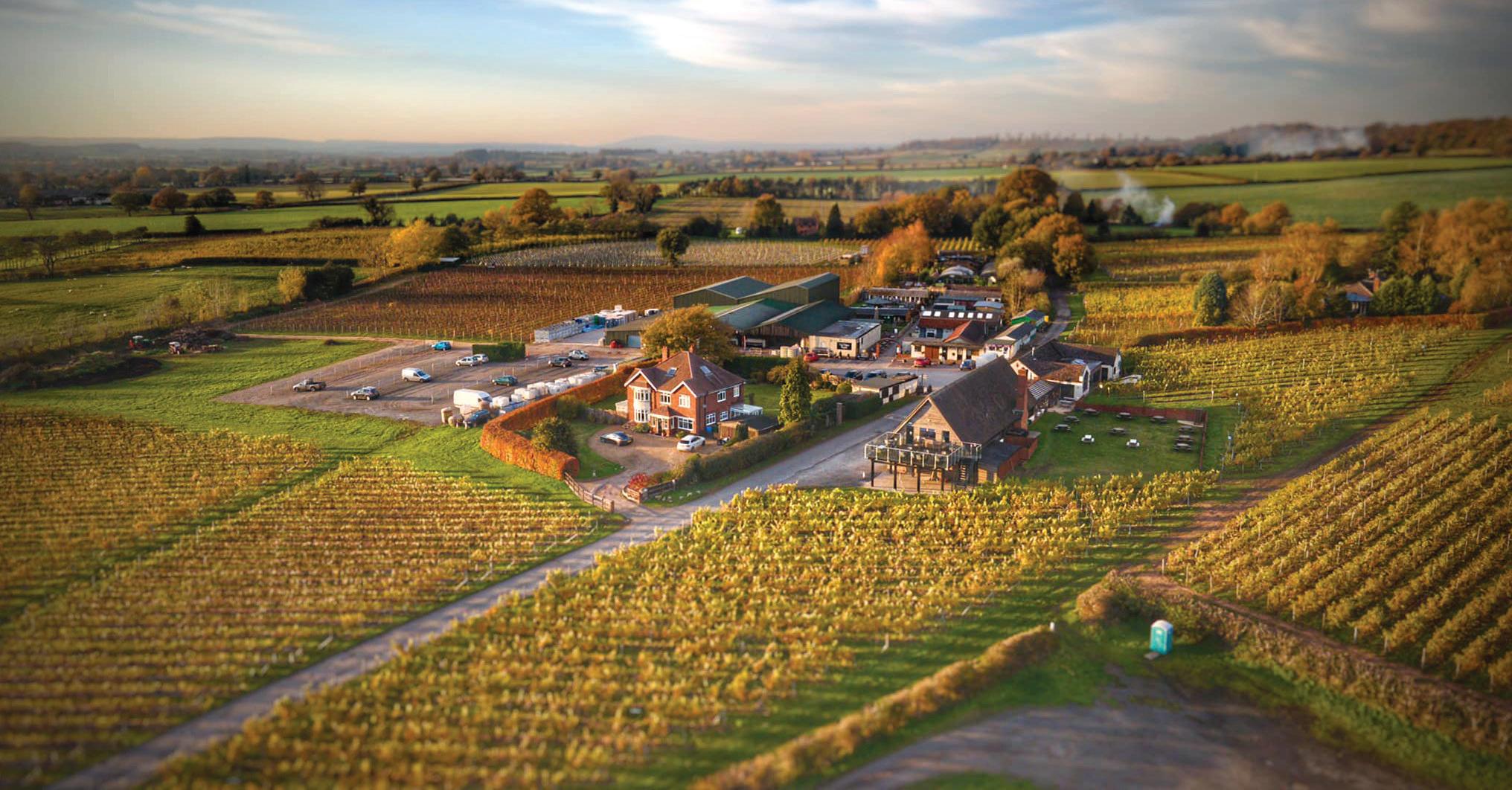
10 10 NEWS
JULY 2024 | VINEYARD
Clive and Lisa Vickers



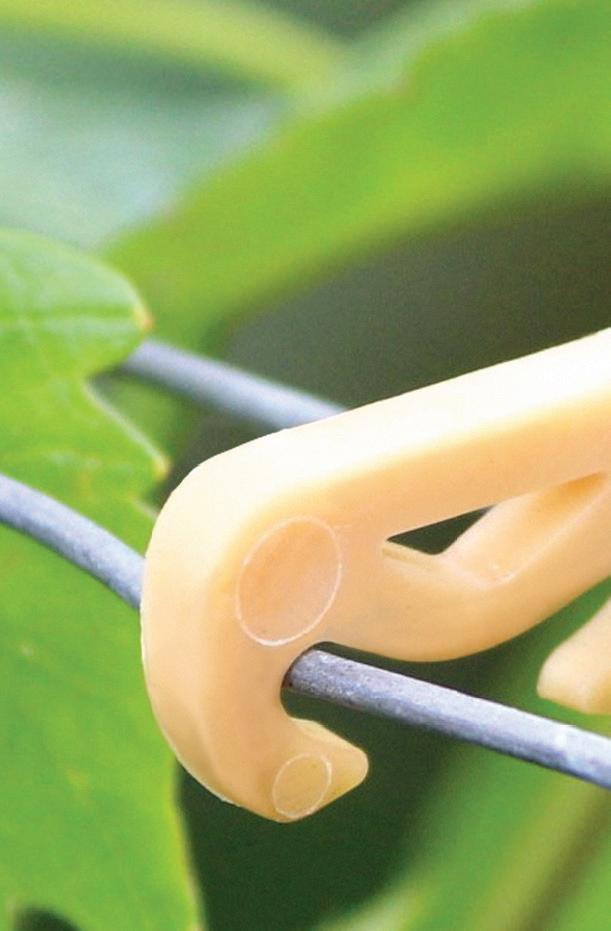











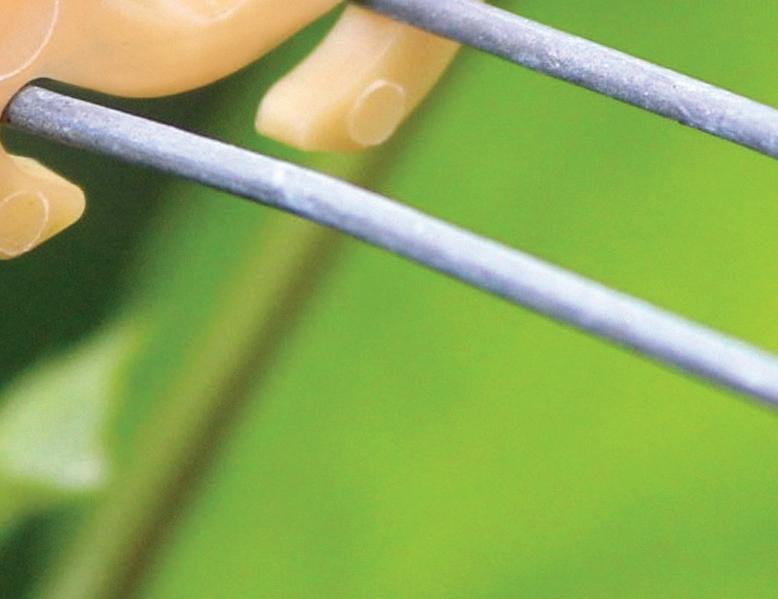

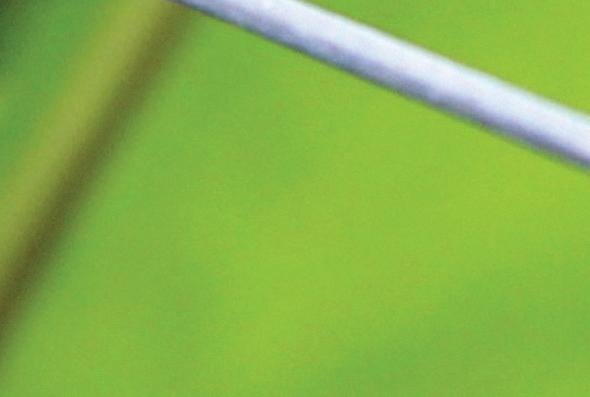

contact@cavi-group.com • www.agrafes-a-vigne.com
Celebrating 15 years
Langham Wine Estate recently marked fifteen years since planting its vineyard at Crawthorne Farm, near Dorchester.
To celebrate friends of the winery and vineyard were invited for a day filled with wine tastings, tours and delicious Dorset seafood, prepared by The Langham Vineyard Café. Langham’s core wines were poured along with their collection of old and rare wines, whilst tunes were played by Dorchester record store and local DJs.
Sommeliers, restaurateurs, hoteliers and chefs from both local and London-based establishments were all in attendance, including guests from Weymouth’s Catch at the Old Fishmarket, Dorchester’s The King’s Arms, Convivial Rabbit, Cerne Abbas Stores, London’s OMA, London Shell Co, The Laslett, Kerridges, Koko, Iné, sister restaurants St Barts and Nest, hotel group The Pig Hotels, Tavistock’s Sovereign Wines, plus Wanderlust Wines and Lea & Sandeman.
Managing Director, Justin Langham who after visiting many of the world’s most regarded wine regions and having studied viticulture at Plumpton College decided to plant 30 acres with vines in 2009 and the area under vine has since expanded to 85 acres, including a further 13,000 new Chardonnay vines this May.
A highlight of the event was a winery tour led by Tommy Grimshaw. Not your traditional winemaker, Tommy has worked his way up from labelling wine when he left school after his first year of A Levels before breaking new ground as the UK’s youngest head winemaker when he was just 24 years old. Now 28, he continually strives to be creative in his winemaking, not bound by technical ‘rules’ with a focus on a low intervention approach. It was a fantastic event enjoyed by all. To find out more about Langham Wine Estate, visit langhamwine.co.uk
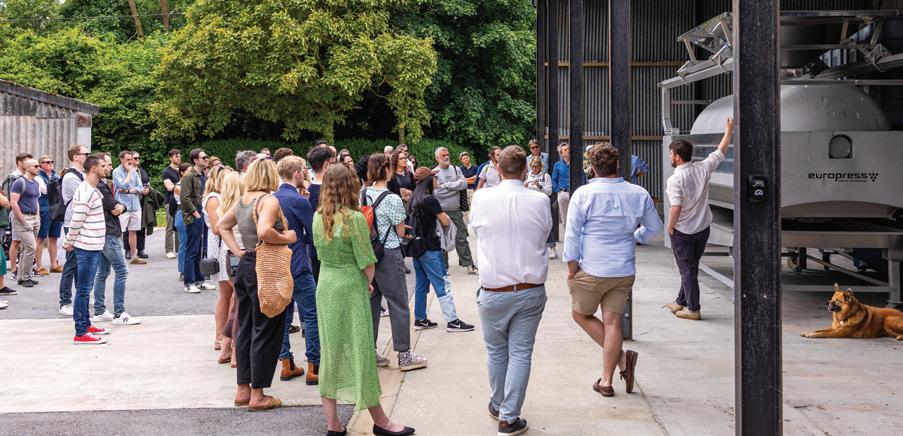
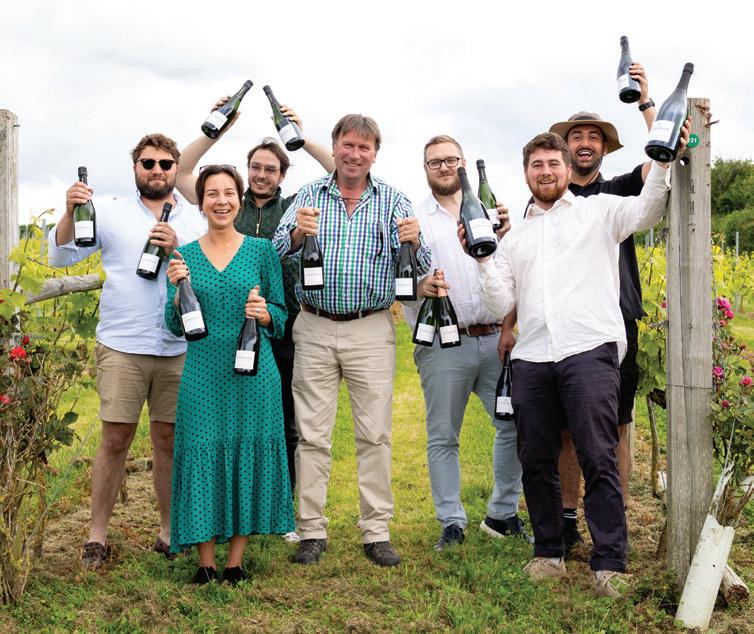


Alice Griffiths
Alice Griffiths is a wine communicator boosting the profile of English and Welsh Wine on social media, under the popular handle of Posing With Alcohol. Alice has worked within the agriculture industry for the past 20 years, spending time as a lecturer and a smallholder before discovering her passion for viticulture, winemaking and wine tasting.
Get in touch to have your events featured: ✉ Posingwithalcohol@gmail.com
INSTAGRAM Alice can be found on social media under @posingwithalcohol on Instagram.
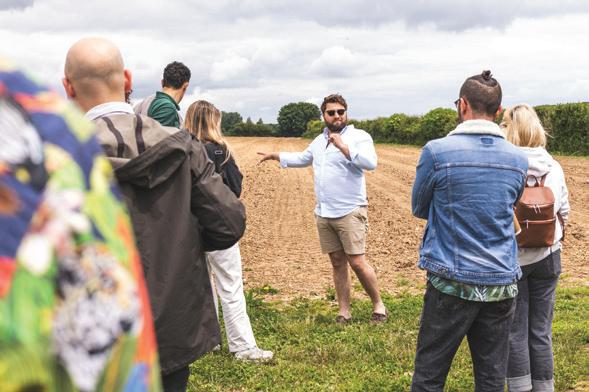
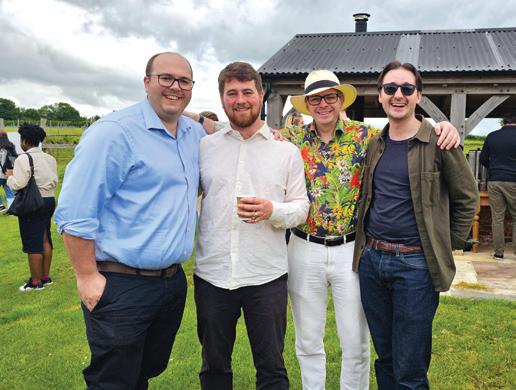


12 12 POSING WITH ALCOHOL
Al eGrif t h s
JULY 2024 | VINEYARD
Sussex, Billingshurst Guide Price £5,000,000
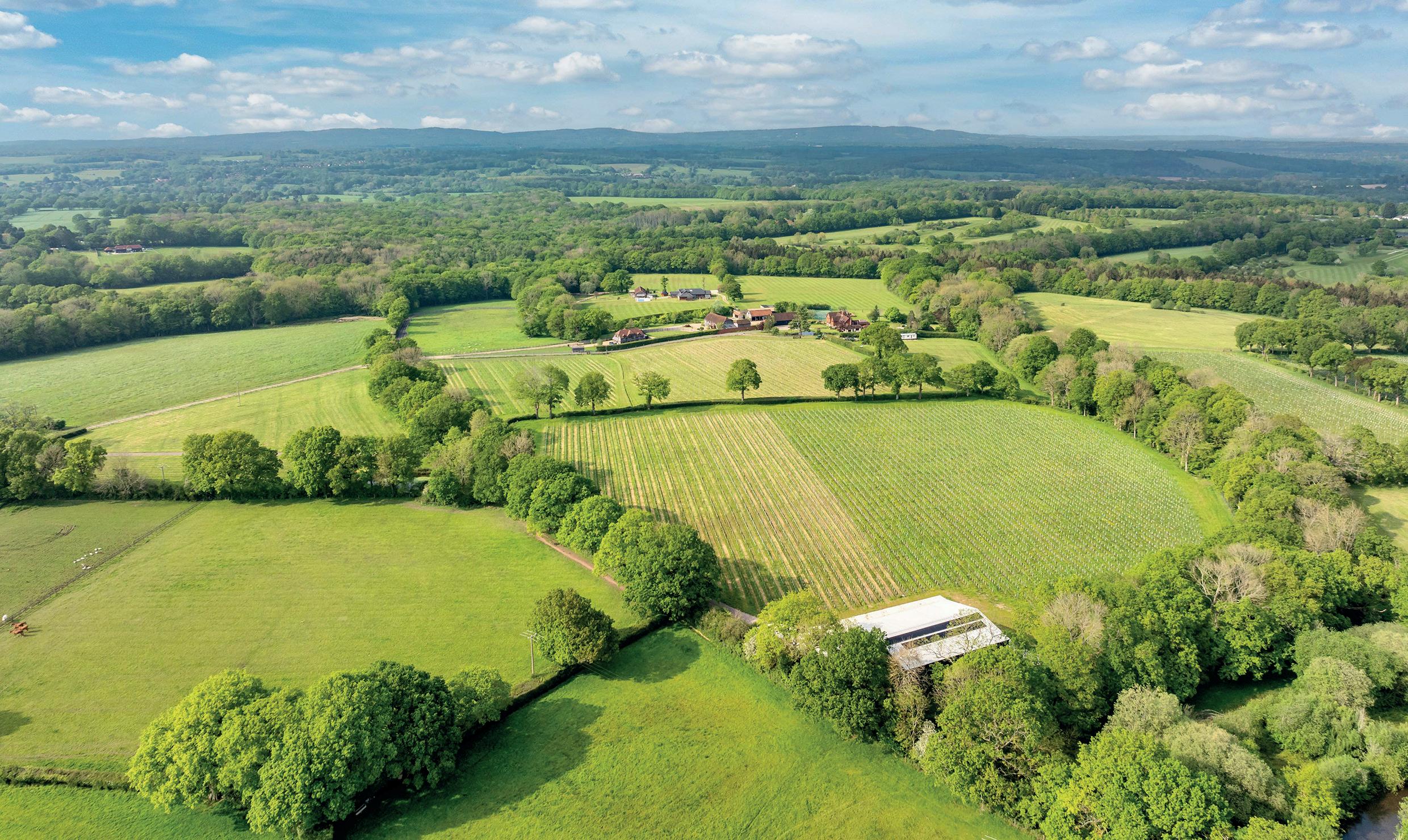

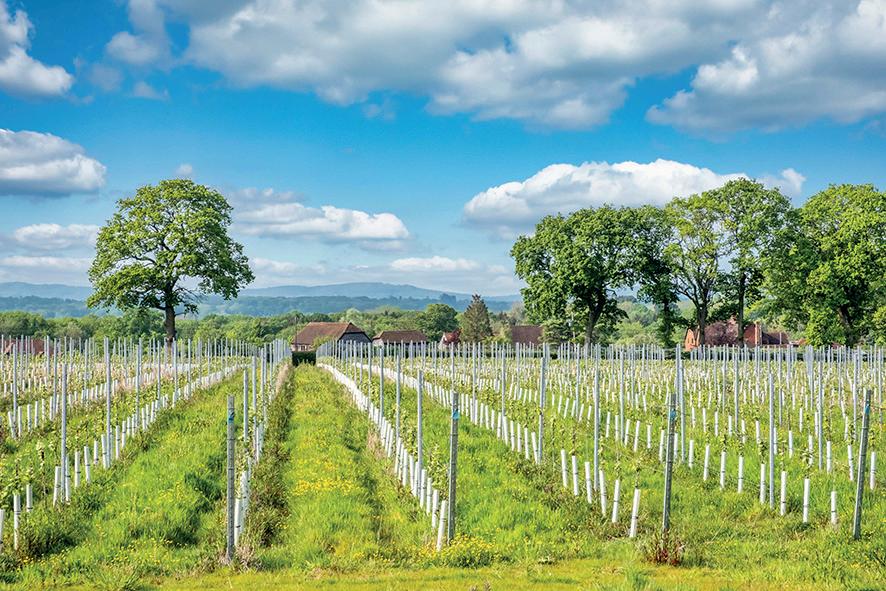
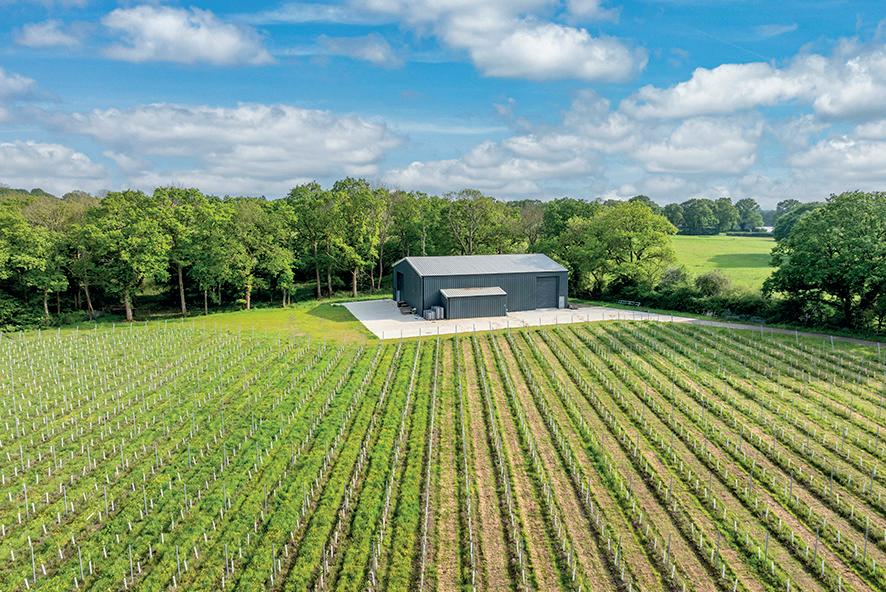
An established and productive vineyard with a Sussex Farmhouse at its heart
Billingshurst: 3 miles (London Victoria 1 hr 15 minutes via Gatwick Airport), Horsham: 7.4 miles, Gatwick Airport: 21.9 miles, Central London: 43.2 miles
A 5-bedroom Sussex country house | Annexe | Triple garage with rooms over | Swimming pool Tennis court | Grassland | Woodland | Ponds | Established vineyard and purpose built winery
About 56 acres (23 ha) in total
Available as a whole or in two lots
Liza Howden National Estates & Farm Agency | 020 7591 2214 liza.howden@struttandparker.com
@struttandparker struttandparker.com
Tom Shuttleworth Country Department | 020 7591 2232 thomas.shuttleworth@struttandparker.com
Over 50 o ces across England and Scotland, including prime Central London.
Tastings of new releases

The London Wine Fair took place at Olympia from 20-22 May. Vineyard magazine was pleased to be able to offer visitors to the Vineyard stand tastings of wines that have featured in recent editions alongside some new releases. On Tuesday Vineyard welcomed the team from Greyfriars which is based in Surrey and they were able to showcase their newly released Sauvignan Blanc. Weybourne Estate based in Haslemere Surrey joined the Vineyard team for the final day of the Show. Vineyard would like to thank all those who joined us for what was an amazingly busy three days.
The WineGB stand was crowded with visitors for all three days of the show. Halfpenny Green, Defined Wine, Lyme Bay, Folc, Giffords Hall, Sandridge Barton, Everflyht, Radlow Hundred and House of Coren were part of the impressive WineGB stand for the three days of the show.
Returning to the London Wine Fair with WineGB for the first time since 2018 were Giffords Hall. Kimberley Holmes and Henry Luffman Johnson were on hand to offer wine buyers samples of the Rosé 2023 which is
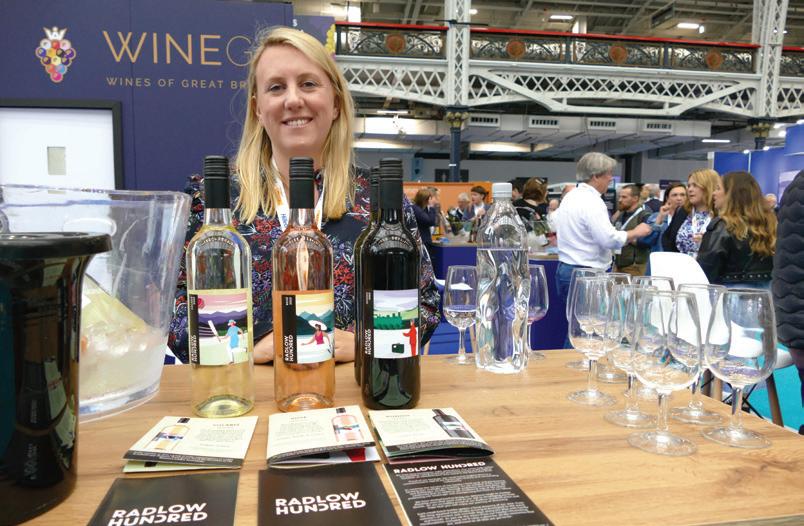
a blend of Madeline Angevine and Rondo. Kimberley explained that there had been many visitors seeking out Giffords Hall to specifically ask about English red wine and that there are plans for Giffords Hall to release a red wine magnum in the future.
Radlow Hundred were present for the first time offering a white, rosé and red wine.
“There has been a mixture of representatives of both the on trade and off trade and the response to the wines has been good,” said Tilly Morgan on Tuesday morning.
Folc were present as a Solo Brand for the first time at the London Wine Fair 2024. Georgie Paget was really busy for all three days of the show. “There has been lots of recognition of the brand,” she said. With a distinctively decorated bottle the 2023 vintage had only been released at the beginning of May.
Lyme Bay winery were also able to showcase their award winning wines and winemaker Sarah Massey said of the Lyme Bay Chardonnay: “It is a small batch, single estate wine that pushes the boundaries of English Chardonnay. Fermented and aged in 100% new

French oak gives it a definitive style, though the heavy gun flint is balanced by the ripeness of the fruit; one for aging.”
The London Wine Fair is always able to provide visitors with something a bit different and this year was no exception. The team from Vineyard Magazine was pleased to meet Simona Fiscu who introduced another truly striking product, Elixsea underwater aged wines available exclusively in the UK through Sirens Amphora. The bottles are aged underwater in the Mediterranean off the coast of Spain creating an environment for sea creatures to colonise. The process not only keeps the wines at a constant temperature, light level with continuous movement but the wines age faster providing a quicker route to market. The limited edition Priorat D.O.C red wine LegaSea 2019 is a blend of Grenache, Carignan, Syrah and Cabernet Sauvignon aged underwater for six months at a depth of 26m. Each bottle shows signs of the unique aging environment and has provided shelter on the ocean floor for numerous lifeforms that are essential to the planet. <<

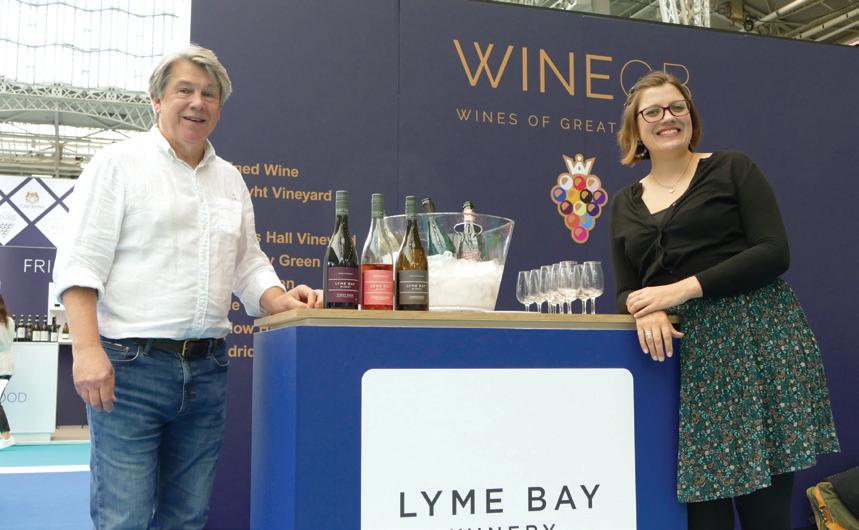
14 14
LONDON WINE FAIR


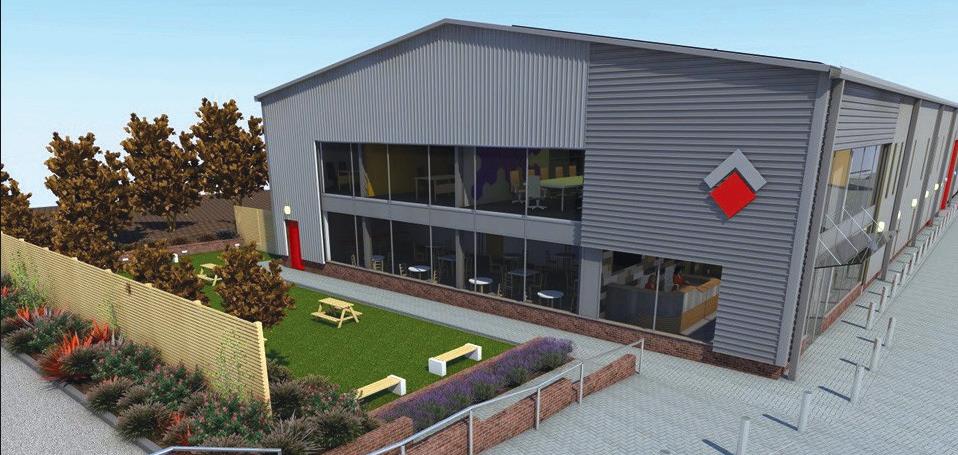

ORCHARD DAY - THURSDAY 20 JULY - 10AM - 3PM VINEYARD DAY - FRIDAY 21 JULY - 10AM - 3PM


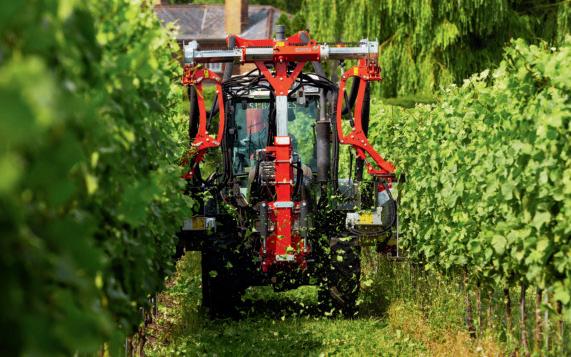




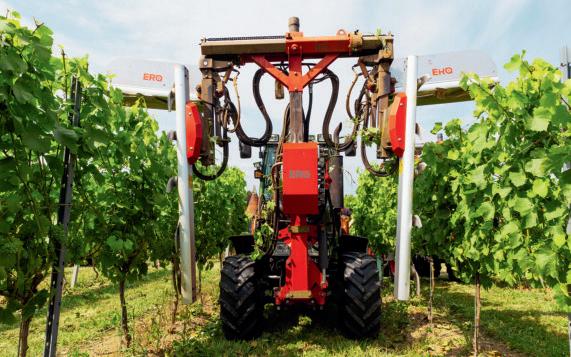












15 15 www.gjelgarconstruction.co.uk For more information contact us: t: 01233 623739 m: 07860 414227 e: office@gjelgarconstruction.co.uk • Steel frame buildings • Building conversions • Sheeting and cladding • Refurbishment and change of use • Demolition and asbestos removal • Groundworks and drainage G. J. ELGAR CONSTRUCTION Ltd • Concrete flooring and external concrete
Concrete frame and steel frame repairs
Internal stainless-steel drainage
Insurance and general repairs
Guttering and repairs Avon Works, Cranbrook, Kent, TN17 2PT • 01580 71220 0 • sales@npseymour.co.uk • www.npseymour.co.uk CELEBRATING 50YEARS NP
Catch up with the NP Seymour team and fellow growers while watching a range of specialist fruit and vine machinery at work.
•
•
•
•
SEYMOUR’S MACHINERY DEMONSTRATION DAYS
Baxter JULY 2024 | VINEYARD
Amsbury Farm, Hunton, Kent, ME15 0QY, by kind permission of Clive
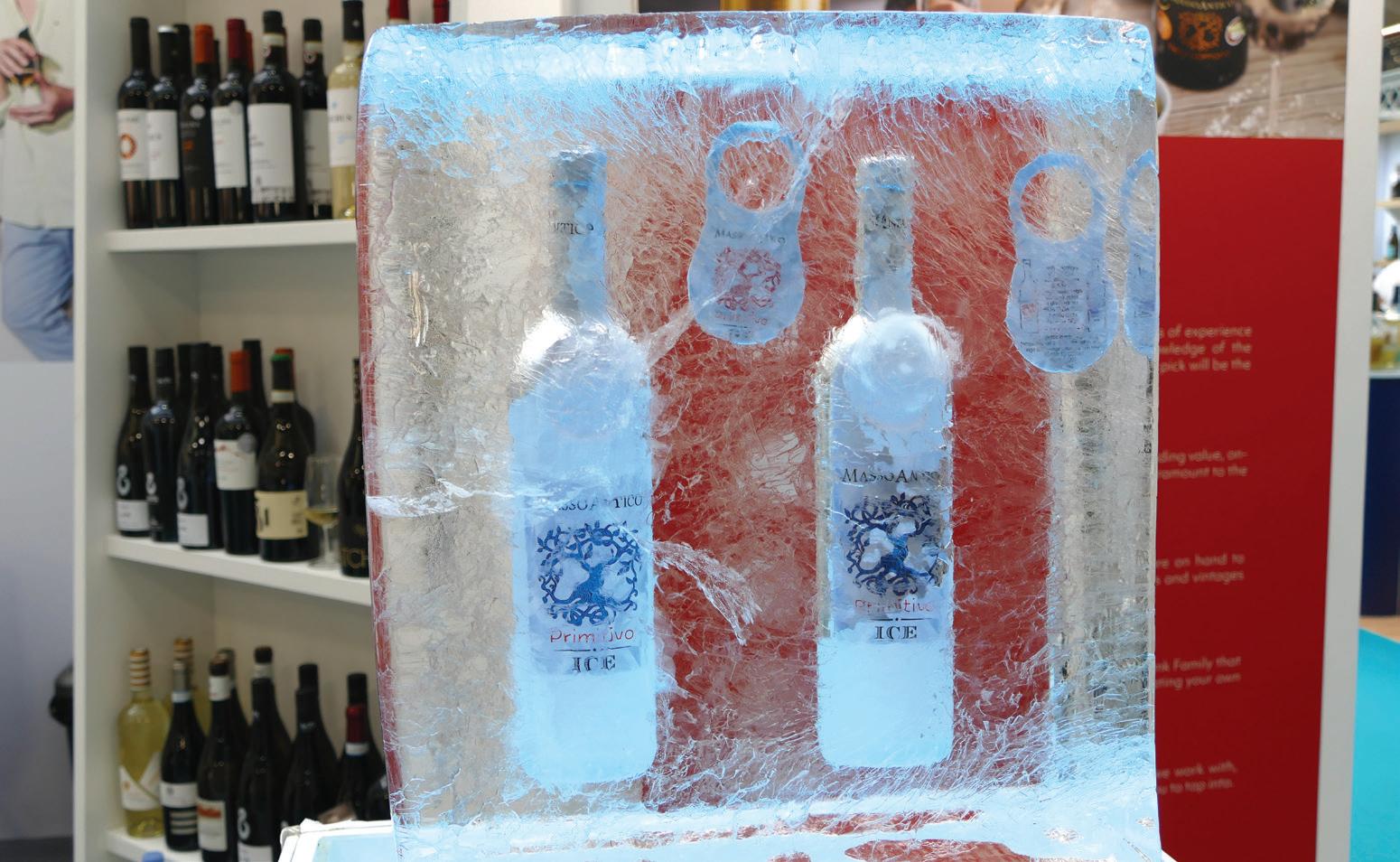
<<
Loxwood Meadworks in West Sussex produce English Honey Wine with a surprising balance of honey and acidity this includes both sparkling wine made in the traditional method and still wine. Owners Danny Bacon and Emily Lambert were once again at the show with a brand new exhibition stand that attracted a constant stream of visitors throughout the three days. Loxwood Meadworks are going from strength to strength and the new stand really helped showcase the outstanding attention to detail that goes in to every one of their products.
Also returning to the London Wine Fair for a second time, The Canned Wine Company, had a large stand with a perfect area for sitting and chatting to customers and buyers. The stand was so busy throughout the show that it took three attempts for Vineyard magazine to finally catch up with Ben Franks the CCO and Elena
Whitehead from the marketing team of this interesting company.
Ben explained that The Canned Wine Company was about providing a quality wine in a smaller package. Working closely with regenerative vineyards and offering light weight packaging the company has really embraced sustainability.
“This year we have had so much positive feedback about the quality of the wine rather than conversations about the can format,” said Ben. This indicates that the company is achieving its ambition of appealing to serious wine drinkers who do not always finish a bottle. With over 95% of sales to large venues such as exhibition centres, theatres, sports events, hotels and cinemas the company is also helping these events to reach their sustainability targets and the company will also be working with Waitrose later in the year.
Currently the company have wines from Austria, France, Spain and Italy so for Vineyard Magazine the conversation inevitably turned to whether the company will add an English or Welsh wine to the portfolio. “The can is a reductive environment and the price point are the biggest issues, but it is definitely something we have thought about but we won’t do it half way,” said Ben. Every time The Canned Wine Company launch a product they go to great lengths to ensure the quality is in line with the brand ethos.
Throughout the three days of the show, visitors were treated to talks, debates and masterclasses. On Monday morning the Malbec grape variety was put under the spotlight with the tasting entitled “Argentinian Malbec from humble beginnings to international superstar.”

16 16
<<


Over 100 wines at trade tasting
Defined Wine's trade tasting took place at Yeomanry House on Tuesday 18 June.
Press and trade visitors were able to sample over 100 wines ranging from barrel aged Chardonnay and Pinot Noir through to Rosé, pet-nat and Traditional Method sparkling wines from 25 producer clients. See our special report on Defined Wine's plan for a new contract winemaking facility in Essex on page 44.
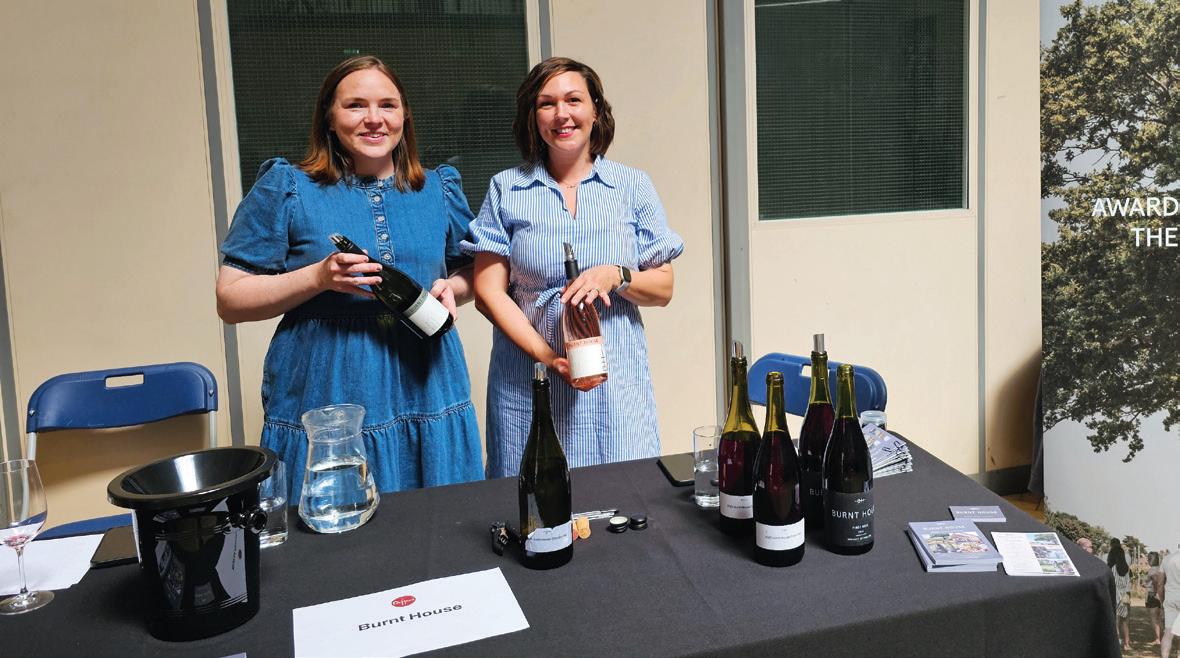
17 17
Henry Sugden and Nick Lane from Defined Wine
RELIABLE CLOSURES THAT HELP SEAL, PROTECT AND ADD VALUE TO BRANDS Quality Stoppers and Closures Since 1774 +44 (0)1844 203100 sales@rankincork.co.uk rankincork.co.uk CROWN CAPS SPARKLINGWINECORKS TIN &POLYLAMCAPSULES HEATSHRINKCAPSULES FOILS STILLWINECORKS WIRE HOODS JULY 2024 | VINEYARD
Photos: Alice Griffiths

<<
Hervé Fabre talked about a variety of wines including Vinalba Reserve Malbec 2022 grown at 1,300m altitude in Mendoza. He explained that in this region it is necessary to grow grapes at altitude in order to attain freshness but that at this height yields are reduced in order to achieve ripeness. In comparison The Vinalba Patagonia Reserve Malbec 2022 from the Rio Negro province of Patagonia is grown in sandy soil close to the sea and the mountains with temperatures of 30°C during the day and 10°C at night allowing the very old vines to produce balanced wines with higher acidity and greater finesse. The final wine of the session was “an example of extreme planting at 1,560m and extreme winemaking,” said Hervé. The blend was 65% Cabernet Franc with 35% Malbec and 5% Cabernet Sauvignon. A great way to finish a fascinating tasting of the Malbec grape.
Vineyard Magazine also caught up with producers from Ukraine who were all attending as part of the Wines of Ukraine exhibit at the London Wine Fair. The stand was large and the exhibitors were welcoming. It was great to hear producers (and the many Ukrainian volunteers who had freely donated their time) talk about the wines that are still being produced despite the ongoing war. The stand highlighted the unique aspects of the Ukrainian wine industry and was surrounded by a wonderful busy atmosphere.
Biologist Craft Winery have a selection of wines available in the UK. Two wines from the craft winery utilise the Aligote grape although that is where the similarity ends. The non-filtered spontaneous ferment wine and the filtered wine that has spent nine months in new French oak barrels show the versatility of this grape.
Natalia Burlachenko of Big Wines was available to talk about the Odessa Black Grape which is indigenous to Ukraine. The wines from this grape grown in the South of Odessa benefit from low night time temperatures and high sunlight hours. The day time temperatures in the region reach 40°C. “The wines show interesting depth with a velvety finish,” Natalia said.
Also highlighting unusual grape varieties were Frumushinka-Nova, a family owned winery who have produced a limited edition wine from Suholimanske which is a grape that originated as a crossing of Chardonnay and Plavai from the 1960s.
Chateau Chizay had many unique wines that really highlighted the long winemaking history of the region. Carpathian Sekt 2023 is a single varietal sparkling wine made in the Charmat method from Chersegi grapes.
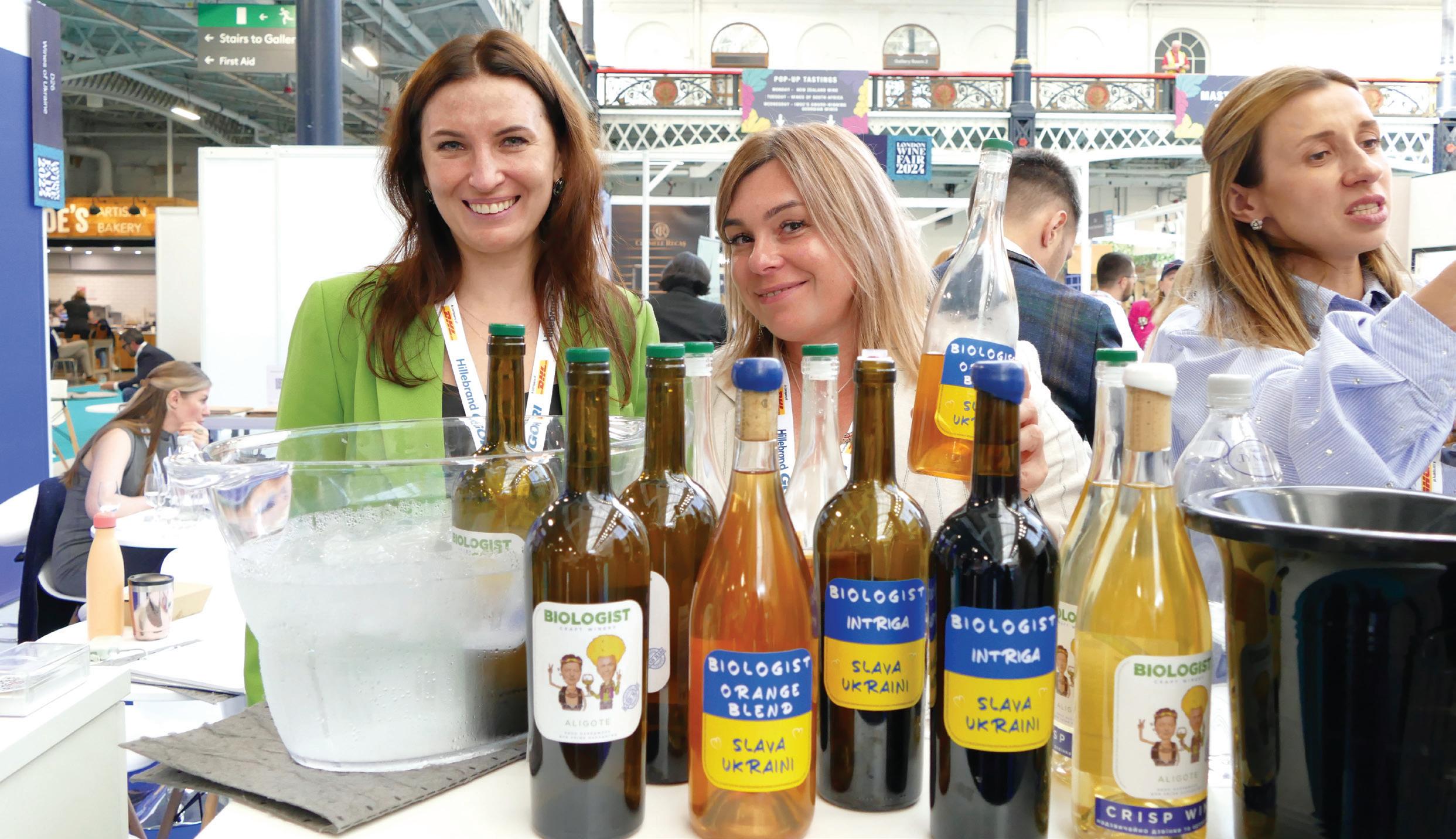
18 18

Experts in your field

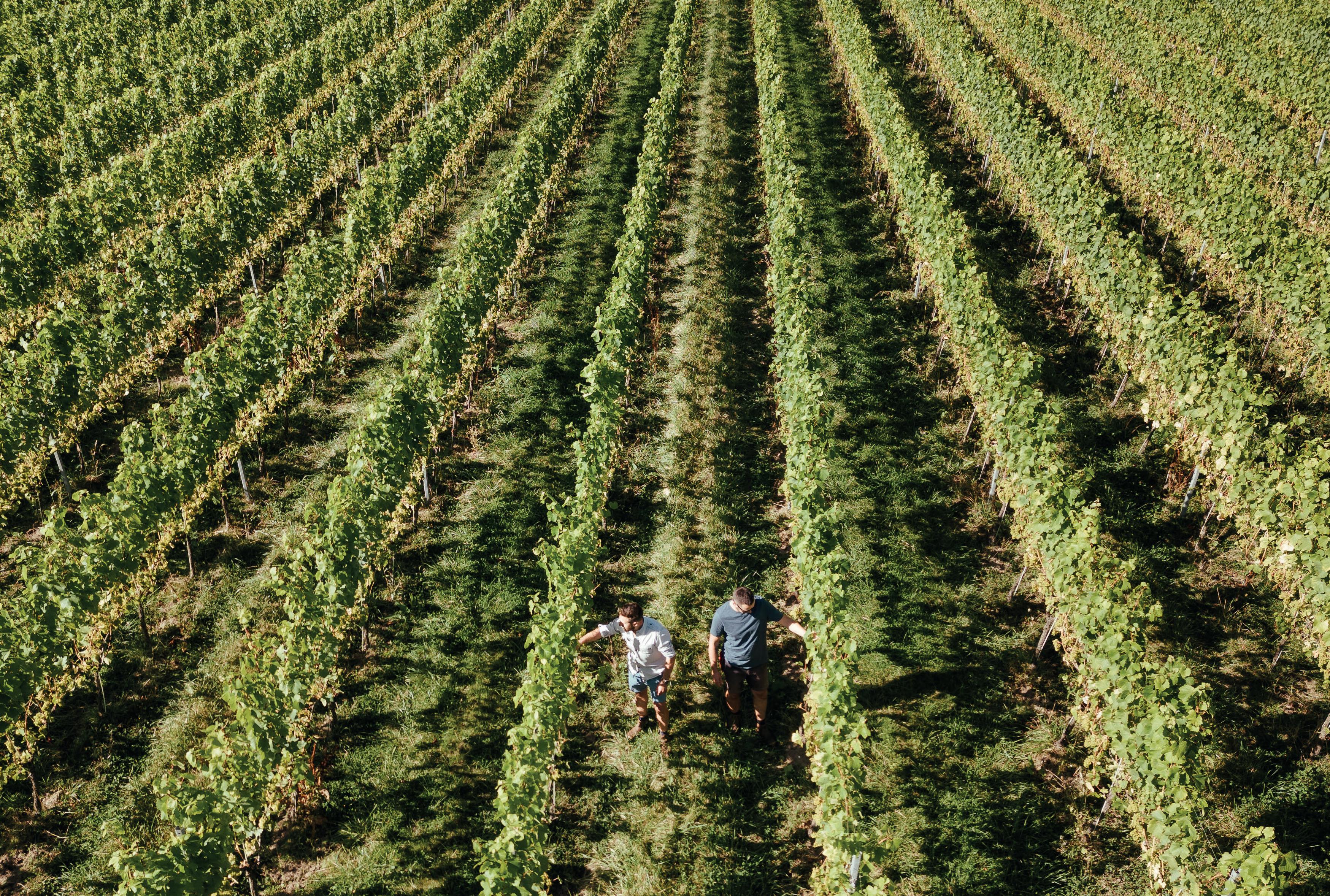
Vinescapes is the UK’s Premier vineyard and winery consultancy - precision viticulture from ground to grape to glass. Our team have the knowledge and expertise to deliver exceptional vineyards, which lead to exceptional wine.
When it comes to your vineyard or winery, we take care of everything. We’re a turnkey solution, get in touch, and we’ll show you how we can make it all happen for you.

Vineyard Site Evaluations Vineyard Establishment Vineyard Management Winery Scoping & Design Winemaking Consultancy Research Training Investment Advice 01306 733960 | INFO@VINESCAPES.COM | WWW.VINESCAPES.COM
SILVER PATRON
Insights
Key learnings from our project on establishing cover crops.
DEFRA’s Farming Innovation Project (FIP) has funded a two-and-a-half-year project, which commenced in 2022, specifically to support the research into groundcover management practices, with the aim to increase productivity and sustainability in UK viticulture. With vines only covering approximately 15-20% of the vineyard, exploring these groundcover management opportunities, with their impact on soil health, yields, juice quality and emissions, is important and with limited research in this area, many vineyards are looking for further support.
The project has been delivered by a consortium of participants, with groundcover management trials held in the Kent vineyards at Gusbourne Estate, Chapel Down and NIAB East Malling, cover crop seeds and agronomic advice supplied by the seed merchant T Denne & Sons, scientific research delivered by NIAB East Malling and the Natural Resources Institute (University of Greenwich) and support by industry consultants and researchers Vinescapes.
The aim of the project was to compare soil health, vine growth and wine quality between a range of inter-row cover crop treatments, as well as different under-vine management methods. The cover crop treatment mixes included phacelia, faba bean, an annual mix of rye and vetch, and a perennial mix containing creeping red fescue and three clover species. The control treatment consisted of alleyways that were maintained as before, with natural and spontaneous vegetation that is regularly mown.
Comprehensive testing has been conducted during the trial, to fully understand the impacts for grape and wine production, including measurements of soil health parameters such as soil organic matter, nutrient content, microbial biomass carbon, water infiltration, compaction, and extractable nitrate; vine performance parameters including canopy volume (LiDAR), leaf nutrient analysis and chlorophyll, flavanol and anthocyanin measurements. Grape and wine analysis was also undertaken with measurements of pH, Brix, tartaric acid, malic acid, PAN, ammonia and YAN. Vines have
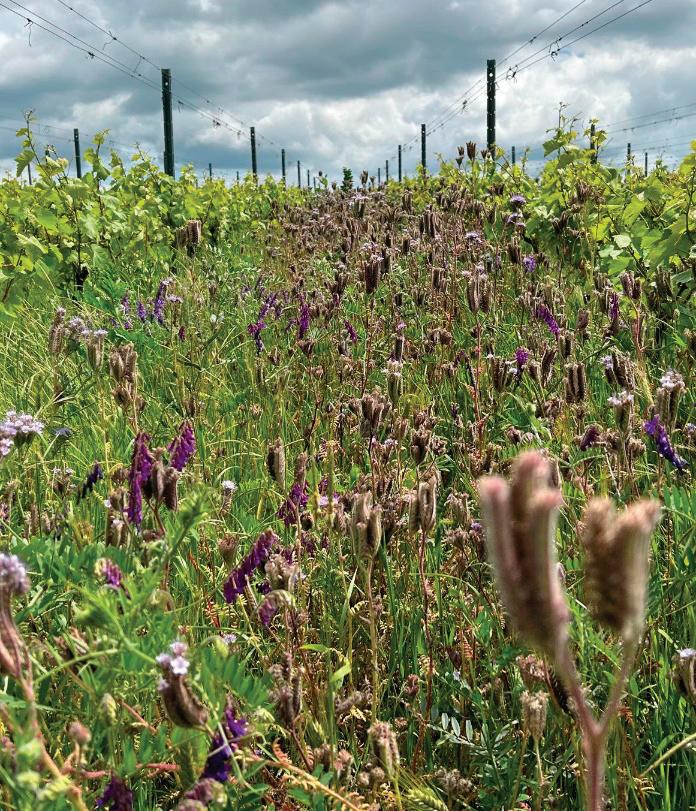
been planted at
to enable future root studies, including vinecover crop root interactions, and soil sampling at depth.
The project is now in its final six months and before we present the final results, here are some interesting insights (from the project team) into establishing the cover crops:
◆ Timing is everything – Poor establishment of the cover crops was encountered in the first year of the experiment (2022) due to the extremely hot and dry conditions that prevailed from March onwards. Selecting the planting time is therefore critical and this became easier with more experience of each crop type.
◆ Competition – Grass competition was higher than expected at some of the vineyard trial sites and we needed to re-establish the cover crop to facilitate

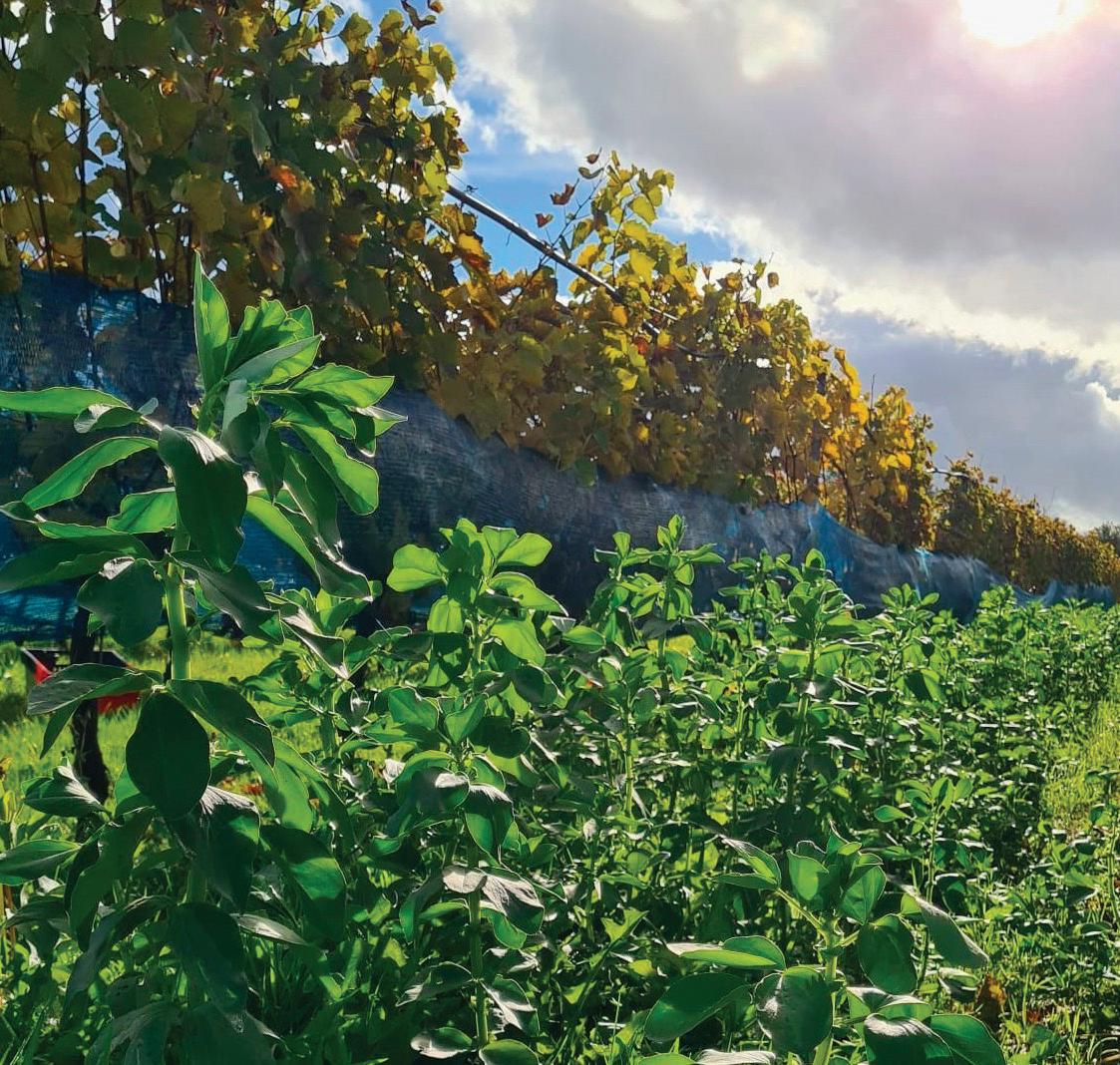
the regeneration of the biodiversity both above and below ground.
◆ More than a year - As the soil condition improved we have seen an increase in cover crop success year after year with the added benefit of the seeds in the soil, be they indigenous or previously planted by the trial, thriving together with the newly planted cover crop.
◆ Soil types – The effects of cover crops on soil properties are strongly controlled by the soil type. Values can move in different directions after planting the cover crops depending on whether you are in a more clayey or sandy soil.
We are looking forward to analysing and sharing the final results from the project with the UK sector later this year.
For more information please contact info@vinescapes.com.

20 DESKTOP www.vinescapes.com ✉ info@vinescapes.com phone-alt 01306 733960
GRAPE GROWING
also
the NIAB EMR Rhizolab
Chapel Down: Phacelia
JULY 2024 | VINEYARD
NIAB East Malling: Faba Beans












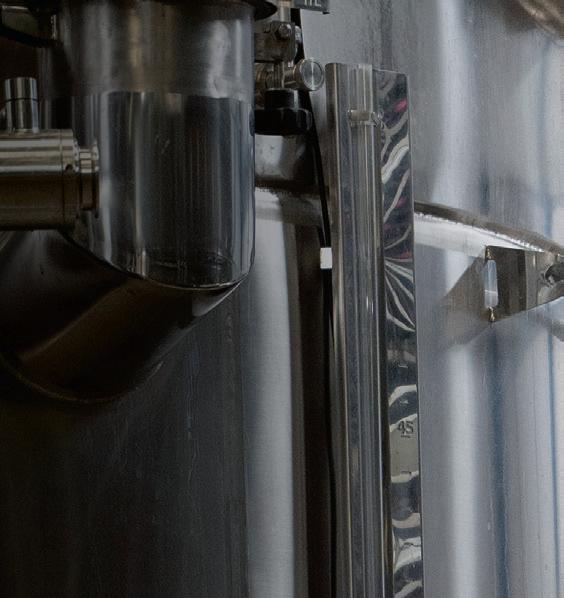





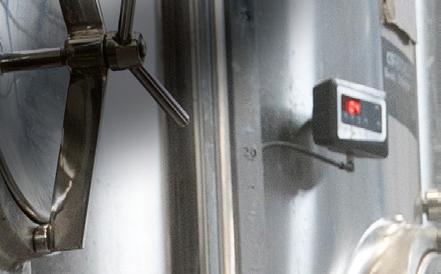



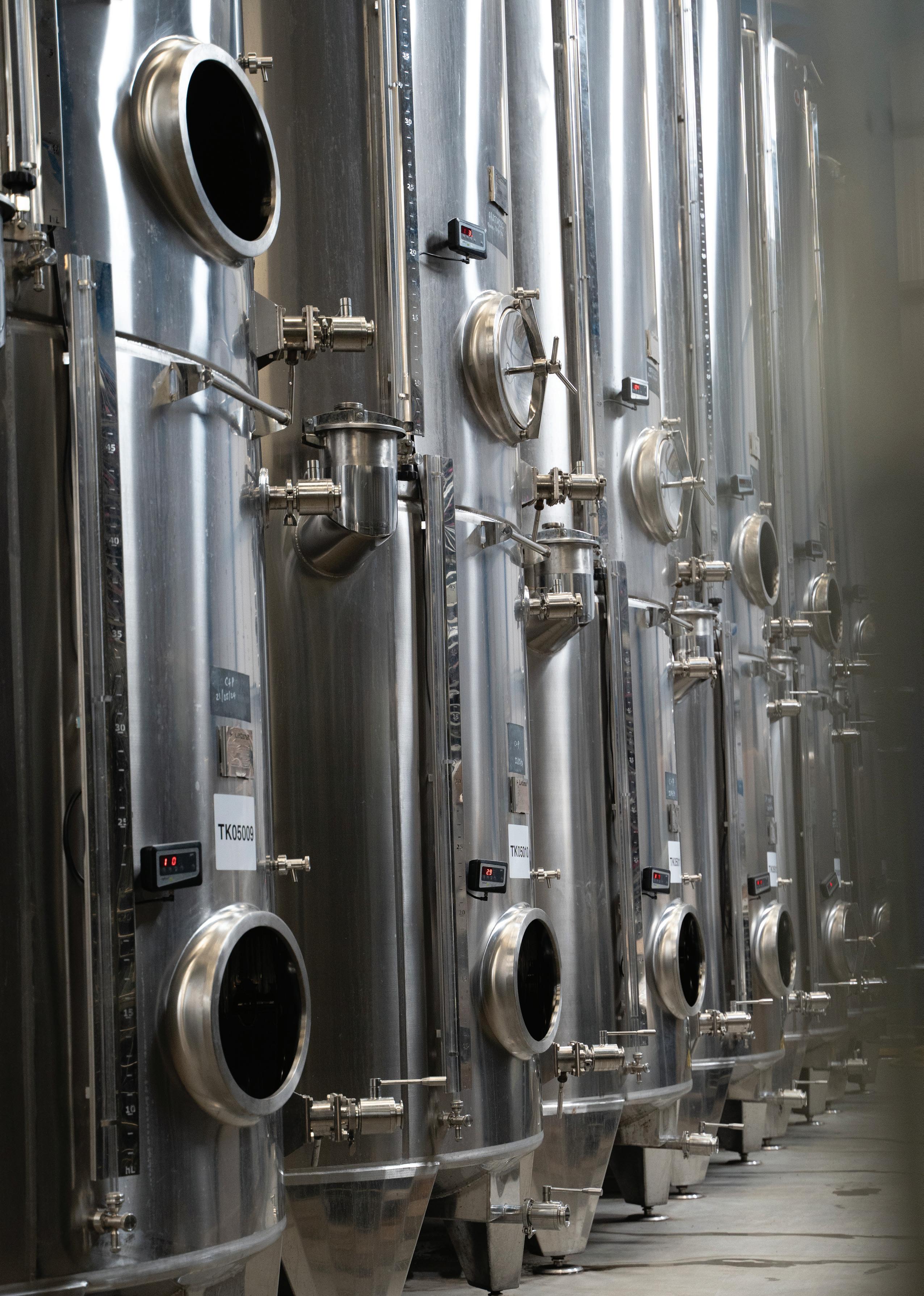



CONTRACT WINEMAKING AVAILABLE IN 2024 - Complete service - pressing to bottle - Bespoke winemaking & consultation - State of the art winery with expert, friendly staff - Competitive costs - Award winning winery - Contact us to discuss 2024 harvest - Email: trade@highwealdwine.com
A whole lotta rosé
Rosé is fast to produce, quick to the shelves and repays you speedily with much-needed cash flow.
I should stop reading social media comments. I admire Henry Jeffreys (his book Vines in a Cold Climate is a joy), and I know that many journalists like to think of themselves as provocateurs but writing ‘Is English rose (sic) piss’ really annoyed me. I know it was in jest, and I know it was designed to provoke debate, but it wasn’t funny.
While I have given this comment more airtime than it deserves, the topic of English rosé is one of the most compelling and vital in our home-grown wine business. Rosé should be a style that anyone with red grapes in the ground considers making. It is fast to produce, quick to the shelves and repays you speedily with muchneeded cash flow. It can concentrate red wine production if need be and make a compelling style of wine while enhancing another. Of course, it requires great skill. But every wine style, let’s be honest, requires
every sinew of effort and every neurone to fire true to bring about the alchemy that creates drop-dead, commercially compelling wines that one cannot live without.
Our world is awash with utterly dire pink wines. I challenge you to find any good gear under a tenner on supermarket shelves, and as you move north, price is never, and I mean never, a marker of a more rewarding wine. Making rosé is an art in itself, and those who excel do it with 100% commitment, genuine passion and a profound understanding of the style.

















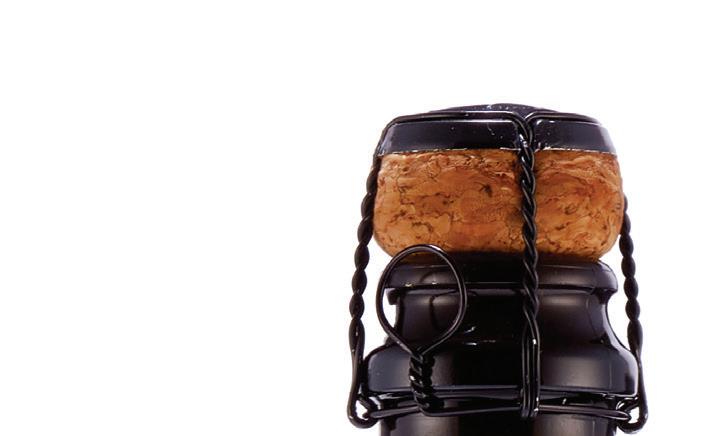

This month, I have tasted more English rosés than ever before, and I can attest to the fact that their qualities and frequency have resulted in the highest number of successful wines in any one tasting session of this style ever. Here are three of the best and a bonus wine from each estate you should grab when you load up with a whole lotta rosé.
2022 dunleavy, Sparkling Rosé, Extra Brut, Somerset
Approx. £31.95
www.dunleavywines.co.uk
www.grapeandgrind.co.uk
www.fiveacre.farm
www.levignoble.co.uk
First, this is a fascinating wine that is as refreshing as any drink I can think of. These primal qualities ought to ensure that it sells extremely rapidly this summer. But there is more beneath the surface.
Every sip has a persistent raw edge, which realigns the senses and brings a degree of tension to the whole. The flavour is akin to marching through an orchard on a crisp, fresh morning, selecting the shiniest and ripest of red apples, taking a razor-sharp penknife out of your pocket and slicing a broad, flat, cool slice of skin with the merest whisper of pale white apple flesh beneath.
Alive, vital, energetic, ever-so-slightly sour and rampantly uplifting, these flavours are found in this glorious sparkling wine. And that is not all. 2022 Sparkling Red (£31.95), which really ought to be called dunleavy Sparkling Rosé+ because it is certainly not red, is a profoundly spicy and toothsome deep rosé loaded with cherryade, fresh mint, root liquorice, fat cranberries, lascivious pomegranate and delicate rhubarb fool blended, sieved and bottled. It is hilarious fun, making the dunleavy duo a force to be reckoned with!
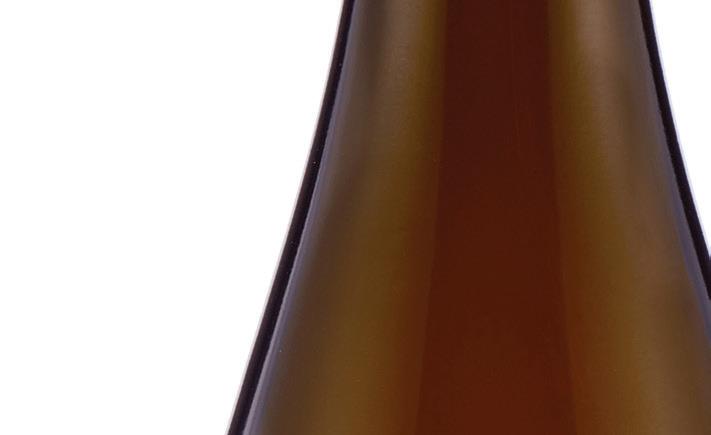










DESKTOP www.matthewjukes.com ✉ vineyard.ed@kelsey.co.uk 22 22
Mathe Juk e s
WINE REVIEWS
JULY 2024 | VINEYARD
Albury’s wines always seem to have an aerial quality that makes them weightless, enchanting and magical.
This thrilling, biodynamic Pinot Noir and Pinot Meunier blend is a work of art with tension, uncompromising length and genuinely impressive flavour layering throughout the experience.
It starts calm and composed and then rises, needle-sharp, into the sky and finally out of sight. While this is undoubtedly one of the best English rosés of the year, it is also one of

the most arresting on an international stage. My bonus wine is 2018 Biodynamic Wild Ferment Blanc de Blancs (£49.95). This is an all-guns-blazing, fabulously decadent, extremely chewy and full sparkler with a flavour that swaggers across your palate like a prestige cuvée Champagne with a threedigit price tag! Unlike Champs, an acid line here makes your teeth bounce, and I do not doubt that fizz fans will delight in the palate gymnastics that happen when this wine assaults their senses.







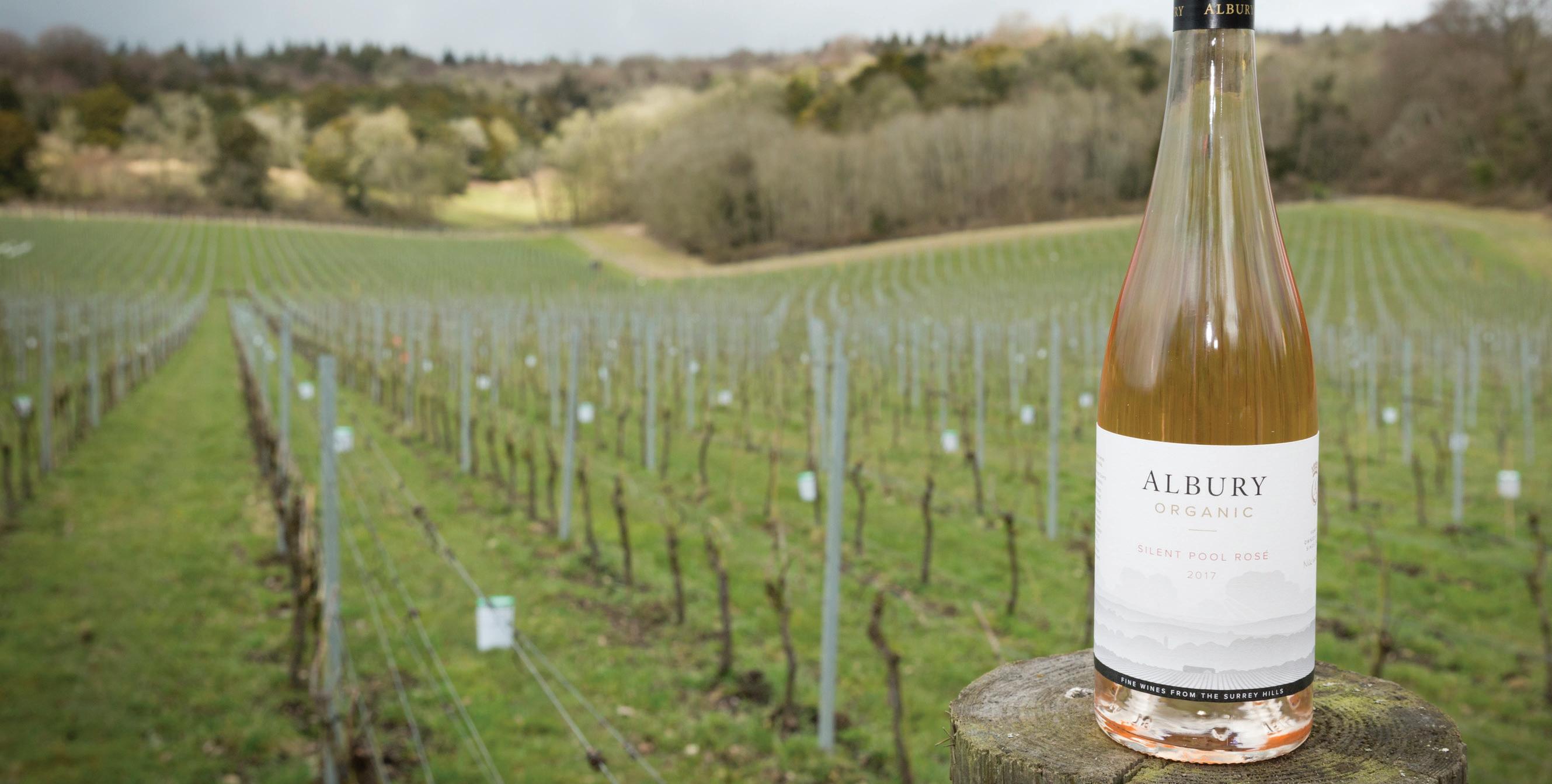

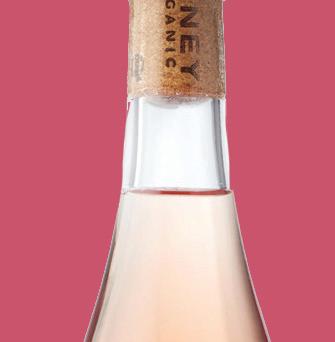



www.waitrosecellar.com
This stunning, mellifluous wine is made from organically grown Pinot Noir and Pinot Meunier, and it is hard to imagine a more indulgent and seamless treat.
Pure, smooth and pleasingly fleshy, with just that little more juiciness and depth than expected, this is a glorious wild strawberry-kissed wine with a dramatic, clean, slate-fresh finish. It is clear that rosé-adoring hands made this wine, and unlike the two other beauties featured in this piece, it is bold enough to cope with a wide range of main course dishes while coping perfectly with lighter, less formal moments.
Interestingly, dusting down my old restaurateur hat, I would have twinned this heavenly creation with elite Indian cuisine, expensive Japanese bites and ethereal Thai recipes thanks to its indelible palate-cleansing abilities. My bonus wine from Oxney is the fiercely impressive 2019 Blanc de Blancs Extra Brut (£41.00).
With blindingly brilliant tension and an attack that belies its slender, alluring silhouette, this is Oxney’s most dramatic sparkling Chardonnay to date.
23 23 2022 Oxney Organic, Rosé Approx. £23.00
www.oxneyestate.com
www.ladyofthegrapes.com
Albury Organic Silent Pool Rosé, Surrey Hills £19.95 www.alburyvineyard.com
www.mothersuperior.co.uk 2023
JULY 2024 | VINEYARD
Returns guaranteed
The terrace at Henners Vineyard gives a wonderful fi rst impression. Looking down over the gently sloping vineyard to the Pevensey Levels beyond, the atmosphere is so effortlessly relaxed that this would defi nitely be one of those rare places where for a few hours the outside world would fade, not just into the background, even beer the stress of modern life would disappear over the horizon.

Henners Vineyard was originally planted in 2007 and by 2009 there were 3ha of Pinot Noir, Pinot Meunier and Chardonnay vines on this site situated in the village of Herstmonceux bordering the Pevensey Levels a Site of Special Scientific Interest.

The now well established vines were originally planted by Lawrence Warr who developed a working relationship with the wine distributor Boutinot. This company that sells more than 44 million bottles of wine a year has become significantly more hands on


over the decades since they initially began trading in the 1980’s. Boutinot now has French Vineyards alongside a South African operation and in 2017 purchased Henners Vineyard with the bumper 2018 harvest being the first under the new ownership.


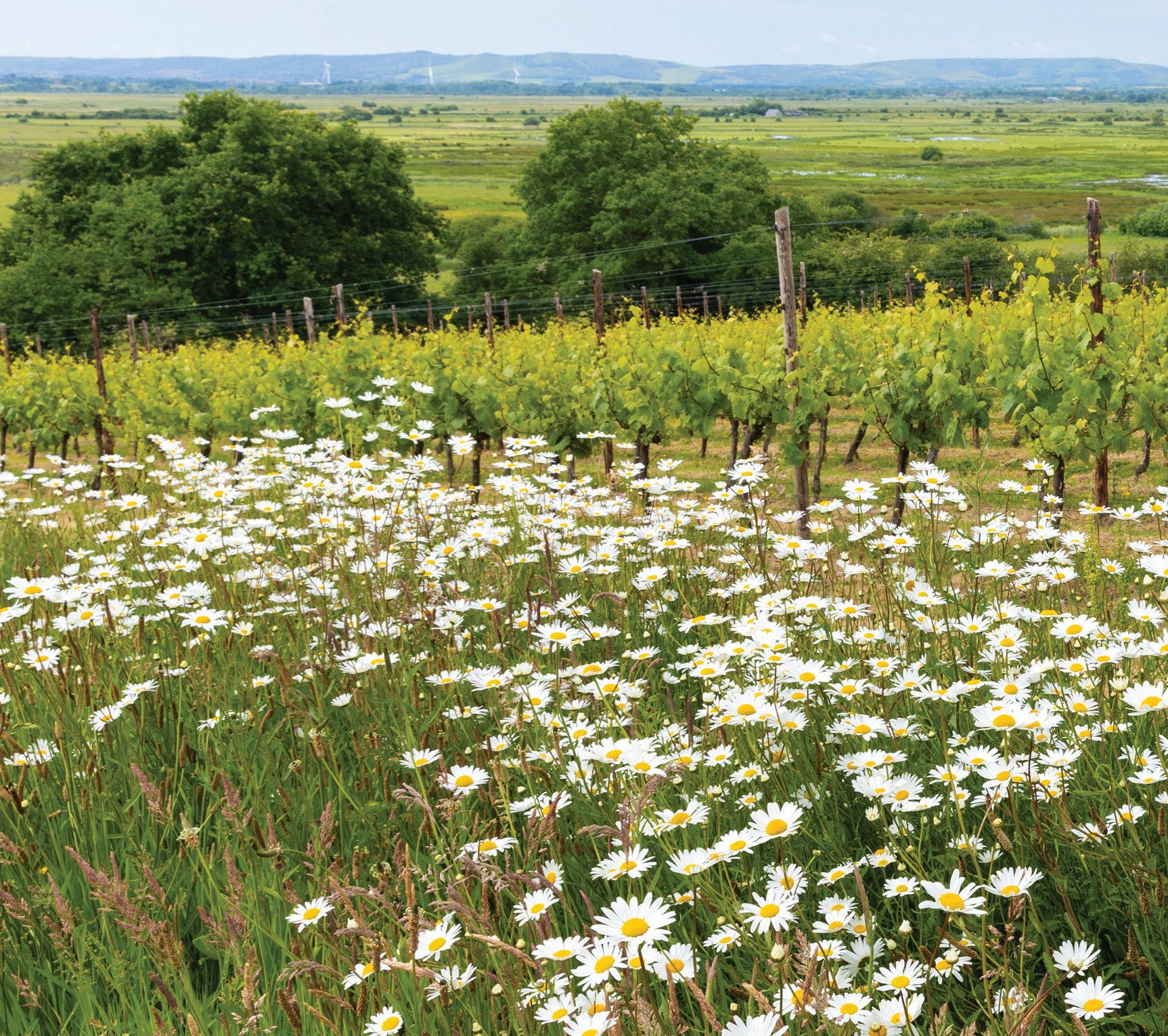
24 24 EDITOR'S VISIT Rebecca Fa er Ed i t o r
Photos: Martin Apps, Countrywide Photographic
The 2023 harvest saw the small team headed by Collette O’Leary process 360 tonnes of fruit. Sam Williams the assistant winemaker explained: “The winery has a maximum production capacity of 300,000 bottles.” The winery has never reached full capacity but has produced 240,000 in a season. 2024 however, will mark a turning point with a far greater focus on Henners label wines and this will give the team greater control over decision making regarding how and when fruit comes into the winery.

With such a large volume of fruit arriving at the winery and also having a harvest on site the conversation quickly turns to logistics. In 2023 Bacchus grapes arrived on the 28 September and the Sauvignon Blanc arrived on 1 November. In a five week period 360 tonnes of fruit were processed by the small team. The Henners fruit is picked over a three day period with the teams in the
vineyard picking around 12 tonnes a day.
“Logistically it is tough at harvest. Collette arranges dates, times and transport and how this fits in to the functioning day and what is physically able to be processed. We have one 4.5 tonne Willmes press and we can process five press loads in a day but that is a long day with split shifts,” said Sam.
There are plans for a storage area to be converted to an area that would allow the winery to have an extra press which would relieve some of the stress caused by simply not having enough hours in a day. “One piece of equipment with such a big harvest is pushing everything to the maximum mechanically as well,” said Sam.

The team at Henners is very small; there is considerable crossover in the jobs and
roles that they undertake and with such a tight harvest they must all work together.
Beth Killalea, Head of Direct Sales at Henners made a really touching comment: “In terms of teamwork we learned through Boutinot and the French vineyards that everyone breaks for lunch and we have a cooked lunch everyday of harvest. It is very much the team coming together no matter how the day is going.”
Sam added: “It is timed around the press load and over the years we have learned the art of one pot meals and we all chip in.”
Henners has been in expansion mode since 2017 and has ambitions for further growth, with investment plans in the winery, production, vineyard and tourism facilities. This has seen them seek out long-term partner vineyards to work with. <<



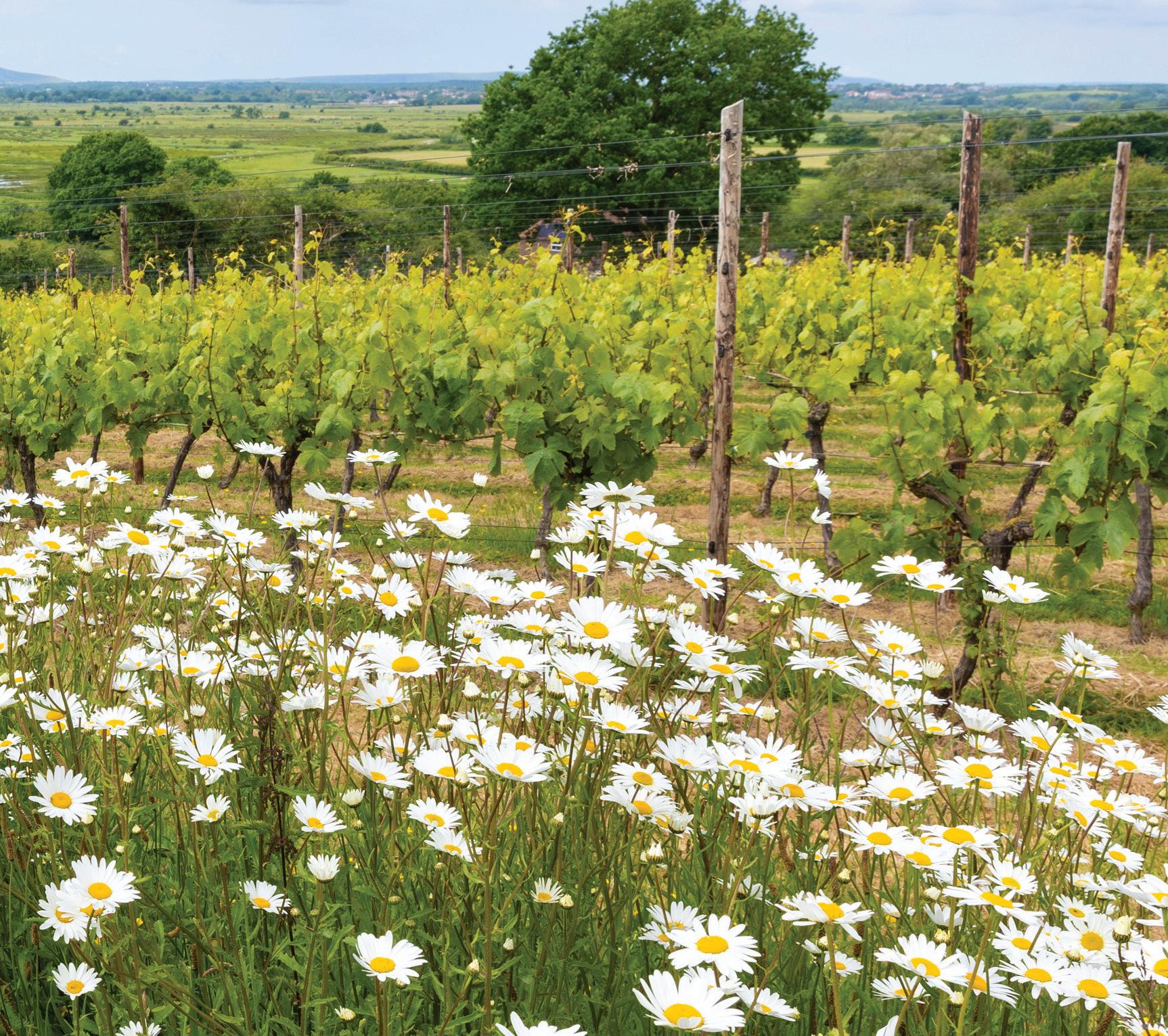
25 25
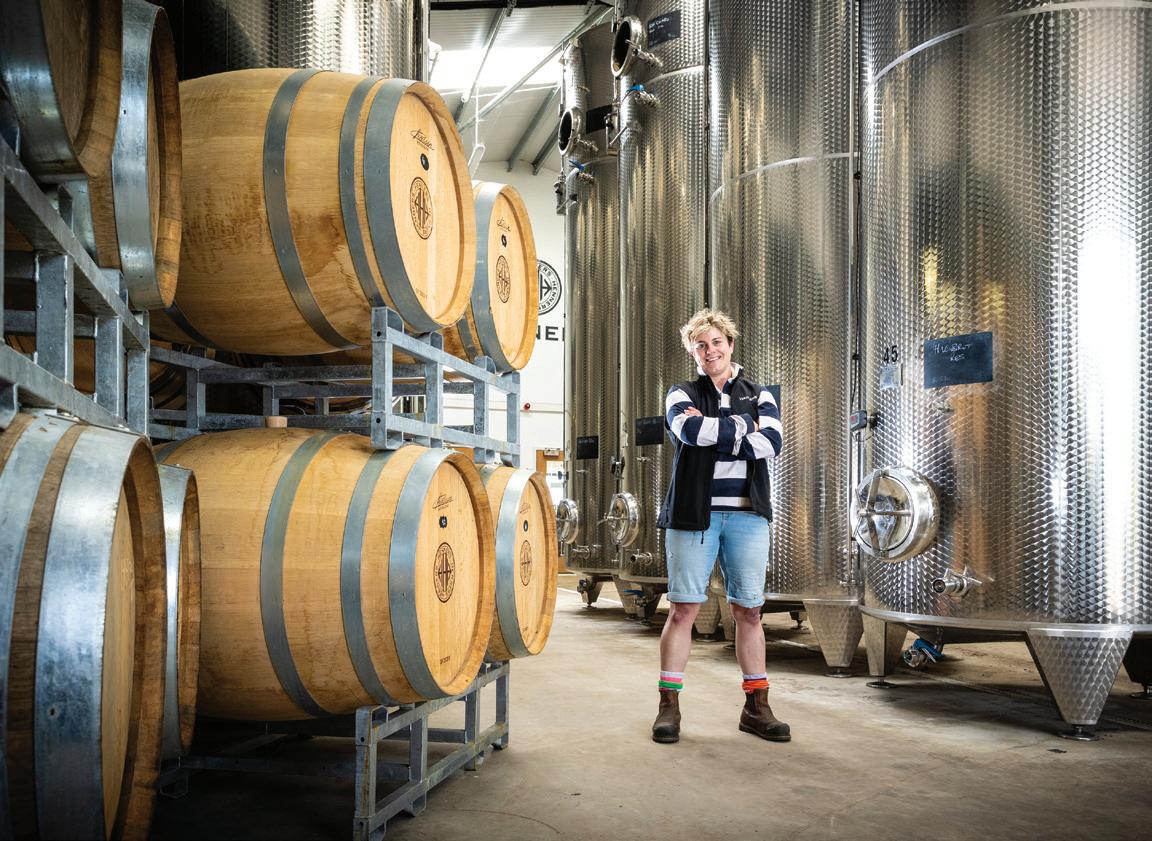
“Having longer term contracts with growers allows us to have conversations around the fruit and the levels of sugars required,” explained Sam. “The team visit the partner growers throughout the year,” said Richard. “Yield estimating early is important. Last year estimating in September was too late, not just for looking at a green harvest but from a winery capacity point of view as it does not give sufficient lead times. We start our estimates at the end of July the minute we are through flowering and have seen fruit set,” explained Sam.
Growers working with Henners are able to benefit from the knowledge and skills of Collette and her small team and often seek advice “I get text messages with pictures that

ask how to deal with certain things in the vineyard,” said Richard. His calm confident demeaner ensures that those growers (who may be in their first few growing seasons) will feel they have plenty of support as they improve their own skills. “We have a small site and we can really hit all the points in the season and then take these to the growers and offer them advice on what has worked but it is still their decision whether or not to use those techniques,” he said.
“Also we talk about the type of wine that the growers would like the grapes to produce. For example one of our partner growers would like some of his grapes to make a still wine and then our advice would be to section that block off and look at the yield because that will
"Having longer term contracts with growers allows us to have conversations around the fruit and the levels of sugars required"
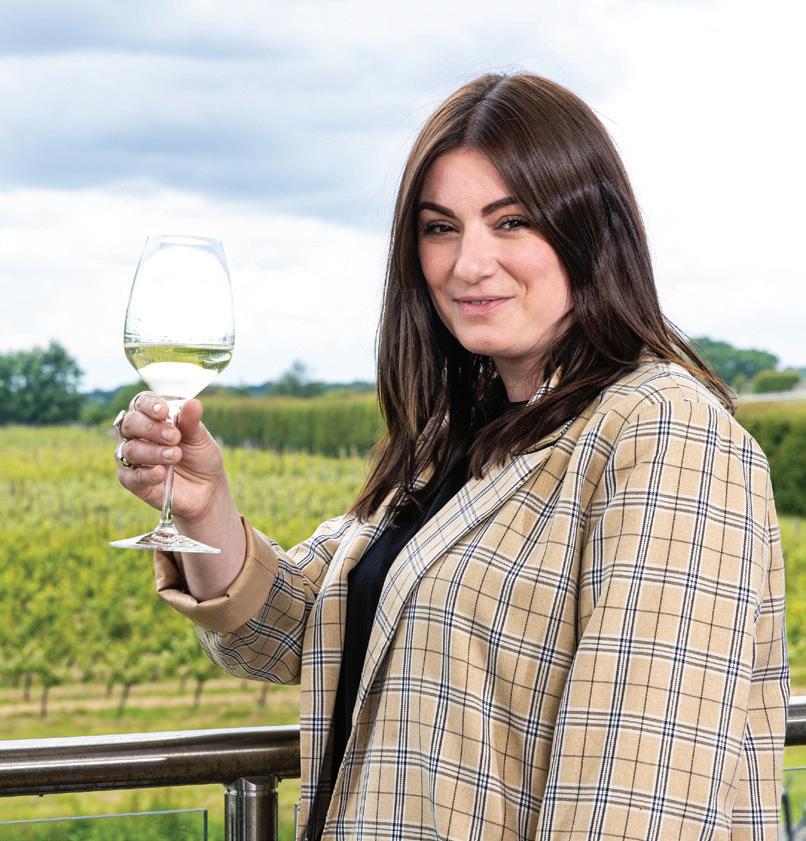
have to be lower. Our advice would then be if you are expecting eight tonnes per hectare for sparkling then you will need to lower your expectations and crop thin early to achieve higher sugar levels for still wines,” Sam added. The vineyard at Henners aims to produce around eight to ten tonnes of fruit per hectare each season. However grower partnerships are an important part of the wines produced by Henners. Sam explained: “We wanted to develop long term relationships with partner growers rather than working season by season.” This model allows the winery team to work with varieties such as Bacchus, Pinot Gris and Sauvignon Blanc. “The Winery is set up with stackable tanks so that we can better focus on individual parcels and how they are fermented,” said Sam.
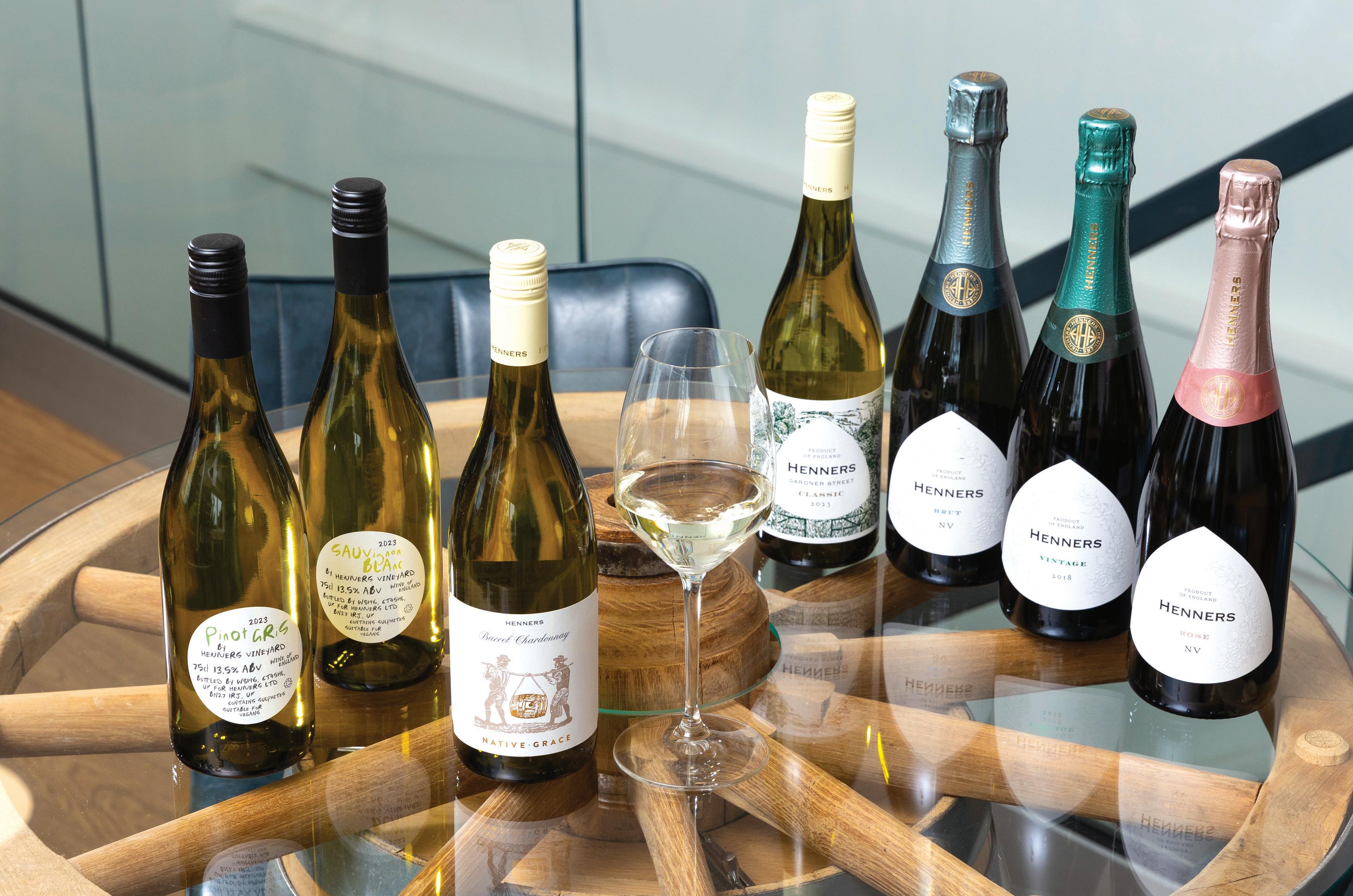
<<
Beth Killalea
Collette O’Leary
26 26
Sam Williams
When Sam explained the unique nature of the winemaking at Henners she uses an analogy that shows how deeply she believes in the quality of the wines that are produced at Henners. “It is like a piano, the more keys that are on the instrument the more complex the tune that can be achieved. Using the small stacking tanks and playing with a mix of parcels from different sites brings a mix of clay, chalk and greensand to the melody.” This is all made possible by the relationship with partner growers whose geographic locations include Essex, Suffolk and Kent. “There are some newer plantings with partner growers that will be coming online this year,” added Sam.
With this system Henners have seasonal wine making flexibility around a solid core of award winning wines. These small batch wines also increase the visibility of the brand as a whole and appeal to both existing and new customers. The labelling of the wines is also designed to recognise their unique nature. “We have been able to produce wines that are for sale at the cellar door such as small productions of Pinot Gris that are not part of the traditional Henners offering of sparkling wines or the still Gardner Street White and Rosé,” explained Sam. “Being owned by Boutinot we have access to such a wealth of winemaking experience across the world and that is such a benefit when dealing with grapes such as Sauvignan Blanc,” Sam added.
The core wines consist of Sparkling Brut NV, Sparkling Rose NV and Gardner Street White and Rosé still wines. The winery has worked hard to ensure that the Brut and the Rosé are blended across vintages so that they are consistent. The word consistent comes up in conversation time and again in connection with the sparkling Brut and Rosé as such a bottle of Henners Brut or Rosé is identifiable from its flavour profile no matter when it is enjoyed.


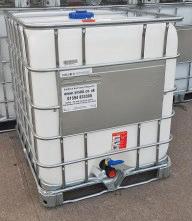


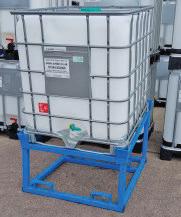
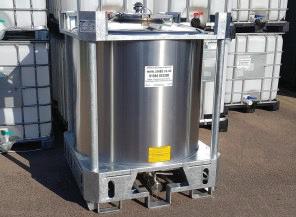

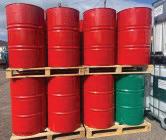
27 27 <<
For independent advice on:
Interpretation of soil and tissue Formulation of nutrient programmes Supply of tailor-made products General agronomic advice john.buchan@btinternet.com 01630 639875 07713 632347 1a. Garden City Tem Hill Market Drayton Shropshire TF9 3QB John Buchan AGRONOMY LTD Vinenutrition: The balancing act For independent advice on: Interpretation of soil and tissue Formulation of nutrient programmes Supply of tailor-made products General agronomic advice john.buchan@btinternet.com 01630 639875 07713 632347 1a. Garden City Tem Hill Market Drayton Shropshire TF9 3QB John Buchan AGRONOMY LTD Vinenutrition: The balancing act Visit www.smdd.co.uk or call 01594 833308 Buy from stock. Visit us to collect or same day dispatch with nationwide delivery. New and recycled IBC tanks. Plastic and steel drums. Water tanks & plenty of fittings. Smiths of the Forest of Dean The Tank and Drum Experts Visit www.smdd.co.uk or call 01594 833308 Buy from stock. Visit us to collect or same day dispatch with nationwide delivery. New and recycled IBC tanks. Plastic and steel drums. Water tanks & plenty of fittings. Smiths of the Forest of Dean The Tank and Drum Experts Visit www.smdd.co.uk or call 01594 833308 Buy from stock. Visit us to collect or same day dispatch with nationwide delivery. New and recycled IBC tanks. Plastic and steel drums. Water tanks & plenty of fittings. Smiths of the Forest of Dean The Tank and Drum Experts JULY 2024 | VINEYARD
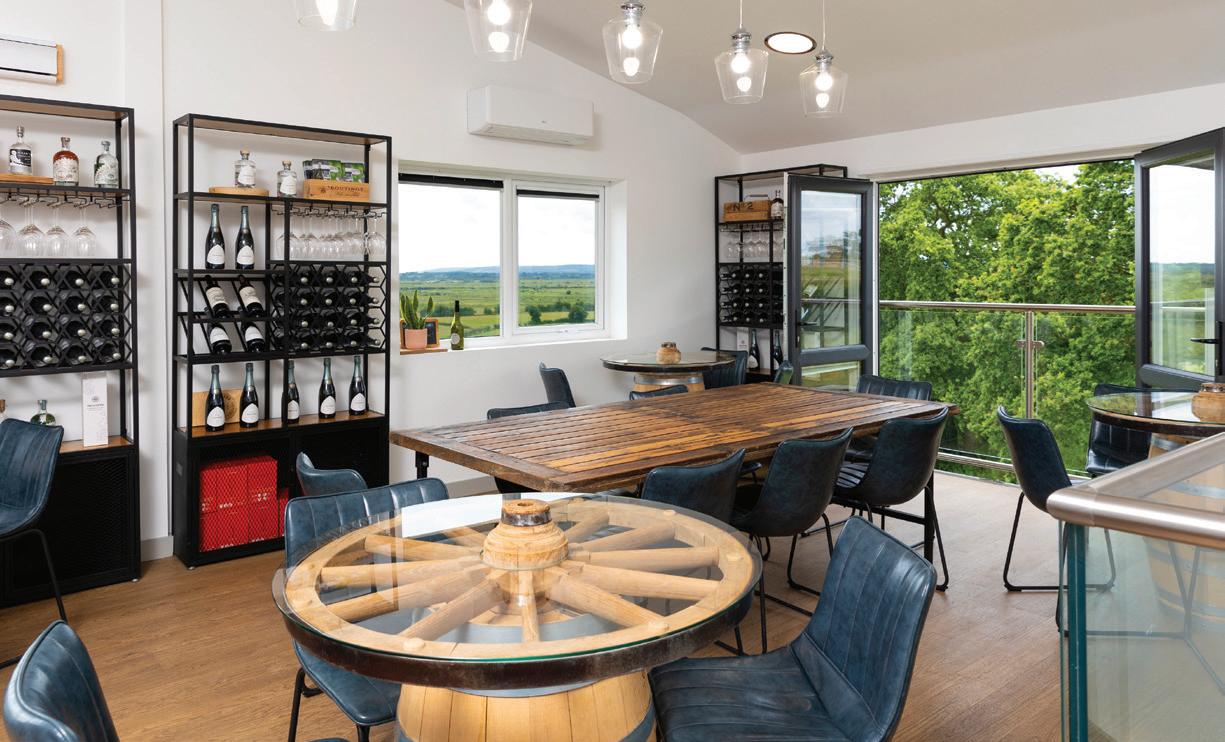
<<
Exceptional years such as 2018 will allow the production of vintage sparkling wines. “All the base wines go through malolactic conversion and that really has become part of the DNA of Henners sparkling. We are never going to lack acidity with our wines so the wines are softer before they go through secondary fermentation and are not just relying on age on lees and they will be consistent,” said Sam.
Walking through the vineyard with Richard Morris, Henners vineyard manager it is obvious that the vines are flourishing. “The vines are flying at the moment which is great but trying to keep on top of it is difficult. May was a big bottling month and so I was out of the vineyard for a few weeks and in that time they have flown up. The first wires are starting to go up now and a second round of bud rubbing is happening at the same time,” he explained. Richard has been at Henners since August so
The Henners team
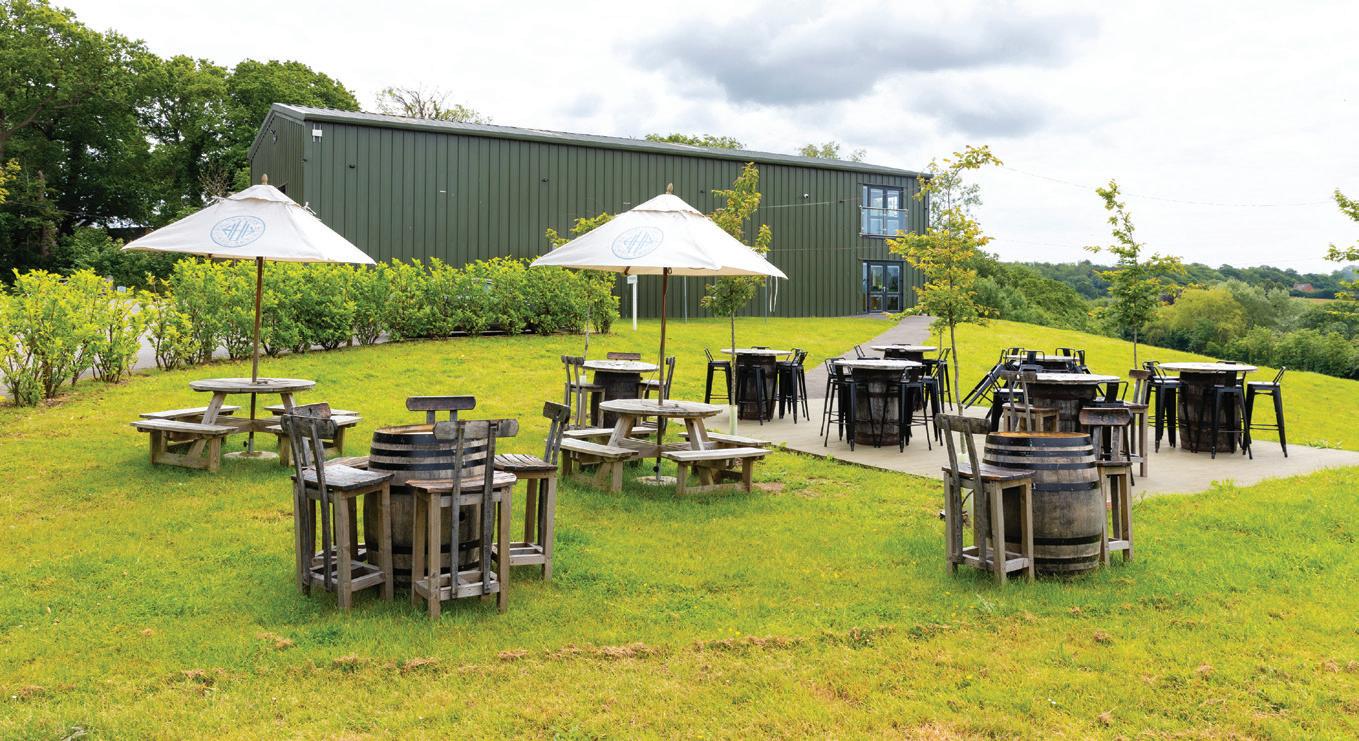
this is his first full season at the vineyard.
“It is a vigorous site and trying to tame it is a struggle but I would prefer it that way than be struggling to produce a healthy canopy,” Richard added. This inevitably leads to a discussion about disease pressure. “This year I have been very alert to possible mildew because it has been very wet but what we really focus on is crown thinning to increase airflow but it is quite an open site and the humidity does not get too high so disease pressure is naturally low,” he concluded.
The wet weather acting on the clay soils has also caused Richard some problems using the tractor in the vineyard. “I wanted this year to put in a cover crop of a brassica mix to deal with some compaction issues in the vineyard but I couldn’t get the tractor on to sow the seeds so that is going to have to be put back to next year, I am now very aware of tractor passes,” he explained.
For under vine management the vineyard use a boisselet but again it was so wet that by the time is was able to be used it was struggling to cope with the dense weeds. “It is a bit like a boxing match and you win some rounds and you lose some, this year we lost a few rounds to the weather,” said Richard showing the patient side of his nature.
The 2023 yield was large and so the team will be trying to manage yield this year and not stress the vines. “We had a huge yield in 2018 and a large yield in 2019 but across the UK in 2020 yields were down 40% due to berry size, bunch numbers and a dry year,” said Sam with a note of concern in her voice. “We know that the site will comfortably produce eight to ten tonnes a hectare so that will be our aim,” she added.
With the beautiful backdrop of the Pevensey Levels so much a part of the experience at Henners Vineyard it is part of the ethos of both

28 28
Photo: 5degreeswest
The 2023 yield was large and so the team will be trying to manage yield this year and not stress the vines.
the vineyard and winery to ensure that the environment is safeguarded for the future.
“We have bat boxes and bird boxes for integrated pest management and we have noticed that the moth and caterpillar populations we don’t want in the vineyard are actually under control. We don’t have to use sprays,” said Richard.
There is a rainwater harvesting system in place which means that the vineyard and winery is not a drain on the natural resources of the area in which it sits. “Even if we are adding a nutritional spray to the vines we are using the harvested rainwater and that system works really well,” added Sam. The vineyard makes use of biological sprays that are designed to increase the natural defences of the vines and are looking at long term studies that will hopefully allow a move away from sprays to control powdery mildew.
“We did have some SWD last year as did many vineyards so this year I have planted some plants in the hedgerows that have red berries and trials show these plants act as dead end hosts for SWD meaning the larvae do not develop. So we will see how that works through this season,” explained Richard.
It is perhaps surprising that bird predation of the grapes is not considered a problem. “There are a couple of rows of Meunier that the birds will go for but they have not gone through the vineyard; those are almost sacrificial rows,” Richard said with a smile. Sam pointed to the number of Birds of Prey in the area such as Buzzards and Kestrels as a reason for the bird population remaining in control.
There is also a dedicated wildflower strip planted on what had formerly been a line of Alder trees that had created a pocket of humidity in the vineyard. Native wildflower seeds were sown over two years ago and finally in 2024 the vineyard has a beautiful flourish of flowers. “It has been part of our vineyard tour for so long where we explain the purpose of this strip and finally this year it is in bloom and it is really pretty,” said Sam with a triumphant grin. The strip will again serve to increase biodiversity in the vineyard and as we are standing next to this area the
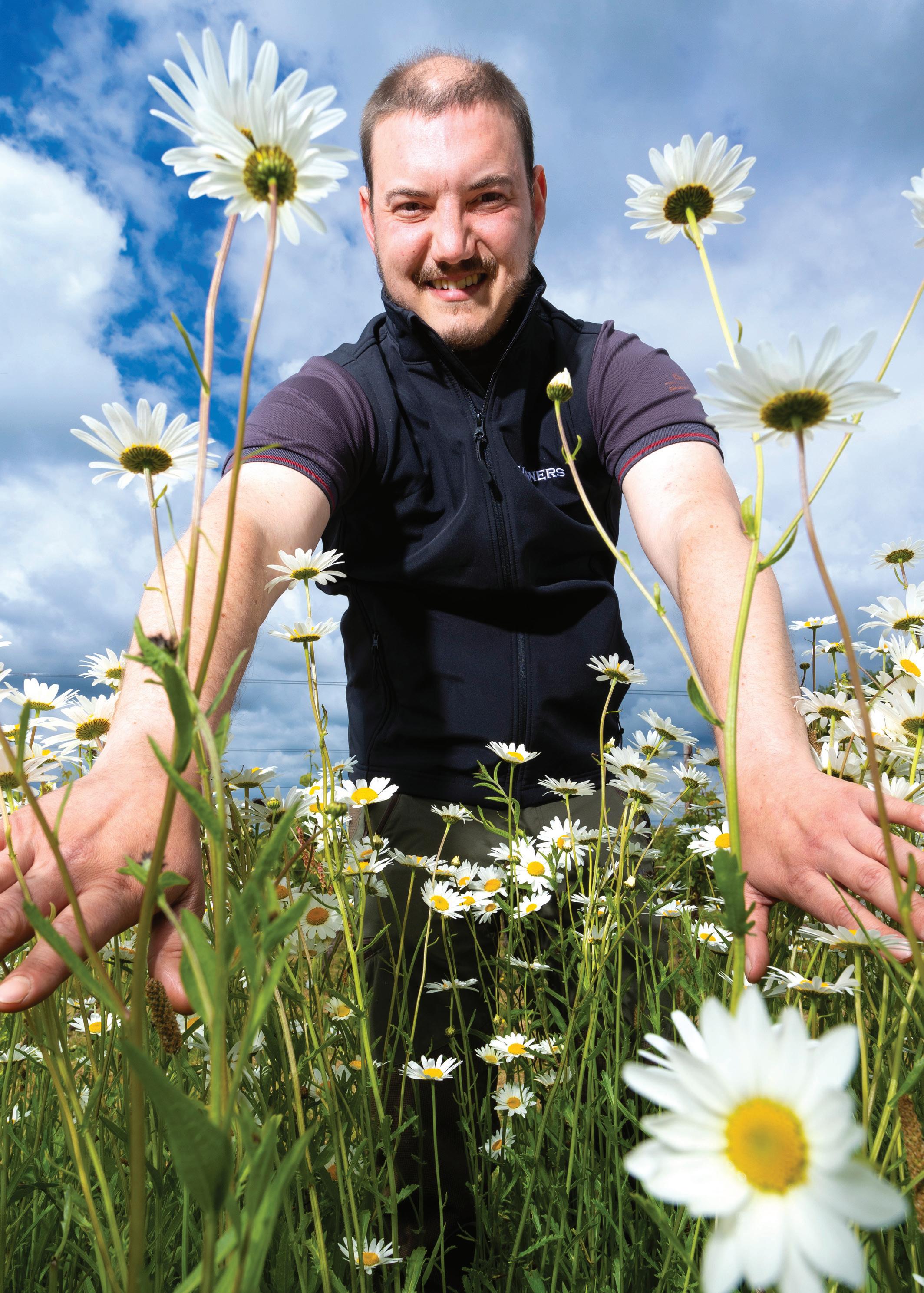
bees are both audible and visible.
Vineyard Magazine visited Henners early in 2022 when the cellar door was a new addition to the business and since then the small dedicated team have seen this flourish. As an example Beth Killalea explained that the most recent event was the summer party and this saw around 600 people come to the vineyard. “It was great to see everyone relaxing on the grass amongst the vines enjoying the music and the food (Fish and Chips and a BBQ),” she said.
“We want the Brut and the Rosé to be joyful playful wines. People can enjoy them with food, without food, with friends. This isn’t just for one occasion but for multiple occasions,” Sam said with emotion in her voice. This sense of joy is even incorporated into the foil of the sparkling wines; when the foil is peeled of it reveals a flying seagull (henners sits only five miles from the coast).
With a new website coming online Henners
really are focussing on the enjoyment of wine. One of the major messages of the new website is ‘Be More Henners’ a fun and relaxed message designed to encourage people to investigate this premium brand in a way that embraces rather than stifles the joy of wine.
“We want people to come onsite and try English wine in a relaxed environment making English wine more accessible,” said Beth.
Henners vineyard has so much to offer not just excellent wines and a fantastic atmosphere but a lasting impression of what can be achieved by a small team when they work together and really believe in what they are doing. The team want each and every bottle to be a joyful experience and they feel that their product is part of the fabric of their customers lives and they have created a tourism experience that fits that ethos. The relaxed atmosphere that is evident as soon as you arrive, lingers long after you have left and a little bit is captured in every bottle.
29 29
Richard Morris
JULY 2024 | VINEYARD
Extract maximum income from timber
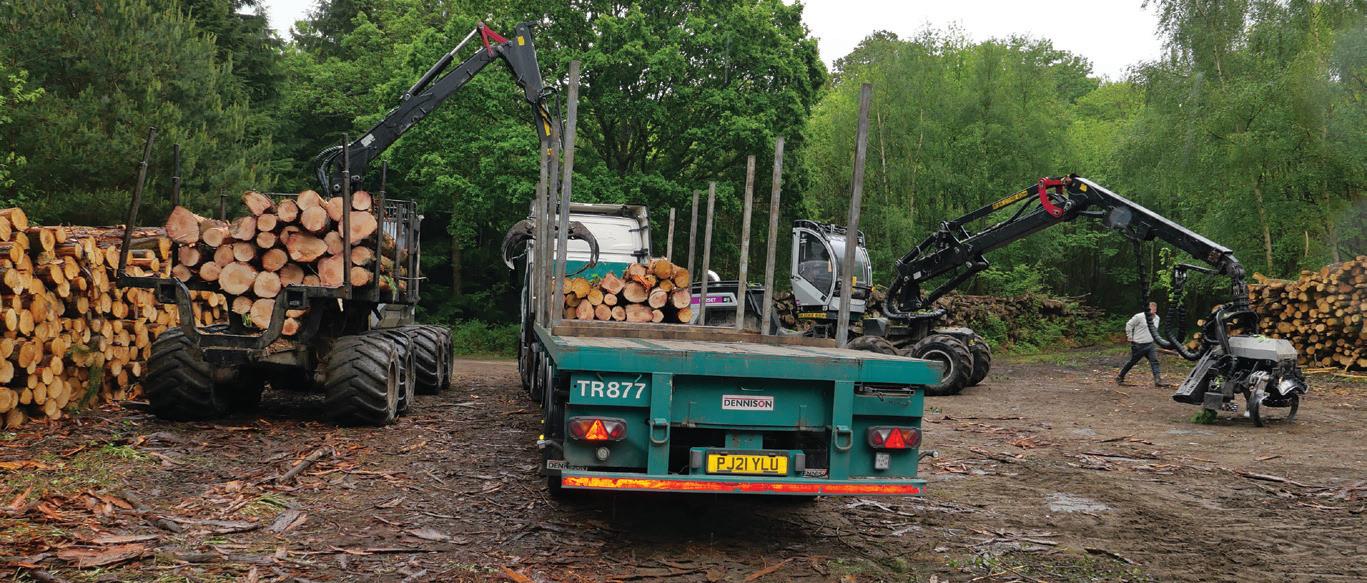
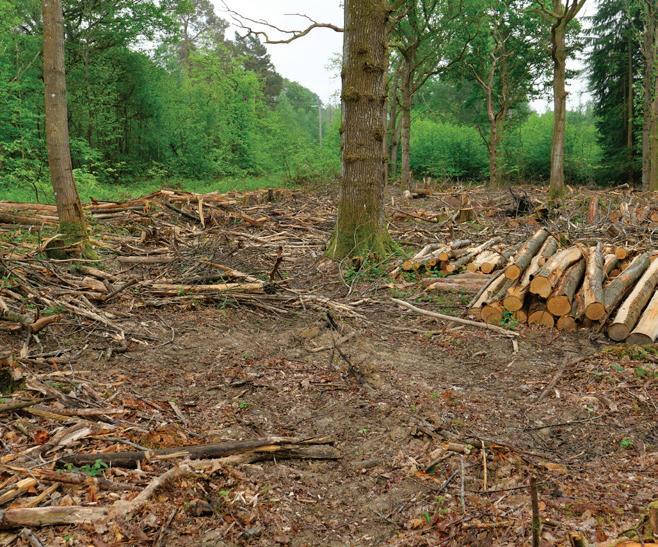


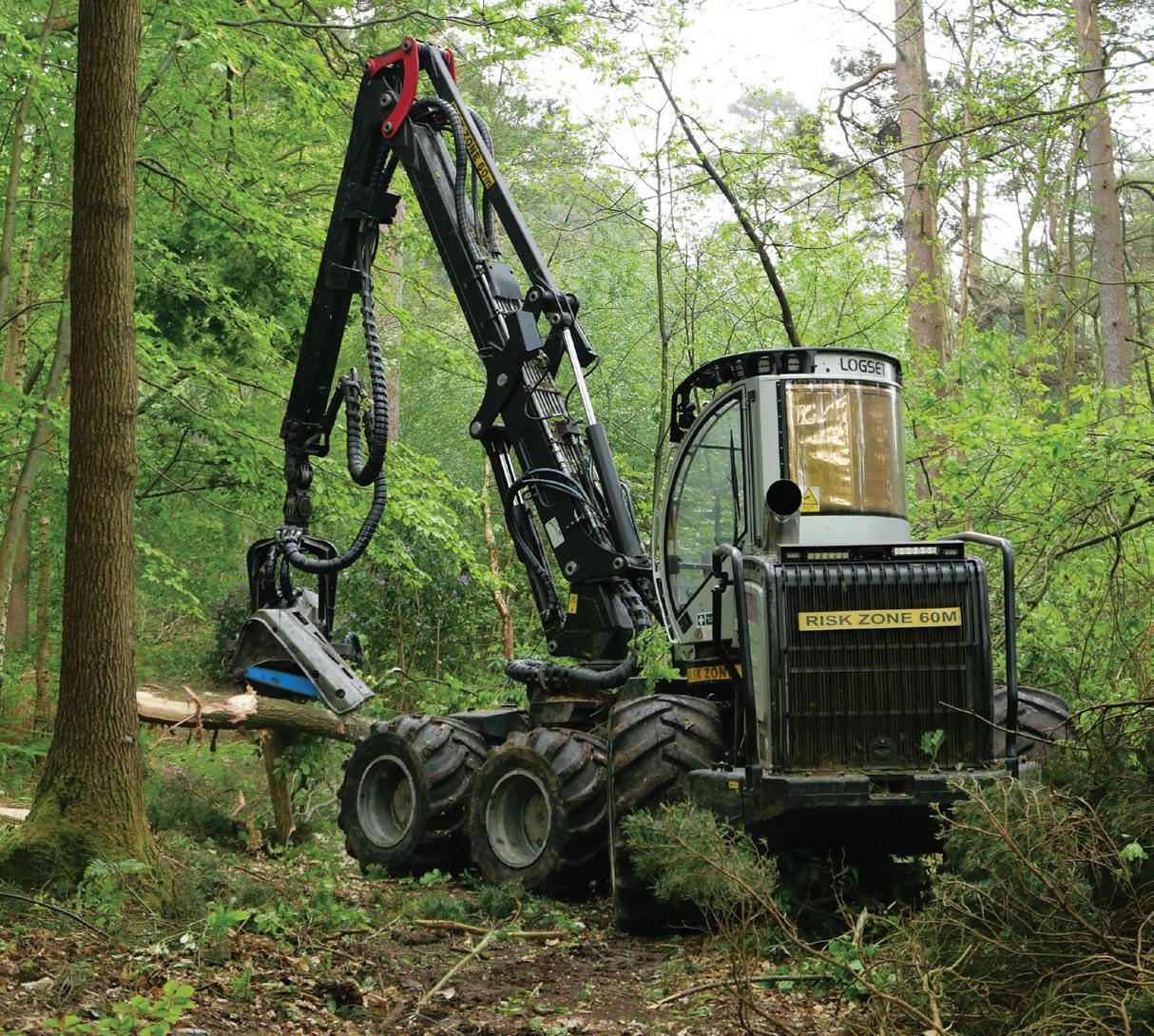
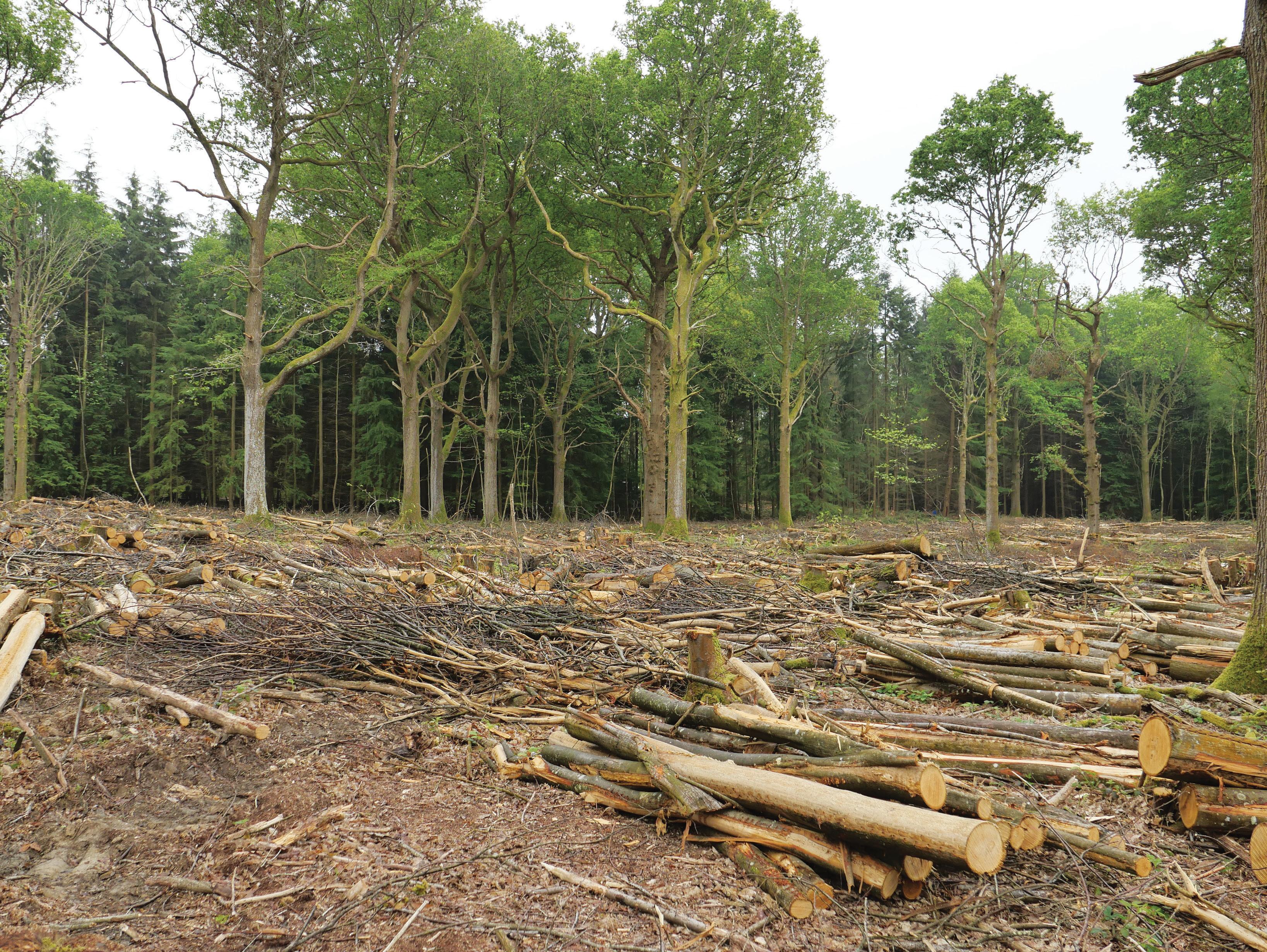
30
WOODLAND MANAGEMENT 30
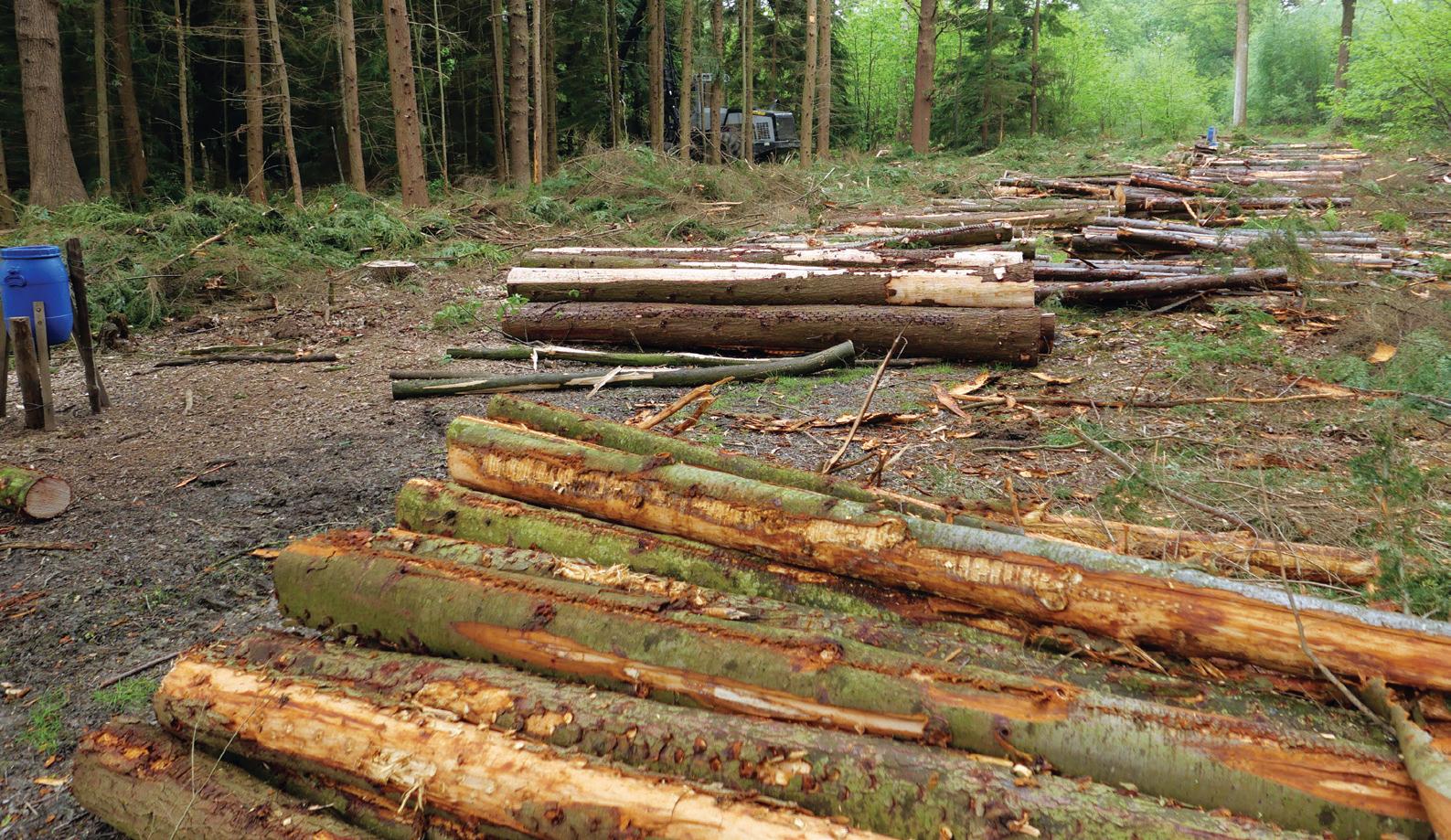
The woodland that surrounds the slopes that are home to some of this country’s finest grapes, and which often provides an additional draw for visitors, can also boost a vineyard’s bottom line.
Many larger, public-facing vineyards are set in a landscape that adds to their appeal, but when it is not looked after, woodland can become overstood and unproductive.
Properly managed, though, woodland can benefit the environment, create a nature friendly habitat and add to diodiversity, help to lock-up more carbon, create a more pleasant backdrop for visitors and create additional income for the vineyard.
South East Forestry is a well-respected and established company that knows how to maximise the returns from woodland while also delivering a broad range of benefits.
Jon Davies and Dave Holmes lead a wellqualified, professional team that can assess the best use for standing timber, harvest it safely and efficiently with minimal impact on the forest floor, and put every last piece of timber to the best possible use.
The company has its own yard and sawmill at Hawkhurst in Kent, a facility that allows it to extract maximum income from timber and use as little as possible for firewood or biomass woodchip.
That increased value is important, as it means the company can offer the landowner a better return, and with some English oak now being used to make vineyard casks, it could be a good example of a successful circular economy.
“We see turning timber into woodchip as the last option,” explained Dave Holmes. “If we can use it for fencing, construction or furniture it has more value and also locks up the carbon that has been sequestered during the growing process. Burning timber as fuel just releases all that carbon back into the atmosphere.”
Having the yard and sawmill, recently upgraded with new machinery, means South East Forestry can store valuable timber until it can be put to the best possible use and can
‘straighten up’ misshapen trees into usable planks or beams.
The commitment to the environment that sees as little harvested timber as possible used for woodchip or firewood runs through South East Forestry’s entire approach to forestry management.
“Thinning the woodland allows the remaining trees to fulfil their potential and allows more sunlight to reach the floor and support wild flowers. That will in time bring back butterflies and birds and help create a much more diverse environment within what was once a cold and shaded woodland,” commented Jon.
“Again, from an environmental point of view, while all trees sequester carbon, healthy young saplings do so much more efficiently than older, less vigorous examples.
“Our aim is to deliver the maximum value to the landowner by finding the best end use for the timber we harvest while leaving the woods and the environment in better shape –and that’s good for visitors, too.”
South East Forestry was recently brought in to manage an area of woodland that is typical of many across Sussex, Surrey and Kent and had become overstood over the years.
“We have agreed a plan that will re-establish a number of rides within the wood, benefiting the shoot on the estate, thin the hardwood to favour the better trees and let in more light, coppice the sweet chestnut and thin the conifers, using the timber for construction,” explained Jon.
“This is a typical mixed woodland with some low grade timber that will inevitably go for woodchip or firewood, but we always aim to keep that to a minimum,” he added.
“Using timber, particularly conifers, for construction is always our preferred option as it is totally sustainable. The tree grows and locks up carbon, it’s cut down and put to good use and then you plant another one in its place,” said Dave, before pointing out: ”You can’t grow steel or concrete.”

S UTH EAST
WANTED LARGE QUANTITIES OF ENGLISH OAK, ASH & SWEET CHESTNUT
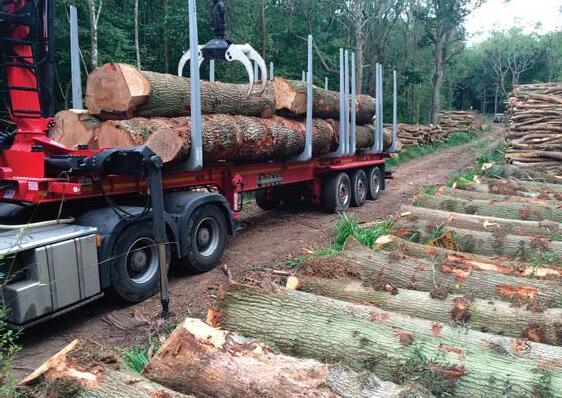


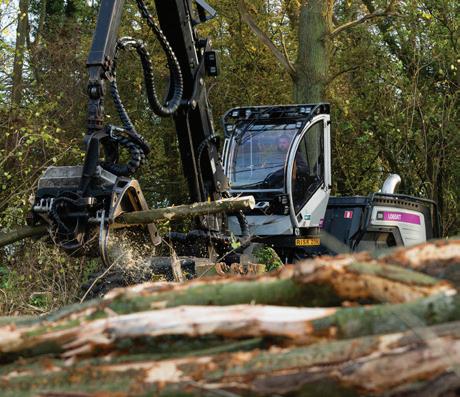
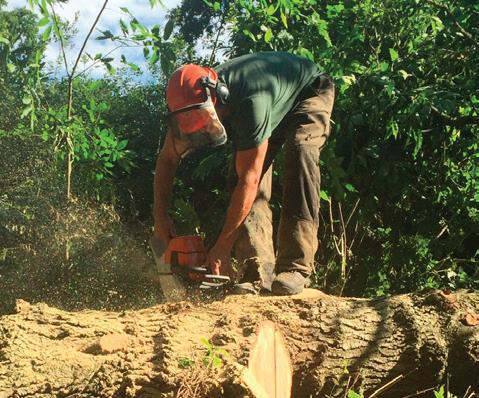
Unmanaged woodland? Overstood coppice falling over?
Timber growth stopped due to too much competition?
South East Forestry can provide financial returns from unmanaged and neglected woodland.
We are looking to purchase large volumes of woodland grown standing timber. All hardwood and softwood species sought South
fell –We sell timber Call Jon Davies on 01580 819179 or 07759 567801 www.southeastforestry.co.uk FORESTRY
East Forestry: We buy –We
Varieties, varieties and varieties
Ask your average shopper to name the variety of wheat that’s gone into their daily loaf, and its my guess that unless you happened to have approached an arable farmer, the likely answer is ‘dunnow’. Ask the same person the same question, but substitute ‘beer’ for ‘wheat’ and my guess is that the answer would be similar. However, hover in the wine aisle of any supermarket and approach anyone scanning the shelves for a bottle to take home and ask them what their favourite grape variety is, and its more than odds on that they will not only have one favourite grape variety, but will almost certainly be able to name a few red cultivars and a few white ones. They might also know that some varieties come from one region and others from another, and that Cabernet Sauvignon (for instance) goes well with their Sunday roast and that Chardonnay makes both great still white wines as well as Champagnes (and other sparkling wines).
I
In short, the average wine drinker in many instances uses the grape variety to navigate their way through the myriad of wines found in even the most modest of shops selling the stuff. Growing the right variety then, is not only important in determining the style and quality of a wine, but also an important part of marketing a wine.
Of course, it wasn’t always thus. Until the early 1950s, just before the time that those new-fangled shops called ‘supermarkets’ became popular, the average consumer bought their wine (if they bought it at all) from the grocer that sold them their weekly shopping. In those days, most of the popular wines were sold under generic names, Claret, Burgundy, Hock, Moselle, or brand names – the ‘Toujour’ range of red and white French wines in litre bottles were a top-selling line – and rarely, if ever, by grape variety. Wines from the major wine regions, Bordeaux, Burgundy, Rioja, Chianti, would
firmly believe that Seyval has a place in British vineyards

never have had the grape varieties on their labels (and often still don’t) and only the very knowledgeable would have wanted to know or even cared.
How things have changed. For most wine drinkers, the variety is a shorthand way of getting to the wine they want. Price, colour, variety – these are the three most important pointers in the ‘what wine are we having tonight’ hunt, with maybe country or region of origin thrown in to the mix. And it’s much the same in hotels and restaurants. Ask a waiter ‘what wine have you got by the glass? and they will usually reel of a list of varieties available as their opening offer. And I firmly believe that this reliance on vine variety as a basic descriptor is one of the main reasons why our wines – still and sparkling – have become more acceptable since the major varieties we grow have changed. ‘It’s made

32 32
WRITTEN FROM EXPERIENCE
St hen SkeltonM
from Müller-Thurgau and Reichensteiner with a touch of Huxelrebe,’ does not sound nearly as inviting as ‘it is a Chardonnay and its quite like a Chablis’; this is even more important for sparkling wine. ‘Its just like Champagne and made from Chardonnay and Pinot noir’ is so more appealing than saying ‘it’s made from Kerner and Seyval blanc, with a touch of Siegerrebe’. Choice of variety is therefore important in many ways other than just how it grows and performs.
When selecting a variety or varieties for your vineyard, some basic rules apply. Like all regions, there is a list of ‘top’ varieties, often dictated by appellation regulations or by historic reasons, but always hemmed in by climatic factors. That’s why GB doesn’t grow any Grenache or Semillon, both varieties suited to 35°C+ days. Some varieties of course are more adaptable than others. Chardonnay, our major variety, can be found in almost every winegrowing region, but the style of wine changes. Sparkling and high-acid still wines in cooler regions; oaked whites in warmer regions.
GB’s variety lists started to change after 2003, the year when people said it was too hot in Champagne to make decent wine! In that year, Chardonnay overtook MüllerThurgau as the most widely grown variety, and it hasn’t stopped. Today, it occupies very nearly one-third of all plantings. The top 5 in Britain – Chardonnay, Pinot noir, Meunier, Bacchus and Seyval blanc – account for 80% of all the vines grown, with newcomer Solaris sitting right behind Seyval and probably about to overtake it as the farther flung regions get bevined. But – do these statistics help when choosing a variety? Well I believe they do. If nothing else, they show that 1,000 plus growers have faith in what we can now surely call ‘established’ varieties. The biggest growers, with perhaps one or two exceptions, are firmly wedded to producing mainly (or even only) Champagne-style sparkling wines, and for them there’s little choice but to grow the three major sparkling wine cepages. Bacchus (and thank heavens the Germans gave it a name that has become a brand in its own right) has enough critical mass to stay around as a Sauvignon blanc look-a-like, and those interested in buying English and Welsh wines from Bacchus have a wide selection of styles to choose from. After these four, the lists start to fragment. I firmly believe that Seyval has a place in GB vineyards (and I know this is a minority view) but with the pressure to increase yields (to reduce per tonne growing
Vine varieties planted in GB 2023 (Hectares)
Source: Wine Standards Team at the Food Standards Agency 2024
costs) and to reduce the use of pesticides (aka ‘regenerative agriculture’), this variety is uniquely positioned. There is a 75 year history of growing it here, the wines adapt well to sparkling and blending, and it is the only variety (currently) that is highly resistant to both powdery and downy mildew.
As I have said above, as viticulture heads for the cooler, wetter and windier hills and valleys of the far south-west, Wales, and counties north of the Wirral to the Wash line, the demand for higher yielding, diseases resistant varieties will grow.
After these first five varieties, the list starts to descend towards very small numbers. As has been mentioned, Solaris is increasing, mainly because it (a) yields well and (b) is relatively disease resistant, although I really worry (as you will read later) about wine quality. The up and coming varieties are
a mixture of varieties grown in other cool climate regions, Pinot gris and Pinot blanc, both able to make good to very good still wines (and sparkling) on the right sites; Ortega, a bit of a GB speciality that again, can make great still wines; and Blauer Frühburgunder (Pinot noir Précoce), grown by many Pinot noir growers to boost the sugars and colour in their red and rosé wines.
After that, the field is wide open, with a mixture of old German crosses and newer interspecific crosses and PIWIs. Out of the 84 varieties listed as being grown in GB in 2023, there are 27 modern hybrids (PIWIs) which together occupy 293ha, and seven older hybrids which occupy 119ha (of which Seyval is 112ha). With the exception of Seyval, I doubt there are any new plantings of the older hybrids.
33 33 WRITTEN FROM EXPERIENCE
<<
Variety No: 2023 % planted Chardonnay 1 1320.88 32.27% Pinot noir 2 1143.10 27.93% Meunier 3 376.39 9.20% Bacchus 4 315.81 7.72% Seyval Blanc 5 111.91 2.73% Solaris 6 108.12 2.64% Frühburgunder, Blauer 7 71.10 1.74% Pinot gris (Ruländer) 8 68.78 1.68% Reichensteiner 9 61.78 1.51% Rondo (GM 6494/5) 10 61.56 1.50% Pinot blanc 11 51.31 1.25% Ortega 12 43.90 1.07% Alzey 7672 (Mad Ang) 13 34.20 0.84% Müller-Thurgau 14 30.36 0.74% Sauvignon blanc 15 29.82 0.73% Regent 16 29.78 0.73% Phoenix 17 28.57 0.70% Schönburger 18 18.76 0.46% Siegerrebe 19 18.52 0.45% Dornfelder 20 16.49 0.40% Others 151.94 3.71% Total Ha planted 2023 4,093.08 100;.00%
JULY 2024 | VINEYARD
Wine Growing in Great Britain – Second edition is an A to Z of growing vines in the UK
For anyone contemplating planting and establishing a vineyard in the UK, and for those already growing vines on a small scale who perhaps wish to expand their vineyards and improve their winegrowing skills, it will be invaluable. It will also be of interest to students of viticulture. Wine Growing in Great Britain covers not only the viticultural tasks involved, but also, uniquely, the finances of UK wine growing: land costs, vineyard establishment and management costs and the income from both grape sales and wine sales.
Available from: Amazon and World of Books
PIWI varieties
PIWIs have been around a lot longer than most people realise. In 1982, three growers – myself, Lamberhurst, and Adgestone, were each given 50 Rondo vines (or GM 6494/5 as it was known for its first ten years in GB) by Professor Helmut Becker who at the time was head of the Geisenheim vine breeding department and for whom Rondo was the first commercial release of his vitis Amurensis crossings. Early and disease resistant, with a generous yield of deep red grapes, it was an instant hit, and once the first 50 vines had been cropping for a few years, some of Lamberhurst’s contract growers planted it. Rondo, together with three other PIWIs, Orion, Phoenix and Regent, were put on the ‘authorised’ list and people started planting them. Today there are 133ha of these four varieties in GB and with the exception of Orion, are (very) slowly expanding. The major problem with these four

Flawless Recruitment
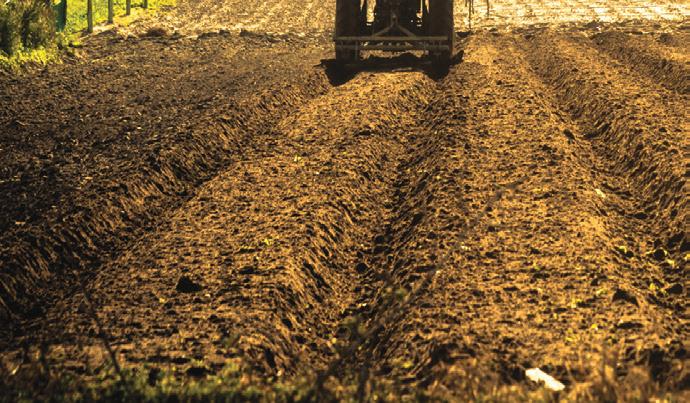
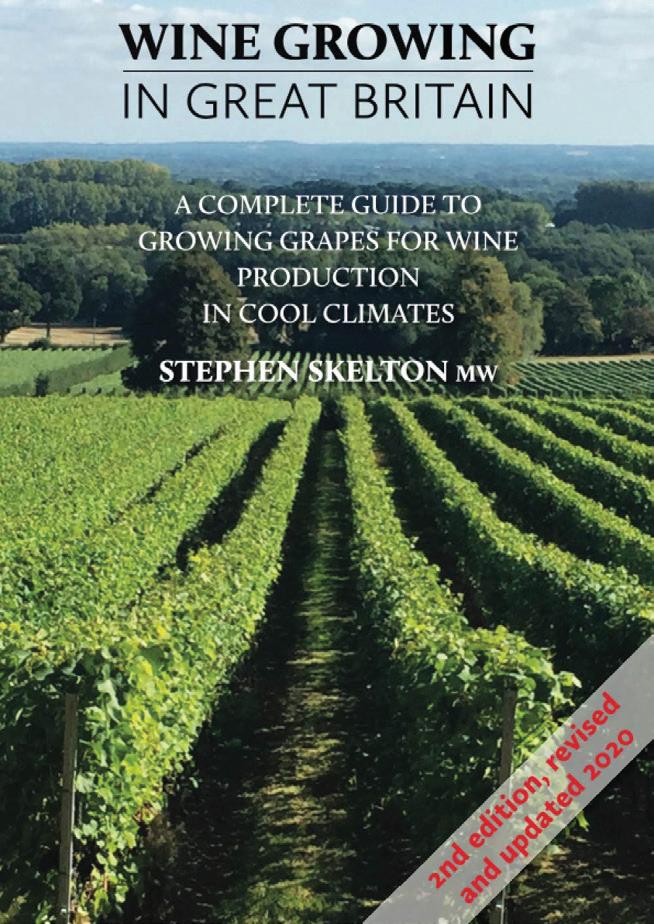
varieties is that the wine quality is not of the first order, winning very few silver and gold medals over the past 50 years. But Rondo is a consistent cropper even in cooler years (and cooler regions).
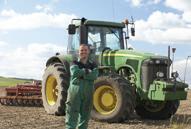
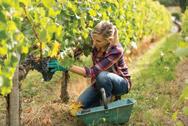




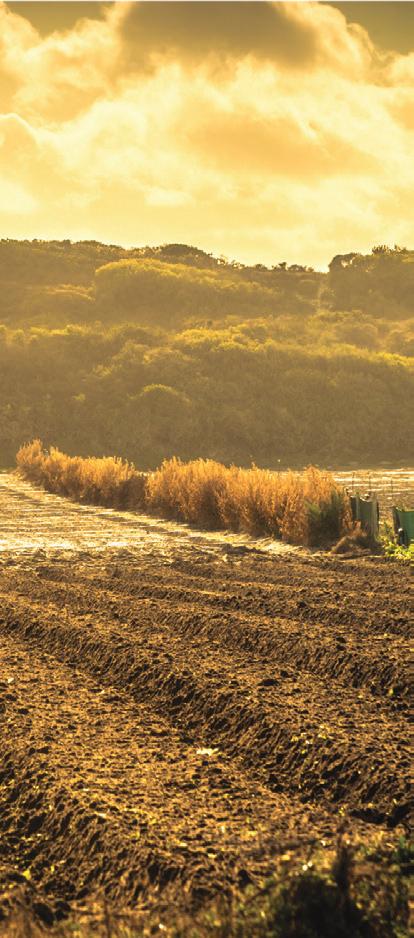




This question of wine quality is, to my way of thinking, central to the whole PIWI debate. As we saw in the past, when new varieties were promoted by overseas nurseries and authorities (Geisenheim included), almost no trials had been undertaken in GB, and therefore all the received wisdom about a variety’s attributes, whether cultural or about wine quality, is derived from regions which almost always have better growing conditions than ours and therefore their wine quality is naturally better, and nothing much has changed in this respect. Take Divico as an example. This Swiss variety was chosen by the NIAB East Malling Research Station by the person then in charge of the viticulture section, who was looking for a variety to produce top-quality red wine. Alighting on Divico he said: “The wine quality is outstanding... and Divico is likely to supersede Pinot Noir... the previous industry standard red variety”. Much on the basis of this glowing report, a total of 12ha of this variety has been planted. Whilst I wish all the best to everyone that swallowed the Kool Aid, and I look forward to tasting the first Divico gold medal and trophy winner, my natural inclination, and my experience of growing new ‘wonder’ varieties, indicate to me that it will be a long while before it eclipses Pinot noir as GB’s main red wine variety. The second most widely planted ‘new PIWI’ is Cabaret Noir, again with 12ha. I suspect much of the popularity with this variety is its name, which launched as Cabernet Noir, until the EU decided that this was misleading and made the breeder rename it. Unlike Divico, I have actually tried a few good wines from this variety, and I wish it every success for the future. Of the other newer PIWIs, only a few have been planted at the ‘more than 1ha’ level: Sauvignac, Muscaris, Cabernet Cortis, Souvignier Gris, Pinotin, Johanniter, and Cabernet Blanc. Together, these seven varieties occupy just under 24ha. There are a few plantings of Voltis, the PIWI variety, which is allowed to be grown in Champagne, and maybe because of this, it will become more widely planted in GB.
As I said above, wine quality is the problem, especially when these newer and untried varieties are grown outside the heartland of GB winegrowing where climatic conditions are worse for viticulture and therefore for wine quality. What happened to new varieties planted in the 1990s such as Findling, Kernling, Optima, Scheurebe and Zweigeltrebe? The 18ha then planted have all but disappeared, mainly because their wine quality was lacking. What we really need is the modern-day equivalent of the Wye College vineyard, first planted in 1971, which trialled around 25 varieties new to GB, and which gave us Bacchus, our major still wine variety. Maybe a job for Plumpton?
34 34 WRITTEN FROM EXPERIENCE
Do you need support with recruitment in 2024? We can help! At Flawless we are motivated, reactive and committed to finding you the workers you need Contact us.. 07809473645 Del Warner 07716599379 Lisa Warner Delwarner@flawlesspremises com Lisawarner@flawlesspremises com
GLAA Licensed Labour Provider ALP Member JULY 2024 | VINEYARD
AGRONOMY DIARY
Caring for new vines over the summer
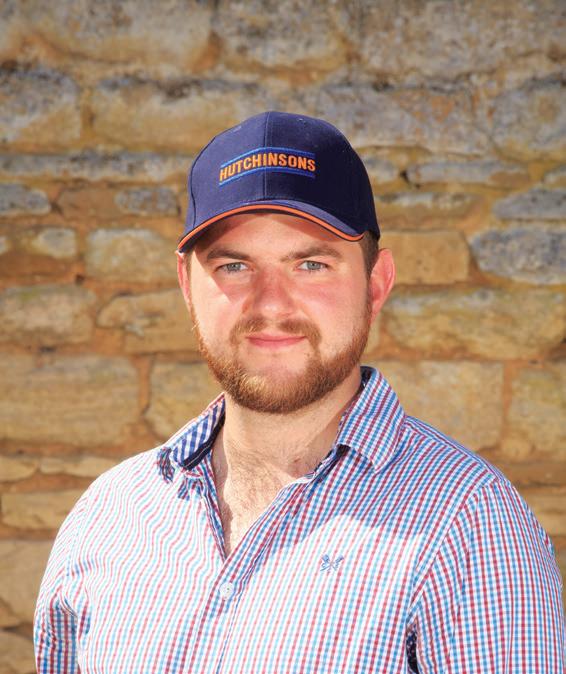
With an estimated 400 ha of new vines planted this year according to WineGB, Hutchinsons agronomist Will Robinson offers some tips for looking after them through the summer growing period.
Managing newly-planted vines well is vital for laying the foundations to develop strong, healthy and productive vines over the years to come.
Minimise competition
One of the most important considerations in the first year is weed control, as small vines with minimal root systems are particularly sensitive to competition for light, water and nutrients.
Most growers will have started with a ‘blank canvas’ by using glyphosate prior to planting vines earlier in spring, however fresh weed flushes can soon reappear, especially in a season like 2024 when soils have remained moist and warm – ideal conditions for weed growth.
The most effective approach is generally to use a herbicide, such as carfentrazone-ethyl applied through a guarded sprayer, to maintain a weed-free strip beneath the vines. Alleyways can be sown with a grass or other cover crop mix to protect the soil and outcompete any weeds growing between the rows.
Mechanical weeders, such as rotary tillers, finger weeders or side hoes, do offer a chemical-free alternative to managing the undervine strip, but may be less suited to use around young vines given the increased risk of damaging small, shallow roots, or even uprooting new plants completely.
Organic mulches are another option, but it must be remembered that we want roots of new vines to grow down into the soil profile in search of nutrients, and adding mulches with a higher nutrient content (e.g. compost or grass cuttings from a side discharge mower) could encourage roots to remain closer to the surface, potentially reducing their future resilience.
Protect and boost
In years when mildew risk is particularly high (both powdery or downy mildew), there is merit in protecting new vines with a copper/sulphur mix. Two applications may be necessary depending on risk; one in June to protect the first flush of growth after planting, followed by another in late July to protect any new leaves ahead of late summer storms. Chemical options offering curative mildew control are increasingly limited, so, as with any disease, it is always better to take a preventative approach.
A good quality phosphite, such as Phorce, can be a useful addition to help build root development, and research has shown phosphites can trigger a natural defence mechanism in vines and reduce downy mildew infection.
The seaweed extract-based fertiliser, Maxicrop, is another useful option, both for strengthening root growth, and helping to encourage healthy foliar growth at a time when roots are not yet fully developed. It may help to ‘soften’ the tank mix when applying copper/sulphur.
Similarly, the phlorotannins, polyamines, and other biological actives in the Kelpak liquid seaweed biostimulant have been shown to promote root initiation and development in young plants.
Shoot selection
A key task during July and August is to select a strong shoot that can be trained to a stake to ultimately form the main trunk. Experience suggests that doing this in summer generally results in less scarring than with winter shoot selection.
The typical approach is to select two strong
shoots, one of which will eventually become the main trunk in year two or three, the second acting as a reserve option that will be removed at a later date. On very fertile, vigorous sites, some growers may let a third develop as a way of managing the increased vigour.
When selecting shoots, make sure they are growing from above the graft union, so they represent the fruiting variety rather than the rootstock.
Water if necessary
After such a wet winter and spring, the need for irrigation may seem irrelevant this year, however we know how quickly conditions can change. While soils may still have sufficient moisture at depth, remember that the roots of new vines will be relatively shallow in the first year, so may benefit from some irrigation if conditions turn very hot and dry later in the summer. Allowing vines to become water stressed in year one will stunt their growth and could limit future potential.
One of the main drawbacks of maintaining bare soil in the undervine area is the increased risk of soil drying out and cracking, potentially exposing roots to dry air. Organic mulches can help in this respect, by retaining moisture, building water holding capacity, and reducing evaporation losses, although beware of the potential impact on nutrient availability and rooting mentioned previously.
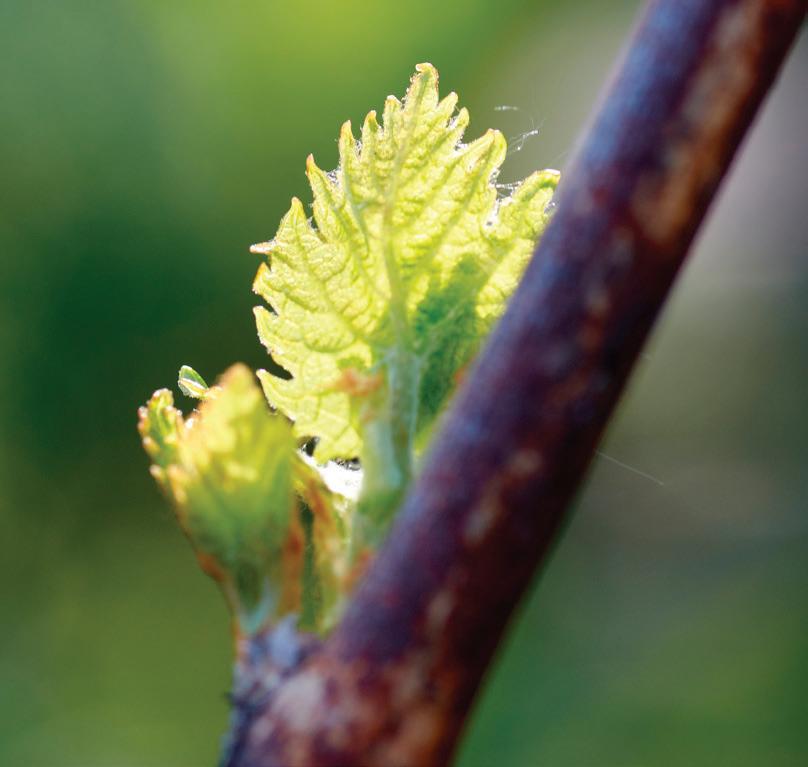
35 35 DESKTOP www.hlhltd.co.uk ✉ information@hlhltd.co.uk phone-alt 01945 461177
iam R o bsni
SPOTTED WING DROSOPHILA
Increased activi of fruit fly

Reports of the vinegar fly Spoed Wing Drosophila in UK vineyards have increased significantly over the last few years.
First reported on these islands in 2012, Spotted Wing Drosophila (SWD) poses a more severe threat than Drosophila melanogaster, the common fruit fly, because it is attracted to underripe, ripe and overripe fruit. SWD can therefore cause damage to crops both before and during harvest.
WineGB’s 2023 harvest report alarmingly tells us that SWD “was considerably worse than in previous years.” This increased activity, they suggest, is probably attributable to “the lower acidities in 2023, especially in red varieties and the increased cropping area of red varieties such as Pinot Noir Précoce (Blauer Frühburgunder) which was 30ha in 2017 and now (2022) stands at nearer to 100ha.”
Of the vineyards that responded to WineGB’s harvest survey, 49% reported they were affected by SWD last season. Some growers lost the entire crop of certain varieties while others only experienced nominal losses. Interestingly, research in the United States has shown that hummingbirds reduce infestations by a significant percentage. But given that native hummingbird populations
What’s in a name?
are not particularly active in English and Welsh vineyards, what is to be done about the problem?
The impact of SWD
Left unchecked, this fruit fly can cause the entirety of a crop to be lost. Females have a serrated ovipositor at the base of their abdomen that allows them to penetrate the skin of the fruit to deposit their eggs. That is why they don’t have to wait for grapes to become overripe like other species in the Drosophila family.
The population size can increase dramatically and quickly if uncontrolled. Like other insects, their development can be affected by temperature, but on average the flies only take a week or two to mature. A single female can lay up to 900 eggs over her life. Now that climate change appears to be bringing higher temperatures to England and Wales, the threat is apparently on the rise, borne out by anecdotal evidence.
find a wide range of plants amenable as hosts – both wild and cultivated. This explains why their global spread has taken place with such vigour and why soft fruit crops are at such risk. It has been suggested that red wine grapes are most susceptible, but there are plenty of reports of white varieties being attacked too. The damage they wreak is caused not just through the piercing of grape skins, leaving them open to secondary infections, but also through the action of the larvae feeding on the fruit.
Once fruit has been damaged by SWD, a clear path is available for other species of fruit fly to further attack the fruit and lay their own eggs.
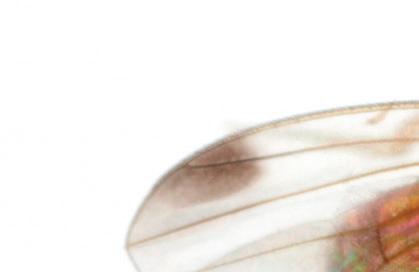
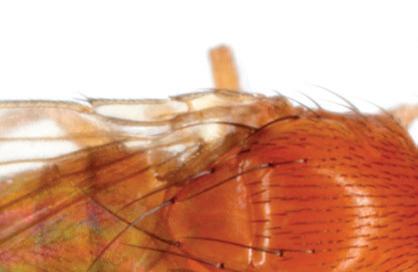
SWD are weak fliers, but can easily be dispersed by the wind. They
Male SWD have a bold, distinctive spot along the front of each wing. These spots are visible to the naked eye but can be more easily seen under a magnifying lens. The same goes for the saw-like teeth along the distinctive ovipositor of the female flies.
Care must be taken when making an identification, however, as the wing spots take two days to fully form on the males.
SWD numbers are naturally at their highest when food is most plentiful - in the autumn. However, population levels need to be monitored year-round to get the jump on any potential infestation.
The Agriculture and Horticulture Development Board provide
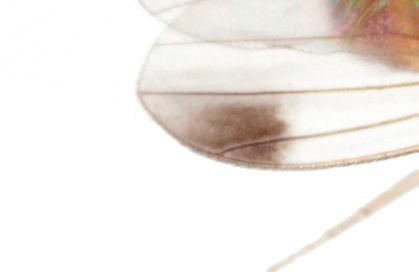






advice for spotting, monitoring and trapping SWD. This includes using traps at the edge of the vineyard in the early part of the season. Hedgerows and a wide range of plant species like wild blackberries are common habitats for the pest. For best results, traps should be hung a metre above ground, clear of vegetation and away from direct sunlight.
If traps in wild areas begin to show large SWD populations and the fruit is swelling, then traps can be moved to cropping areas. Fruit can also be inspected for infestation using a sugar floatation test or emergence test.
THERE IS A USEFUL GUIDE, WRITTEN FOR A NORTH AMERICAN READERSHIP, COVERING THE IDENTIFICATION OF SWD AND OTHER SPECIES THAT RESEMBLE IT IN APPEARANCE: www.extension.psu.edu/spotted-wing-drosophila-part-1-overview-and-identification. Read the other articles in this series by Kathy Demchak for more information on SWD natural history, monitoring and management.
FIND MORE ADVICE AND INFORMATION FROM THE AHDB: www.horticulture.ahdb.org.uk/knowledge-library/spotted-wing-drosophila-swd

36 36
La aHad l a n d
JULY 2024 | VINEYARD
FACT FILE
◆ Drosophila suzukii is a subgroup of the Drosophila melanogaster species group within the subgenus Sophophora.
◆ Typically, SWD reproduces from April to October and overwinters as an adult. UK research has shown that the mature individuals that overwinter undergo a winter morph into a form that can withstand lower temperatures.
◆ The life cycle of SWD varies according to the temperature. They perform at their optimum between 20°C and 25°C, and their activity is reduced below 10°C and above 30°C. For example, one generation can take 10 days to mature at an optimum temperature and 3 weeks or more under colder conditions.
◆ Under ideal conditions, eggs can hatch into larvae in just a few hours. The larvae will pupate after about a week (this can occur within the fruit or outside of it). Pupation takes up to two weeks. After emerging, the adult flies can live for a couple of months, with females reaching sexual maturity within the first day or two.
◆ Native to Asia, SWD was first reported in mainland Japan in 1916. It was first found in Europe in the autumn of 2008, where the flies were identified in the Tarragona province of Spain. The first damage to a commercial small fruit crop in Europe was recorded in Italy in 2009.
◆ After the discovery of SWD in the UK in 2012, a national monitoring scheme was undertaken across 14 soft fruit and stone fruit farms in England and Scotland. There were no commercial problems reported in the initial years, perhaps thanks to cold winters and the late onset of spring.
◆ SWD is not a notifiable pest. In 2012, the EU decided that because of its lifecycle and biology, official phytosanitary measures were unlikely to prevent any further spread of the population. Therefore there is no official regulation of the pest by the EU Standing Committee on Plant Health.
◆ Across the world, SWD damage has been reported in a wide range of fruit crops. This includes grapes, blackcurrants, kiwis, figs, redcurrants and plums.
◆ Besides crops, there are plenty of other non-cultivated plant hosts that can harbour SWD including hawthorn, holly, dogwood and elderberry.
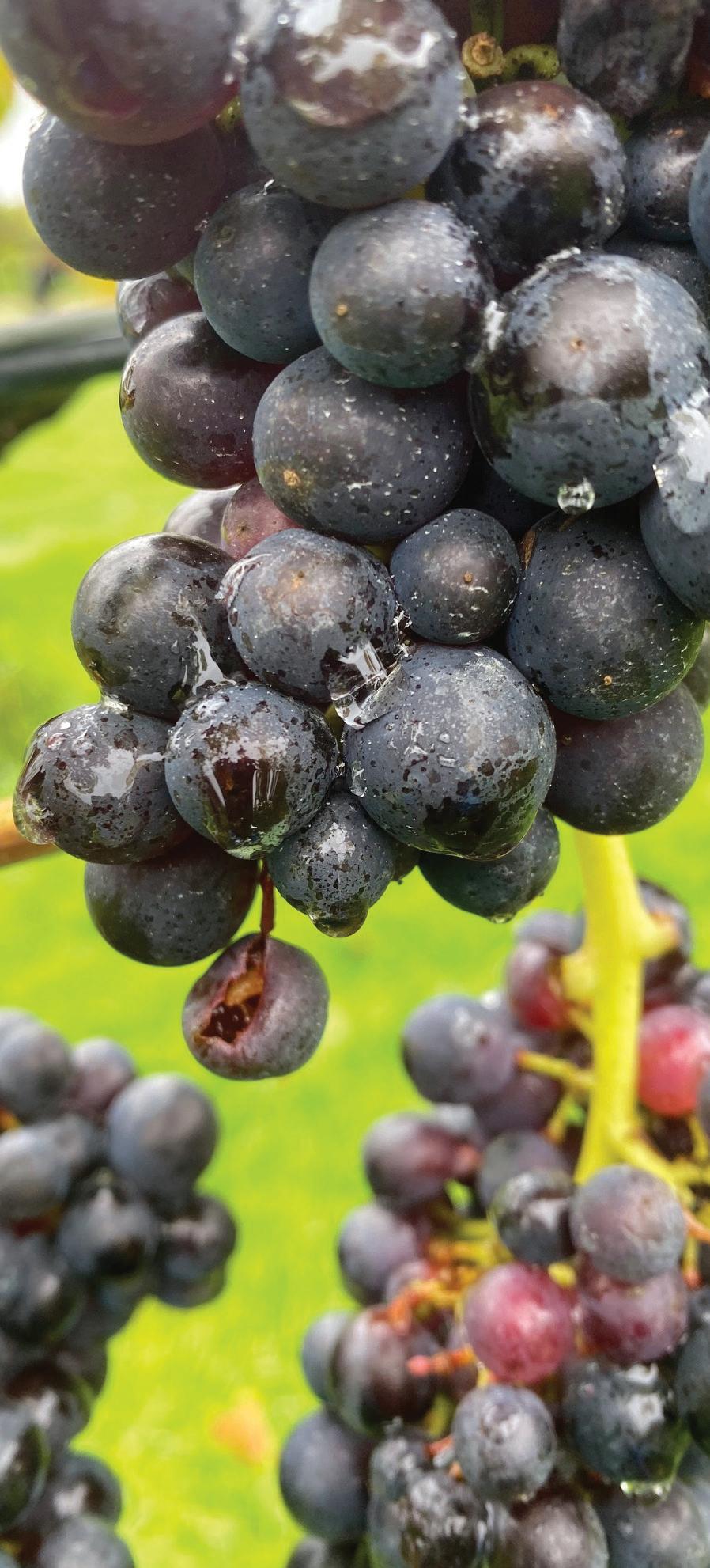
37 37 <<
Photo: Winding Wood Vineyard
SPOTTED WING DROSOPHILA
Staying on top of SWD
In the first years when SWD arrived in the UK, control methods relied heavily on insecticides. In turn, these measures negatively impacted on well established biological controls for other pests, making chemical control problematic.
The insecticides that are currently available will only treat adult populations. Including an adjuvant in a control programme may increase its effectiveness. Products like Combi-Protec claim to attract and increase the feeding activity of adult SWD, which will improve the efficacy of any chemical control applied around the same time.
Crop health
Reducing reliance on insecticides and still keeping on top of SWD populations requires measures such as insect-excluding mesh, the sanitary disposal of waste fruit and good crop hygiene.
SWD appear to favour warm, humid conditions, so an unmanaged vineyard canopy where the leaf wall is thick and there is little air movement will help the flies to proliferate. Managing the vegetation around the perimeter of the vineyard, particularly native soft fruits like wild blackberries, may also help with reducing SWD habitats and overwintering spots.
Harvesting promptly and not leaving bunches hanging may also aid in deterring the spread of an SWD infestation.
Natural competition
Recent research has shown that SWD is not particularly competitive with other species that lay their eggs in soft fruit, so the females are put off from laying their eggs in fruit where the common fruit fly is already actively feeding. This project was led by the National Institute of Agricultural Botany (NIAB) in collaboration with researchers from the Natural Resources Institute and Berry Gardens Growers. It is hoped that this new understanding could help the advancement of future control methods, should the compound that deters SWD be identified.
Biological control
NIAB has been attempting to understand how effective native parasitoids are in controlling SWD in the wild. In non-cropped areas, it is believed that local parasitoids are contributing to 21% of the control of vinegar fly populations.
While five native species were identified, unfortunately, the pupal parasitoid Trichopria drosophilae was not one of them. This species is already commercially available in Europe for use in biological control but has not been identified in the UK, as yet, so it cannot currently be released into UK crops. This study was funded by the Worshipful Company of Fruiterers.
Elsewhere in the UK, research has also taken place into the viruses that SWD are susceptible to, as a way of identifying potential microbial biological control agents. This is a sought-after method of control as viruses can be environmentally benign and have a high level of host specificity. At the moment, the research is in a predominantly exploratory phase, identifying the viruses and assessing how well they can be isolated in the lab.
There are also studies that have been conducted to better understand the types of volatile metabolites produced by individual fruit-associated yeast isolates which attracts SWD. Since fruit naturally harbour a wide range of yeast species, this is a complex exercise, looking at how attractive various combinations of yeasts are. This work is aimed at increasing the effectiveness of bait traps in the future.
Mass trapping
Mass trapping is advocated as a control measure by NIAB. The population of SWD in crops and semi-natural habitats in the spring can be reduced through mass trapping in adjacent woodlands and hedgerows over the autumn and winter
While the flies do not lay eggs at this time of year, they may be active and feeding on warmer days. The absence of competing fruit makes traps more effective, minimising populations at the start of the growing season.
Sterile insect technique
One newly established technological approach to reducing SWD populations is the Sterile Insect Technique. Sterile males are released at repeated intervals throughout the season. They outcompete the wild males, leaving the females infertile. By keeping populations low, reliance on chemical insecticides is also reduced.
Early trials of these sustainable insect control solutions on strawberry in open polytunnels have been described as “encouraging”. SWD levels remained low compared to similar crops treated with agrochemical products, which mainly only impact adult flies.
Reducing insecticide usage
NIAB is working with Russell IPM and Microbiotech to develop control strategies that combine lower doses of insecticide with bait that attracts SWD.
“Results show that using this strategy can reduce the amount of insecticide applied to an area in a single growing season by up to 95% resulting in less environmental contamination and lower residues in fresh produce,” the NIAB reports.
38 38
READ MORE ABOUT THE YEASTS THAT ATTRACT SWD: www.nature.com/articles/s41598-022-14275-x READ MORE ON STERILE INSECT TECHNIQUE: www.pubmed.ncbi.nlm.nih.gov/35447770 READ MORE ABOUT A UK TRIAL OF THE STERILE INSECT TECHNIQUE BY BIGSIS IN 2023, WHICH WAS REPORTED AS REDUCING NUMBERS OF FEMALE SWD FLIES BY 88% IN AN 11HA FIELD OF MARAVILHA RASPBERRIES: www.fruitnet.com/fresh-produce-journal/bigsis-trials-indicate-chemical-free-path-for-swd-control/257699.article
JULY 2024 | VINEYARD

Chardonnay cake
Reflections
From Winding Wood Vineyard 2023
In late September, we noticed a plague of fruit flies had invaded the Pinot field. It was some years ago when we had a similar outbreak. Vinegar traps were put out to catch them but the damage to some of the bunches had been done. These flies are called Spotted Winged Drosophila (Suzuki fly) of which the female lays eggs under the skin of the berry which then hatch. To the eye, the berry exhibits a brownish colour, is squishy to the touch, and has an exit point. This leads to sourness.
As a result, we laboriously spent days on our hands and knees, extracting each damaged berry. The effect on the bunch if not picked out can be ruinous to the crop. We hear from the winemaker that many vineyards are infested. Why? Maybe a perfect storm with the warm and wet conditions experienced over the summer.
Taken with permission from the Winding Wood Vineyard blog on www.windingwoodvineyard.co.uk
Chardonnay in the press
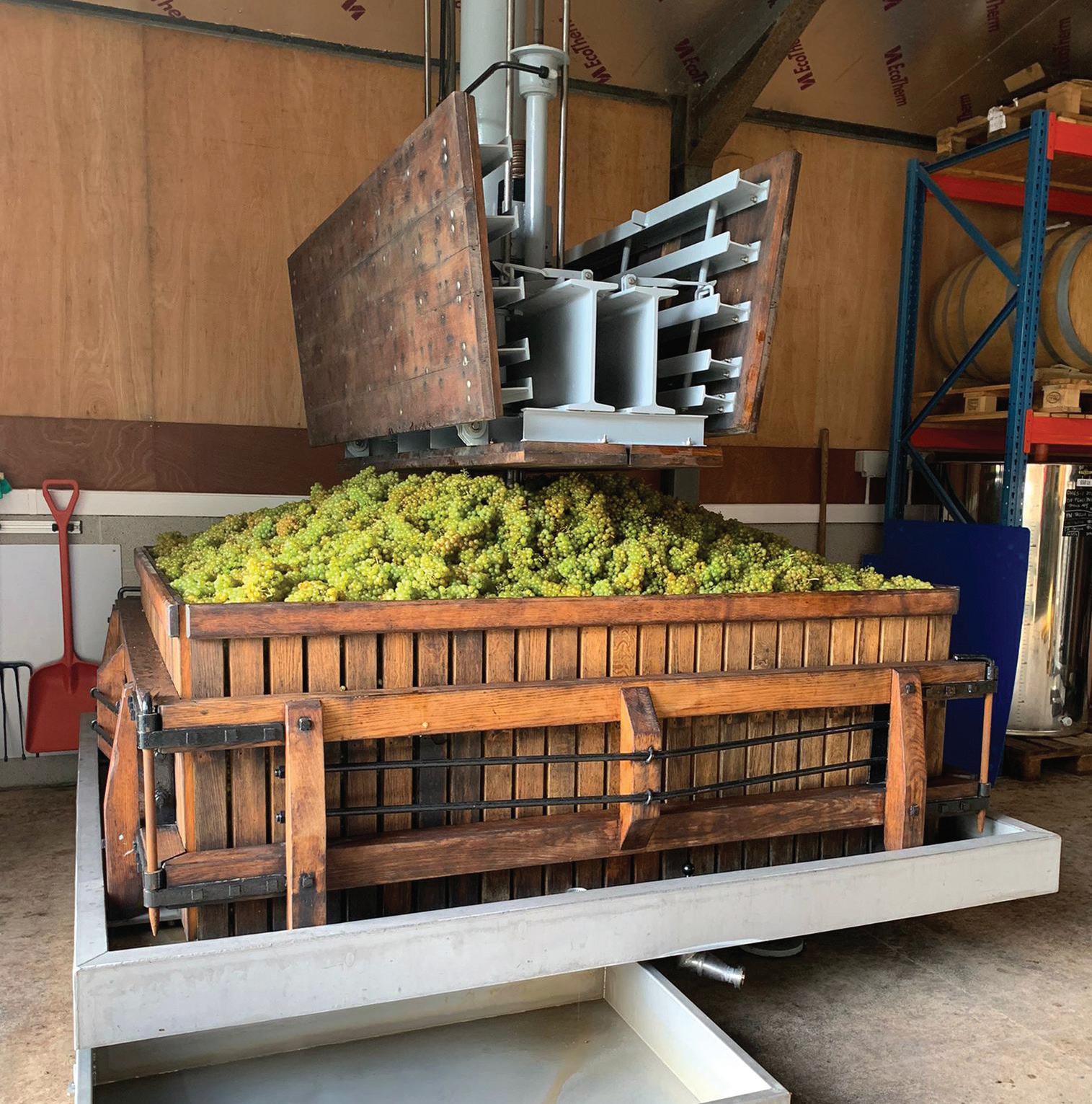



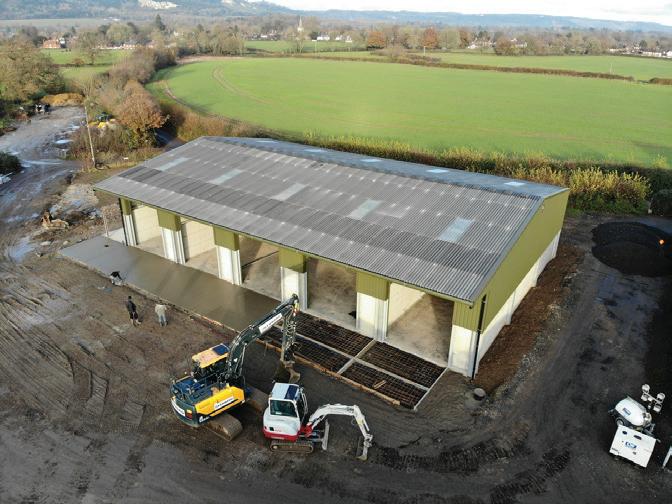



I N F O @ C R O X F O R D W I N E E S T A T E S C O U K 0 1 6 0 4 9 6 9 1 8 9 V I N E Y A R D E S T A B L I S H M E N T V I N E Y A R D M A N A G E M E N T M A C H I N E H A R V E S T I N G WWW CROXFORDWINEESTATES CO UK G R A P E P U R C H A S E C O N T R A C T S SPECIALISING IN: CRO WINE ESTATES XFORD JULY 2024 | VINEYARD
Collaborative working in the UK
The UK Plant Health Service is working in collaboration with industry to monitor SWD in the UK. There is an SWD Working Group which aims to track the spread of the pest and provide advice on control and management.
The SWD Working Group has produced posters for growers and packhouses, which detail identification and the floatation test. Find them through www.agriculture.ahdb.org.uk. The group are also working with the Chemical Regulation Directorate to identify and approve potential new crop protection products which may contain and control the pest.
The AHDB has invested more than £1.6m, over a decade, into SWD research. This includes funding for research projects with NIAB, co-funded by DEFRA, British Summer Fruits, Innovate UK and The Worshipful Company of Fruiterers.

Management and control of spotted wing drosophila



The initial NIAB project tested traps, bait and monitoring devices to assess their effectiveness and give growers practical solutions for monitoring SWD populations on their land. This has given an increased understanding of how adult SWD live and overwinter. The research confirmed the importance of removing damaged and diseased fruit and disposing of them through fermentation before reincorporating into the soil.
NIAB’s work has also experimented with agrochemical control agents to test them in UK conditions. The outcomes of these research projects have led to the assembly of a set of grower guidelines which can be found on an AHDB factsheet.



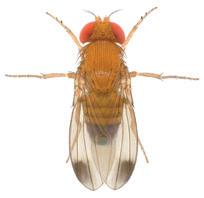











Cross Sector FACTSHEET 06/17
This factsheet outlines the threat posed by the spotted wing drosophila (SWD – Figure 1) to the soft and stone fruit industries in the UK and offers guidance to growers on how best to monitor, manage and control it. Action points • Start monitoring regularly from March using Drosotraps (Figure 2), particularly in woodland and hedgerows. The denser the wild habitat, the more likely it is that SWD will have survived there over the winter. The trap contents should be monitored weekly and the bait replaced on each occasion. • Consider the use of smaller disposable traps for precision monitoring around crops early in the season to delay the movement of SWD adults into the crop. For maximum efficacy, change these every four weeks. • In cherry and other stone fruit crops, two Drosotraps per hectare should also be positioned within the crop about 10 metres inside the perimeter from early leaf stage when floral nectaries are known to attract SWD into the orchard. Checking the numbers of SWD caught in the traps will help to monitor for their presence and gain an understanding of how well control tactics are working. For soft fruit crops, the two traps per hectare should be erected at the stage when fruits start to swell. • As the fruit begins to ripen, all growers should use the flotation test every week to check for presence of larvae in developing fruits.
Figure 1. Adult male spotted wing drosophila
As soon as picking commences, the test should be carried out at every pick on a representative sample of fruits. • From early fruit ripening, if SWD populations are present in the crop, use recommended control products ensuring that harvest intervals are met and products/chemistry is rotated. Be mindful of the maximum number of applications permitted for a product and do not exhaust these before populations of the pest reaches a peak. • Always be guided by a BASIS qualified advisor before applying crop protection products. During harvest, maintain strict hygiene measures ensuring the removal of every fruit from the crop, including all damaged, diseased or overripe fruits and any that have dropped to the ground. All wasted fruit and any affected by SWD should be completely enclosed for at least 48 hours at 14°C in a sealed plastic pallet bin to kill larvae. Longer times may be necessary at lower temperatures. The fruit waste is still likely to be attractive to SWD adults, so it should be spread and incorporated into the soil. Figure 2. Monitor for SWD adults from March using Drosotraps Background The spotted wing drosophila Drosophila suzukii is a fruit fly which originated in Japan and has spread across the world, first to the USA, then mainland Europe, before first being detected in the United Kingdom in 2012 at NIAB EMR in Kent. It is an invasive pest of soft and stone fruit crops and if left uncontrolled, can result in complete crop loss. Unlike the common fruit fly found in the UK Drosophila melanogaster which is only attracted to ripe and overripe fruits, the spotted wing drosophila (SWD) is attracted to under-ripe fruits and therefore finds its way into fruit crops both before and during the harvesting period. Armed with the knowledge that SWD was spreading to new countries in mainland Europe, the AHDB, working through then soft fruit panel chair Harriet Duncalfe (H&H Duncalfe), developed an SWD Industry Working Group to alert the industry to the threat of the pest and how to monitor for it. As soon as arrived in the UK, the Working Group initiated an industry-funded research project (SF 145). This ran from 2013 until 2017 and aimed to improve our understanding of how was spreading in UK climatic conditions, how best to monitor and sample for its presence, how to dispose of affected fruits and how to manage and control it. The findings and guidance emanating from the project are summarised in this factsheet. Identifying SWD SWD Drosophila suzukii looks like its fruit fly relative, the common fruit fly (Drosophila melanogaster) but there are some distinctive characteristics that are specific to SWD. The males have a large spot along the front edge of each wing and it also has two dark sex combs on the forelegs (Figure 3). The female can be recognised by its unusual serrated ovipositor (Figure 4) which allows it to penetrate the skin of fruit. Drosophila larvae cannot be identified to species. Only adults are identifiable. Most characteristics can be seen with the naked eye, but a hand lens is useful. Figure 4. Adult females are the serrated ovipositor at the rear of the abdomen Adult males are distinguished by their spotted wings and forelegs Figure 5. a common host of SWD Crop damage Crop damage is caused by the adult female whose serrated ovipositor allows her to make an incision in the skin of the fruit and lay her eggs underneath. On hatching, the resulting larvae not only contaminate the fruit, but also feed on the flesh which results in fruit collapse. Damaged fruits lose their shape and juice can often be detected running out. Vulnerable crops and host plants Early experience in the UK and from other countries where SWD is prevalent suggests that cherry is the most suceptible UK grown fruit crop followed by cane fruit crops (raspberry, blackberry and hybrid berries), blueberry and strawberry. Since SWD arrived in the UK, damage has been found in all of these crops. SWD has also been found in UK grown grapes. Other crops thought to be susceptible are blackcurrant, redcurrant, whitecurrant, gooseberry, plum, apricot, peach, nectarine and kiwi fruit. Damaged tomatoes are also thought to be at risk. Apart from fruit crops, other hosts include: wild blackberry (Figure 5), wild cherry, dogwood, elderberry, hawthorn, honeysuckle, mahonia, mountain ash (rowan), mulberry, nightshade, wild raspberry, rose and snowberry. Early and late sugar sources include; holly, insect honeydew and ivy. A range of other soft skinned fruits borne by ornamental garden plants are also likely to act as hosts. UK research project findings on habitat and dynamics Studies in project SF 145 were made on habitat preferences and population dynamics in the UK using a comprehensive nationwide monitoring scheme which included monitoring traps in both crops and wild areas. By the end of the project (March 2017), SWD had been found in all fruit growing areas of the UK and Ireland and the numbers of adults being caught in traps had increased year on year. By the end of the project, SWD was being recorded in traps in every week of the year. Populations in fruiting crops were found to decline at the end of harvest when fruits were no longer present to attract SWD into the crop. It was found that during the autumn and winter months, SWD populations were migrating into hedgerows and woodland (Figure 6) where they could find shelter from the winter elements. In each of the years of the project, SWD populations and activity began to increase between April and June, with numbers rising steeply from July/August and reaching a peak in December. The higher numbers being caught continued until February, when catches declined before rising gradually again from April. It had been thought the populations did not start to increase in fruit crops until the fruits began to ripen, but in 2016 was observed that SWD moves into cherry orchards long before it is able to lay eggs in fruits and that adults can feed on the nectar from extra-floral nectaries at the base of the newly opened leaves. A similar finding has been made in plum, although these leaves do not produce as much nectar. Life cycle and population dynamics Experience from Japan has shown that SWD can have up to 13 generations per year. Depending on the temperature can take between 12 and 79 days to develop from egg to adult. The warmer it is, the quicker the development and reproduction rate. Females can lay 7-16 eggs per day, over 300 eggs in lifetime and are active from around 10°C. Development and activity peaks at 27°C. Eggs are laid at any time between spring and autumn. The pest overwinters as adult females and males. Although prolonged periods of low temperature in the winter can help to reduce populations, SWD is known to develop a winter morph which can withstand very low temperatures below freezing. This helps populations to survive from one season to the next and explains why populations manage to thrive in more northern areas including Canada and Scandinavia. First detection in the spring is dependent upon the coldness and longevity of the winter. Mild result in earlier occurrence of SWD in fruit crops. Management and control of spotted wing drosophila 3 Figure 6. Adults seek refuge hedgerows during the late autumn and winter months Monitoring for the pest Monitoring for the pest is vital it is to be managed and controlled adequately. It is best to monitor for the presence of adult SWD all year round, while monitoring for the presence of larvae in fruit should also be carried out leading up to and during the harvest period. Monitoring for adults There are numerous commercial traps and their design is constantly evolving as we learn more about the biology of the pest. In project SF 145, comparison was made of the most promising of the commercially available traps and baits with results suggesting that the most practical for growers to use is the 2014 Biobest Drosotrap (Figure 2) combined with Dros Attract or Gasser lure liquid bait. However, it was shown that because of the larger entry hole sizes in this trap, a significantly greater number of >4 mm insects are captured making identification of adult SWD more time consuming for monitoring. A dry bait produced by the Natural Resources Institute containing the same 4 components as the Cha-Landolt bait was trialled in a cherry crop and shown to be attractive to SWD and more selective for this species, with less by-catch of other insects. However, this is not yet commercially available. Growers should keep abreast of the latest trap developments for SWD specificity. Smaller disposable traps (Figure 7) which are the size of a yoghurt pot are also commercially available. These already contain a liquid bait when purchased. Because they are cheaper than the Drosotrap, many growers prefer to use them for precision monitoring which requires traps to be located every two metres around the perimeter of the crop. However, they have shorter life span than the Drosotrap and need to be replaced every four weeks. When the best time to monitor In wild areas, such as hedgerows and woodland (Figure 8), it is best to monitor for the presence of SWD throughout the 12 months of the year using precision traps and checking them every week. This will indicate whether populations are present on your farm and whether the population size is increasing or decreasing. From March onwards, it is also wise to set out precision monitoring traps every two metres around the perimeter of susceptible crops to detect the pest is moving into the crop. As soon as populations are being caught in wild areas or in the perimeter traps around the crop, then start monitoring in crops, but not until fruits start to swell. The exception to this is cherry and other stone fruit crops which are known to attract adult SWD into the crop earlier, so traps should be set out in these crops from early leaf onwards. Figure 8. In hedgerows woodland, best to precision monitor for SWD all year round Figure 7. Smaller disposable traps are commonly used by commercial growers precision monitoring around the perimeter of susceptible crops How to use the traps Diagramatic guidelines on how to assemble the 2014 Biobest Drosotrap are available on the dedicated SWD pages of the AHDB Horticulture website. The trap should be filled with 300ml of Dros Attract or Gasser lure liquid bait to attract SWD into it. In the summer months during warmer conditions, the liquid does tend to congeal and this can be overcome by adding a teaspoon of boric acid, which can be purchased from internet sites. The traps should be checked and the liquid changed once every week. This both enables trap catches to be made and recorded and helps to refresh the bait to maintain attraction to SWD. When assessing the trap catches each week, the liquid bait should be decanted through funnel of filter paper (fine mesh paint filter will suffice – Figure 10) into a container. The spent liquid should be disposed of responsibly, but well away from the vicinity of the plantation. It should not be poured onto the ground as it will continue to attract SWD into the cropping area. The filter paper should be placed into a sealable plastic bag and the crop name and date recorded on the side. This way, filter papers can be returned to the office for examination to assess the insects caught. If the paper can’t be examined instantly, should be placed in a freezer for a couple of hours, which will kill any living insects and prevents any SWD from decaying. The numbers of SWD caught in each trap in each crop should be recorded carefully so that the numbers can be reviewed over a period of time to assess how population numbers are changing over time. Training videos on how to use traps can be viewed on the AHDB Horticulture website. Locating the monitoring traps At the start of the production season, it is best to use traps in wild areas of the farm, such as hedgerows and woodland. Traps in wild areas should be hung one metre above ground level and out of direct sunlight. Clear any tall vegetation away from the trap so that it’s easily accessible. Precision monitoring traps should be placed around the perimeter of the crop in adjacent wild areas at a two metre spacing. When monitoring within the crop, use two traps per cropping situation about 10 metres from the perimeter of the crop, but remember that traps should be hung on the shady side of crop rows. In stone fruit, cane fruit, bush fruit and vine crops, hang the traps at one third of the canopy height (Figure 9). In outdoor strawberry crops, position above the ground but below the spray boom height. In tunnel strawberry crops, hang in the leg row at a height of 10 Figure 9. In crops like raspberry, the traps should hung at one third canopy height on the shady side of the row Figure 10. Liquid bait should decanted through filter paper into container for disposal 5 FACTSHEET Management and control of spotted wing drosophila 40 40
Project SF 145 Scott Raffle, AHDB and Michelle Fountain, NIAB EMR
•
SPOTTED WING DROSOPHILA
READ MORE:.horticulture.ahdb.org.uk/knowledge-library/management-and-control-of-spotted-wing-drosophila FIND OUT MORE ABOUT THE WORKING GROUP: www.archive.ahdb.org.uk/knowledge-library/the-spotted-wing-drosophila-working-group JULY 2024 | VINEYARD










19 BRANCHES ACROSS THE SOUTH EAST AND EAST ANGLIAVisit: ernestdoe.com/branches to nd your local branch A27 M23 A23 A22 A3 A31 M3 A259 A2 M20 M2 M25 M25 M11 A1 A928 A12 A14 A14 A1 A47 A10 A17 A47 A12 A1 Eastbourne Portsmouth Cowes Lymington Eastleigh Crawley Uckfield Tunbridge Wells Dover Maidstone Guildford Staines Croydon Rochester Dartford Slough LONDON Watford High Wycombe Stevenage Luton Royston Hertford Harlow Chelmsford Bicester Milton Keynes Bedford Ipswich Bury St Edmunds Cambridge Northampton Kettering Peterborough Boston Sleaford King’s Lynn Ely Norwich COLCHESTER FULBOURN LITTLEPORT MARLESFORD FRAMLINGHAM FAKENHAM SUDBURY FYFIELD ESHER DARTFORD RINGMER ALBOURNE NORTH WALSHAM ROCHFORD WYMONDHAM BRAINTREE ULTING M4 M40 BENINGTON M1 ASHFORD ERNEST DOE ERNEST DOE POWER THE FRUIT & VITICULTURE MACHINERY SPECIALISTS ERNEST DOE & SONS LTD AGRICULTURE AGRICULTURE
Commitment to create the best possible wine
Henry Sugden’s desk has a unique status within Defined Wine’s headquarters at Highland Court Farm, just outside Canterbury in Kent.
“It’s the only thing we’ve invested in over the past five years that wasn’t directly linked to improving the quality of the wine we make for our customers,” Henry explained.
The comment reflects the commitment that Henry and his team devotes to the 40 or so vineyards across the South East that trust Defined Wine to create the best possible wine from their lovingly tended vines.
That level of service will soon be available to a broader range of customers when Defined Wine expands into East Anglia with the opening of a new winery at Holton St Mary, between Ipswich and Colchester.
The location has been carefully chosen to provide easy access for wine growers in Norfolk, Cambridge and Suffolk as well as in Essex’s booming Crouch Valley wine region.
“While the river [Thames] is a bit of a psychological barrier for people, the Crouch Valley is in reality only about an hour and a quarter from
Core Equipment are once again supplying Letina tanks for Defined Wine’s new facility in Essex
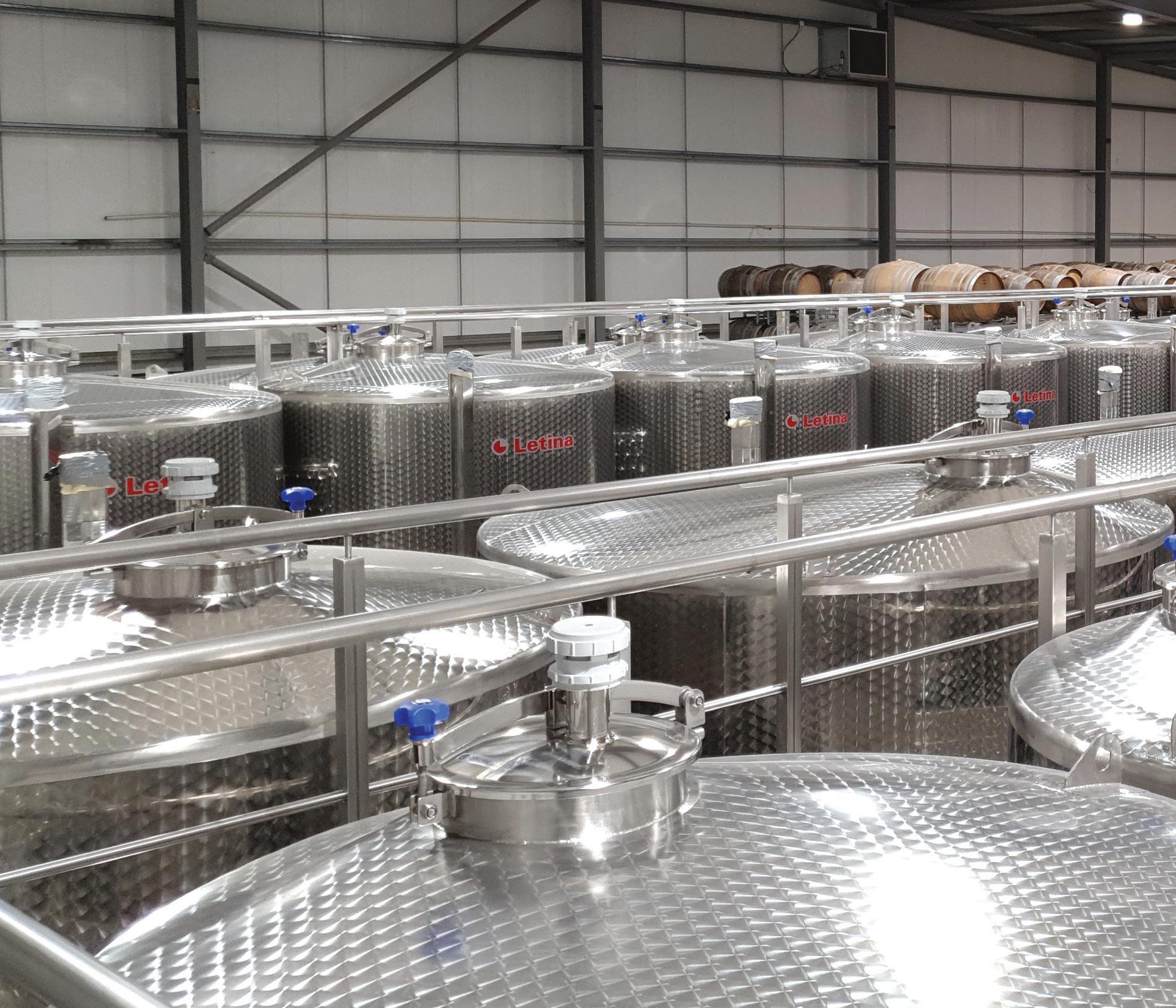
42 42
DEFINED WINE DESKTOP www.definedwine.com / www.wineandgrapetrading.co.uk ✉ info@definedwine.com phone-alt 01227 832907 MAP-MARKER Highland Court Farm, Coldharbour Lane, Bridge, Canterbury, Kent CT4 5HL
here,” Henry explained, “which is why we have deliberately chosen a site to the north of that so that we can serve growers further afield.”
The expansion into East Anglia was inspired by some of Defined Wine’s more northerly customers who pointed out that they would welcome a winery providing a similarly high level of service closer to home. “Given the rapid expansion of vineyards in that part of the world, I decided that it was a good time to expand the business,” said Henry.
While the Holton St Mary winery, due to open in September of this year, will undoubtedly be welcomed by new customers in that part of the world, it will also relieve some of the pressure on the Highland Court Farm operation, which has expanded rapidly in the five short years since Henry began the business.
“Although many of our customers are smaller vineyards and we may make between 2,000 and 5,000 bottles of each of their wines each year, we will produce over a million bottles of wine this year,” Henry said.
Alongside the new winery, which is being installed in an insulated former farm barn on an agricultural estate conveniently close to the A12, Henry is also investing in new office space at Highland Court Farm so that he can knit his team more closely together and provide more laboratory space.
<<
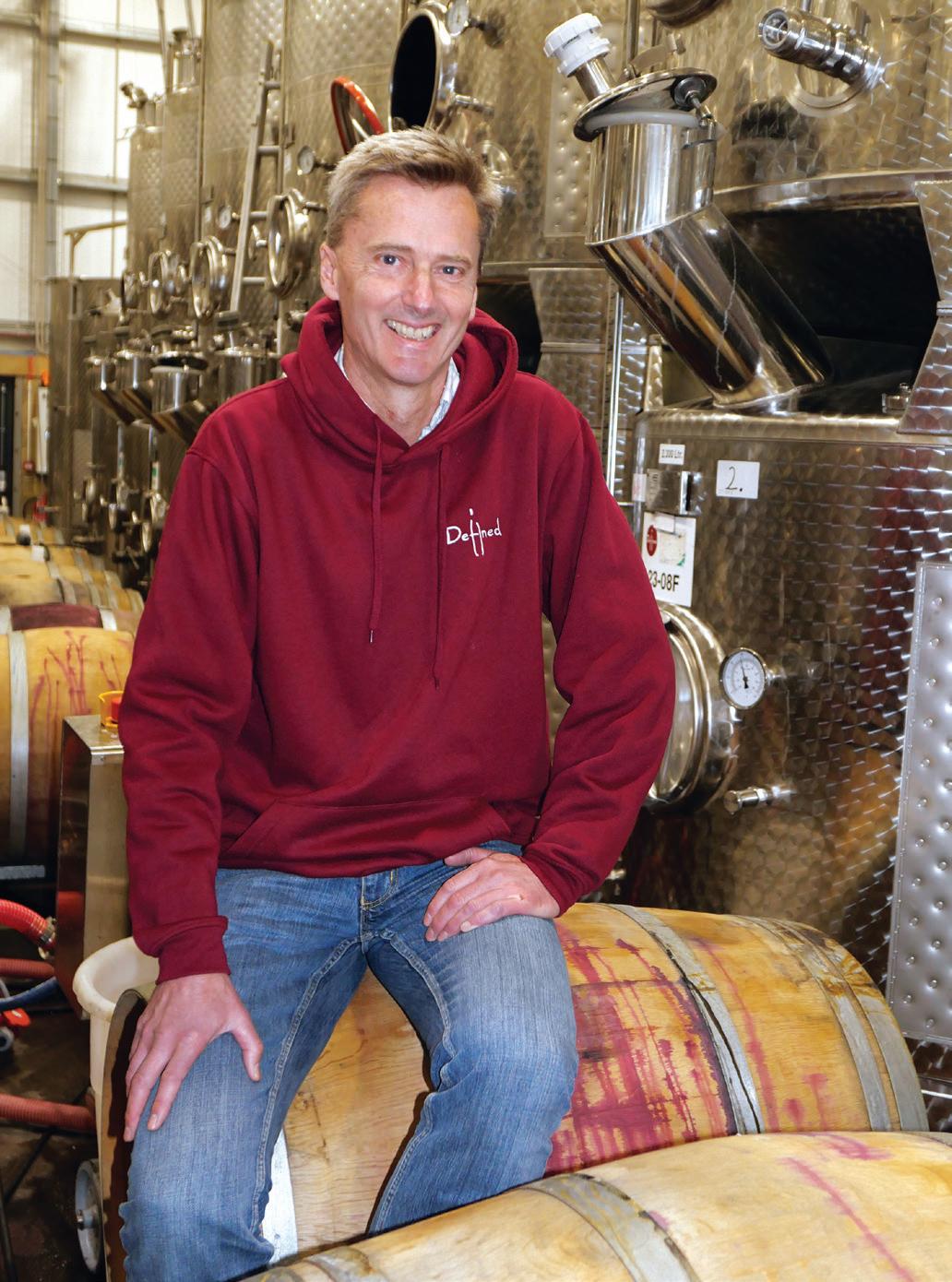

43 43
Henry Sugden
DEFINED WINE
The ‘lab’ is already an important part of the operation, with Henry a firm believer in the chemistry behind winemaking as well as the skills and expertise of the winemaker. Defined Wine also provides lab analysis services to more than 30 other English wineries and winemakers.
Henry spent 25 years in armoured reconnaissance as a member of the Queen’s Dragoon Guards and then worked for a few years in the city before deciding it was “far too dull”.
“I went into the Army because I didn’t know what to do when I grew up and then I went into the city because I still hadn’t worked it out,” he joked.
Conscious that he had always been interested in wine – he had run the wine tasting society when a student at the University of York – and realising that English wine was coming of age, he spoke to a friend who suggested he set up in business as a contract winemaker.
It took a considerable amount of work to raise the funds and get the venture off the ground, but with the discipline and planning skills that only the Army can teach, Defined Wines was conceived and born, helped by a European Union start-up grant.

Subsequent growth has been funded from a blend of further government and other loans, equity raises and asset finance from Close Brothers and HSBC.
The name is significant. “We work to produce the wine that people want,” he explained. “They define the style of wine they are looking for from their grapes and we then use our skills and expertise to create it.”
Henry is quick to point out that he is not himself a winemaker nor vineyard manager. “The two vines in pots outside my office window are the closest Defined Wines comes to having its own vineyard,” he commented.
Like all good leaders, Henry has surrounded himself with a capable team, most of whom have been with him since the company was set up five years ago, and which now numbers around 30 staff.
“We have grown with the industry,” he commented. “At times it’s been hard to keep up, but it’s been fun even when we have faced challenges. This is a brilliant time for English wines and it’s so good to be part of a sector that’s employing people.

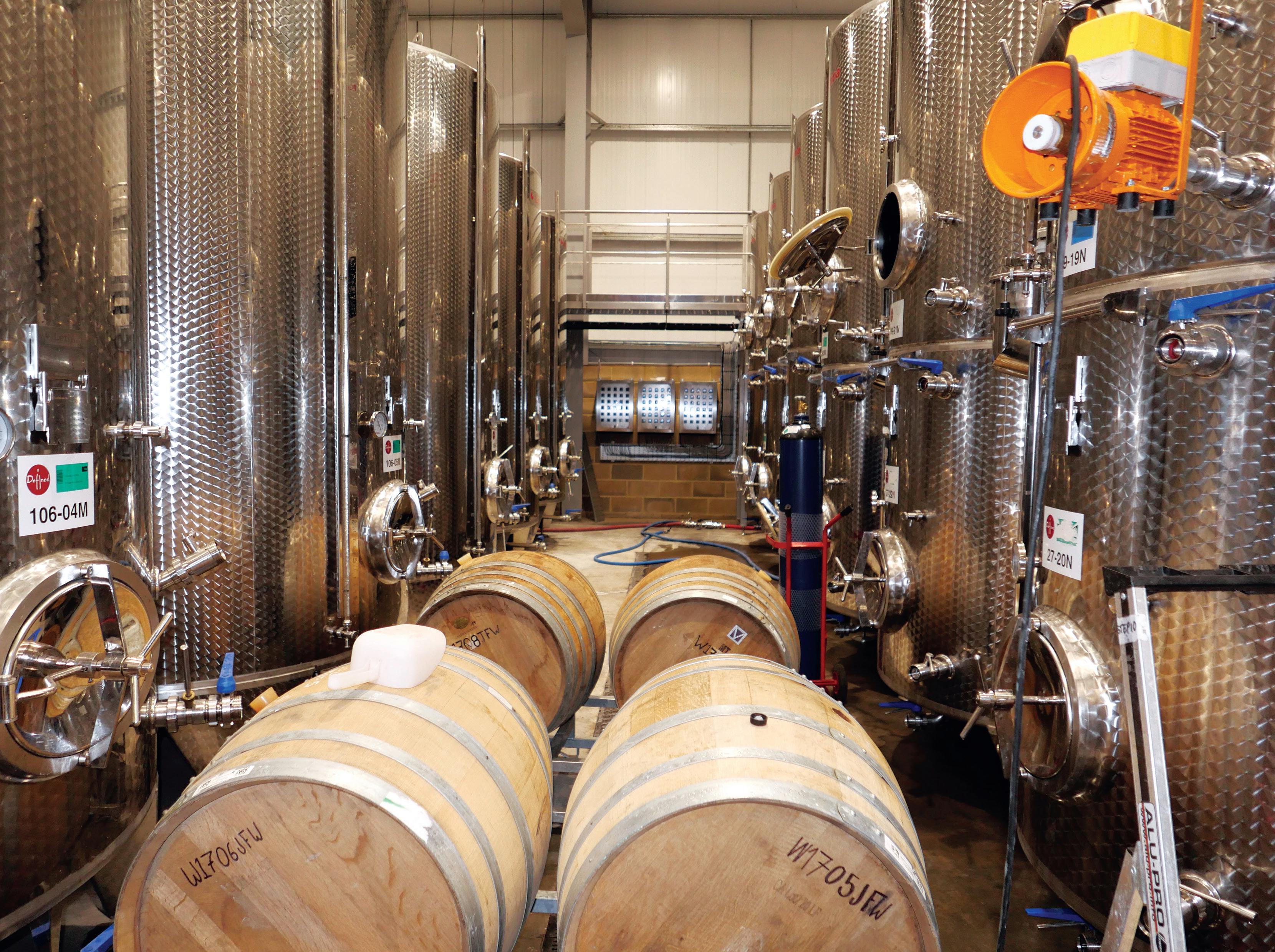
44 44
<< <<
Tim Morgan
Paul Jillings












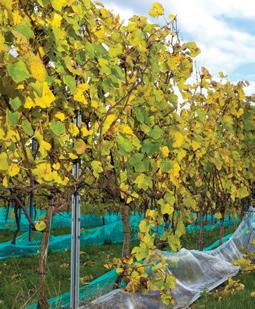














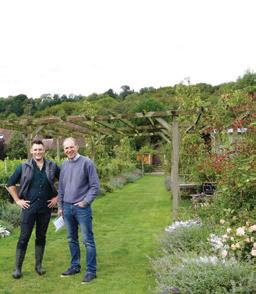







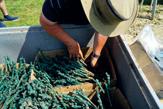
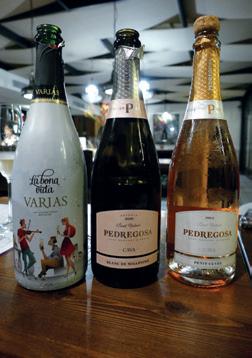

45 45 Berkshire Labels, part of the Asteria Group, has continually grown over 40 years to earn its position at the forefront of manufacturing high-quality and innovative labels and shrink sleeves. Our state of the art print and embellishment capabilities make us the natural choice for any label or shrink-sleeve project.
Cost e ective solutions for short to long run requirements • Providing Extensive Self Adhesive Material Choices
State of the art High Definition Print Capabilities
Hot Foil & Multi Level Embossing
High Build & Decorative Varnishes
ISO9001 Quality Assured and BRC Certified We embrace our responsibility from the outset as your designated and trusted printer to work closely with designers, contract fillers and brand owners. T: 01488 683628 ~ carl.jobling@berkshirelabels.co.uk Proud to supply Defined Wine with their labelling requirements FA_Enartis_Corporate_ADV_190x133_3mmbleed_EN_PA_0822.indd 1 11/08/22 12:04 INSPIRING INNOVATION We are constantly improving the way we and our customers do business through our inspiring innovation towards improving wine quality and winery efficiencies across the globe. Our diligent approach to the process of continued learning through research and collaborating with our customers and winemakers, in addition to providing solutions and new product development, gives Enartis the leading edge in the market. TECHNICAL SERVICES www.itascawines.com John Simmons Tel. 07788 561464 Email. john.s@itascawines.com Itasca Wines are delighted to be working with Defined Wine and supplying Enartis products. WOULD YOU LIKE US TO FEATURE YOUR BUSINESS? Email jamie.mcgrorty@kelsey.co.uk Call Jamie on 01303 233883 EDITOR'S VISIT anothermaledominatedindustry.” EDITOR'S VISIT Re a a Falling in love influenced the brands label design. whomnowmaintain healthysprayregime The human connection IN FOCUS... Planted in 1979, Elham Valley Vineyard is part of the social enterprises run by the Fifth Trust, a charity that is supporting 160 adult students with learning disabilities, with students ranging in age from 17 to 72. Vineyard tour alsoplantings Schönburger,Riesling, Thefamily’swinesareproducedusing N g Ak hu A big hit with customers This month Nigel Akehurst visits Biddenden Vineyard in Kent to take part in a planting day hosted by owners the Barnes family, who have been growing vines and making wine on their 65-acre family JoyceBarnesbegandiversifying thelate out middlebrotherSamBarnes becameapparentthatOrtegawas with VINEYARD VISIT Wine is like music: Taylor Swift and Katy Perry can be fun and enjoyable but do not need much attention to understand alternatively you need to put in lot of attention to understand all of the notes. findingyourselfface facewiththeCasa A unique experience enjoying privatetastingwiththehotels’ Whilstwinetastings hotelmaynotseem withsimplethings;goodcompany,good WINE TOURISM OwenElias,one themostrespected experience thelikes BalfourandChapel Mark and Julie want to create also want to take the opportunity to showcase the work of British artists ARTELIUM WINE ESTATE Art of wine While there is undoubtedly an art to making wine, one Sussex vineyard has gone further by putting art at the centre of its entire operation. ARTELIUM WINE ESTATE CONTACT US TODAY! scan me to readeditionspast VIN E YAR D For Growers & Winemakers in Great Britain JULY 2024 | VINEYARD
•
•
•
•
•
DEFINED WINE
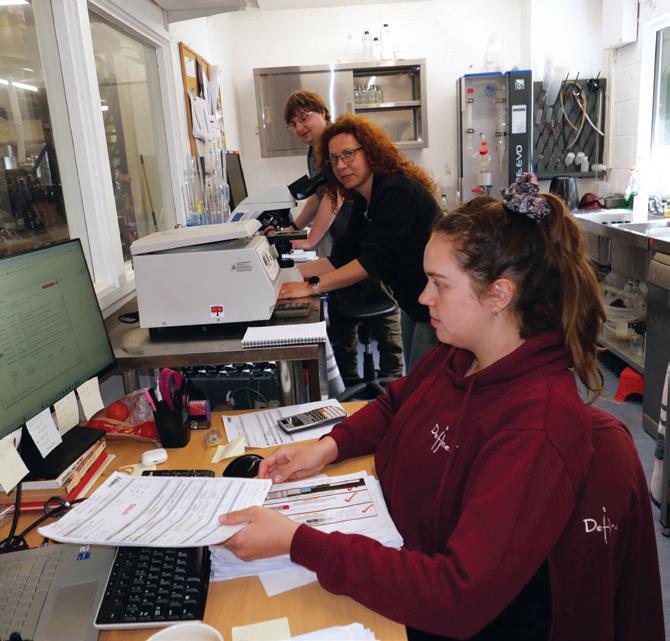
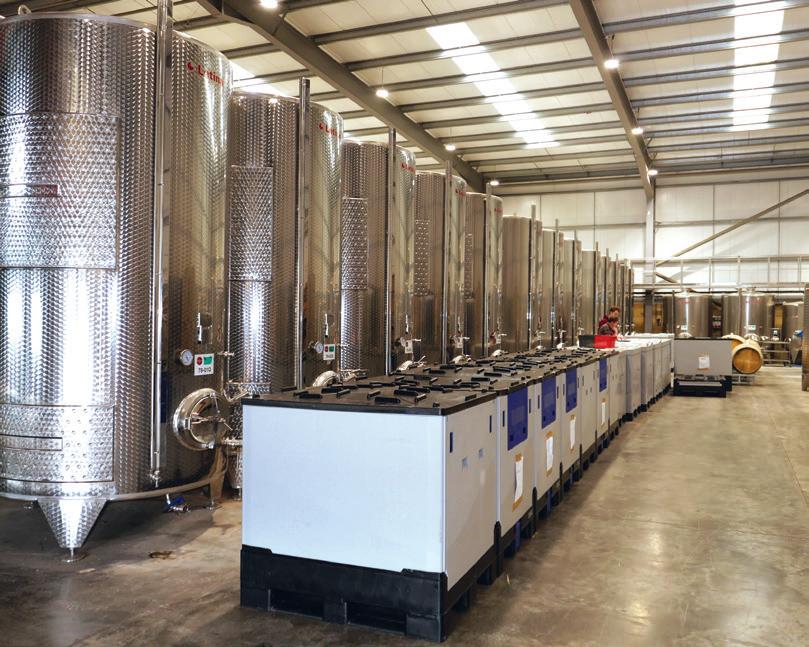
“I believe we are only starting to scratch the surface of the transformatory effect English wine could have on the rural economy and it is rewarding to be making a product that people find endlessly fascinating.”
Henry’s hand-picked team includes head winemaker Nick Lane, who was a winemaker at Cloudy Bay, Moet & Chandon and Dom Perignon before moving to England nearly four years ago to join Defined, and operations winemaker Poppy Pease-Watkin, who has made wine across the world and has been part of Defined Wine from the company’s first harvest.
Poppy’s recent maternity leave was covered by Nora Leitz, who was born in Germany but whose winemaking qualifications and experience were amassed in New Zealand. With Poppy returning, Nora will head up the winemaking operation at the new East Anglian operation. Other winemakers include South African Janneke van der Merve, while a new ‘technical winemaker’ is also being recruited.
But while the winemakers may be international – other than Poppy, who comes from County Durham – Henry pointed out almost all of the rest of the team is British, with most of the workforce local to the area.
“It has been great to see Brits gaining winery experience abroad and then applying for jobs as cellar hands, and we have trained up a number of people from scratch. All our production staff are local, with most of the temporary staff coming from local cricket and rugby teams, and both the cellar hands for the East Anglian venture grew up in the area.”
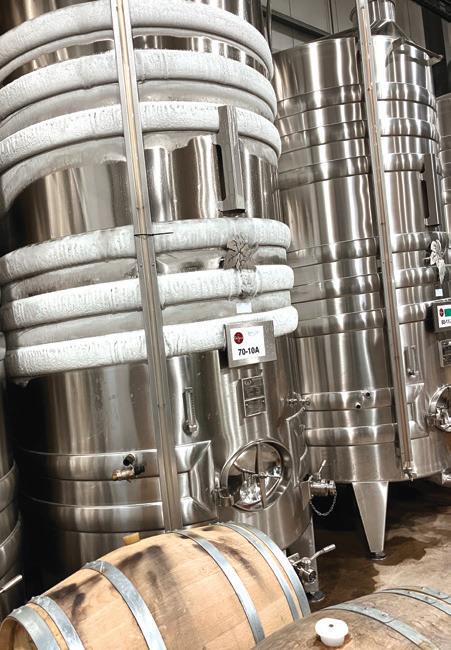

Defined Wine offers a complete contract wine-making service, from making the wine to filtering, bottling, storing, disgorging and labelling it.
“Our twin aims are simple; to make quality wine consistently and to add value,” said Henry.
While Defined focuses on making wine, the team recognises that good grapes make good wine, so Defined runs viticultural sessions and visits the vineyards that use their services.
Henry also understands that if their producers can’t sell their wine, they won’t need anyone to make it, which is why the company runs an annual trade tasting in London for journalists, influencers, buyers, sommeliers and independent wine shops.
Defined Wine makes wine and provides services for a range of different customers, from some of the biggest names in the UK to a range of smaller vineyards. As a wine fan, Henry enjoys the results of his labours but stressed: “As with my children, I don’t have favourites. When it comes to wine, I am omnivorous.”
The new operation at Holton St Mary will start up with four members of staff, two of whom come from that part of the world and have been working at Highland Court Farm while waiting for the new facility to come on stream. A lab technician will be employed locally, and as the business grows, the team will expand with it, creating employment as well as more great English wine.

46 46
<<








47 47 www.wineandgrapetrading.co.uk Bulk wine for sale • Free to look • Request a sample • Post your own wines for sale for £10 Have you got bulk wine to sell? JULY 2024 | VINEYARD
In conversation: regenerative viticulture
Over the past few decades, interest in regenerative agriculture has grown rapidly. Regenerative agriculture is an approach to farming that aims to be good to the environment and primarily focuses on regenerating soil.
This month, we caught up with Dr Belinda Kemp, the Group Leader at the National Institute of Agricultural Botany (NIAB) providing scientific leadership in viticulture and oenology research, and Luke Spalding, General Manager of Everflyht Vineyard and a practitioner of regenerative viticulture, at the Groundswell Agricultural Festival for a chat about where the wine sector is in terms of integrating regenerative viticultural principles into UK vineyards.
Why is regenerative agriculture relevant to vines?
Belinda: Regenerative agriculture is relevant to perennial crops planted on land that is passed down to future generations. It is a restorative practice that will ensure the health of the vineyard, especially the soil, decrease the need for nutrient inputs, and develop a sustainable, thriving ecosystem.
Where did you both first come across regenerative viticulture?
Belinda: I first came across it in New Zealand when I was there to undertake my PhD in 2007. Many vineyards I visited were blending traditional vine growing with innovative, sustainable vineyard management approaches

backed by science. In fact, most countries I’ve visited have regeneratively managed vineyards, but not all regions/countries refer to the management of their vineyard in terms of ‘regenerative viticulture’. Terms such as ‘sustainable’, ‘environmentally friendly’, ‘holistic’, or ‘nature-based farming’ are used in different parts of the world.
Luke: I hadn't seen regenerative practices applied in vineyards before I joined Everflyht, but was aware of some interesting studies coming from livestock and arable farming that were employing regenerative methods and wondered if this could transfer into vineyards and orchards. Regen seems to be big in America across most sectors of farming, but most of what I have seen in the UK relates to livestock and arable farming. There is a lot of information available via social media with farmers sharing knowledge, not to mention John Kempf’s podcasts.
Does regenerative viticulture improve grape quality/condition, or is it more for the greater good of the farm’s biodiversity and reducing impact on the environment? Luke: That’s a big question to which I don’t think we have the answer. I think more research is needed and a wider understanding of the systems in play. A lot of work has been done on organics and little has been shown to improve wine and grape quality via sensory panels. The same can be said about biodynamics. I think we must look more at the vine’s health, soil health and the vineyard ecosystem's overall biodiversity to really see the benefits of regen.
Belinda: As a scientist, the focus we see in studies is almost always on reducing impact on the environment, improving biodiversity, and enhancing soil health. Less attention has been given in peer reviewed literature on the grapes and/or wine composition. I would like to see that change, so that long-term studies always

include the yield, grape/juice composition and wine analysis.
Where do you think the UK industry is currently with regenerative viticulture?
Luke: I think we have some fantastic growers doing organic and biodynamics. I also think we have some great growers just doing the right things with their site considering our challenging climate. I think regenerative farming needs to define what it involves. I don’t think we have figured out what an active and progressive regenerative viticulture system looks like yet. I know I have not figured it out.
Belinda: I think it depends on the context –are we comparing UK vineyards with other countries? However, I’d like to see more regenerative viticulture practices based on regionally specific science. For example, the Woodland Trust did a survey of trees (the report is on their website) and the majority of UK willow tree leaves were high in zinc – a higher zinc limit than sheep can take. Therefore, if a vineyard introduces sheep to graze, they need to consider if the sheep can reach the willow leaves. What is the zinc level in the leaves of your site’s willow trees? If the sheep consume willow leaves, could the high zinc levels harm them? These sorts of questions need to be investigated before introducing trees or other plants into vineyards.
At VineWorks, our team of viticulturists use the latest technologies and research to give our clients tailored advice to suit their vineyard’s specific needs to achieve the best outcome one vine at a time.
To find out more about regenerative agriculture and viticulture, visit Groundswell’s YouTube channel on www.youtube.com/groundswell-agriculture and check out John Kempf’s podcasts on www.regenerativeagriculturepodcast.com
48 48
✉ sales@vine-works.com phone-alt 01273 891777
DESKTOP www.vine-works.com
THE VINE POST
W Mower Head rd Est ab l i s h tnem
Photo: VineWorks, 2019
Photo: DariaSzotek,2023





Letina tanks available from stock at Core Equipment
Worried about running out of tank capacity this year?
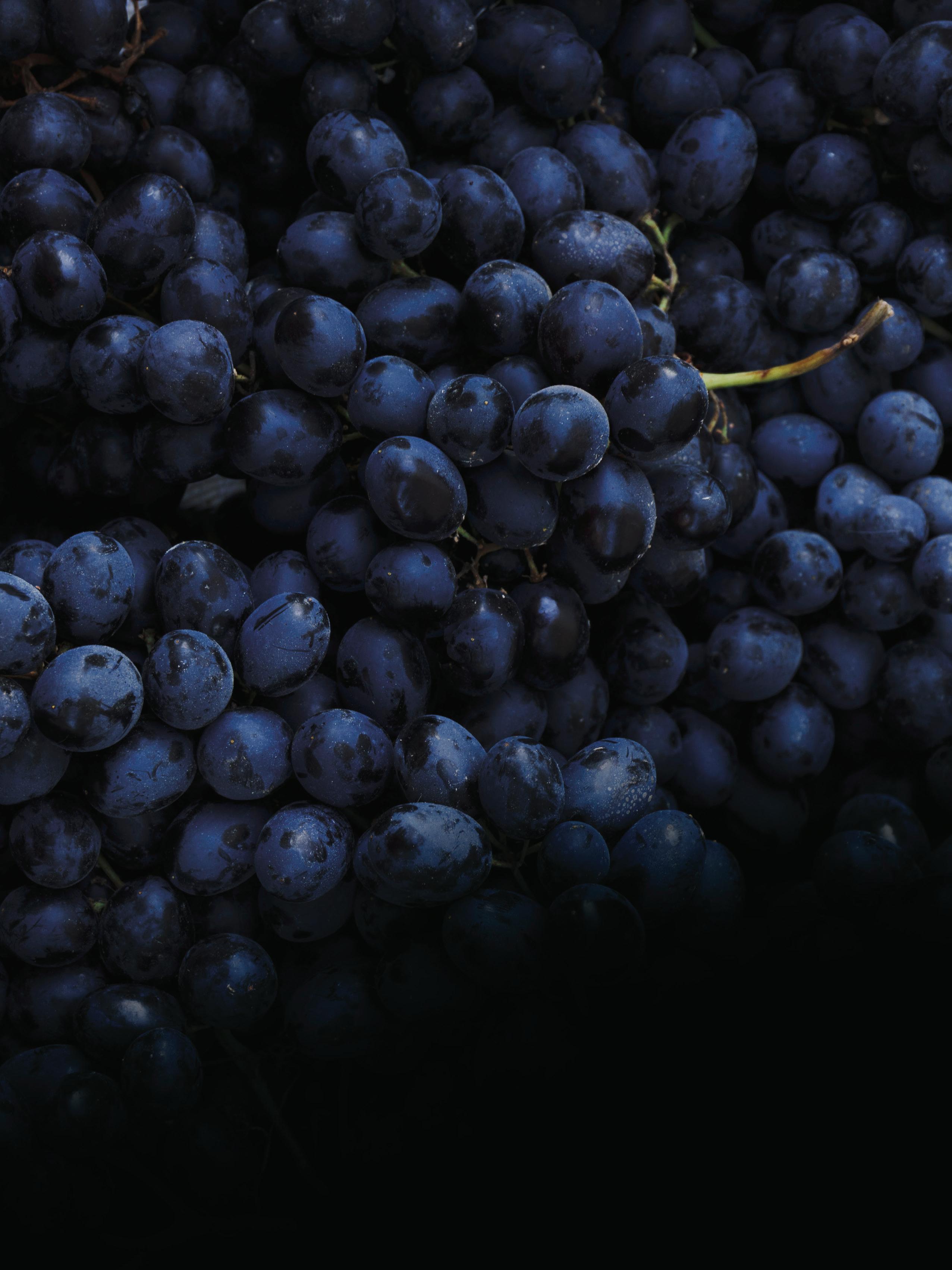


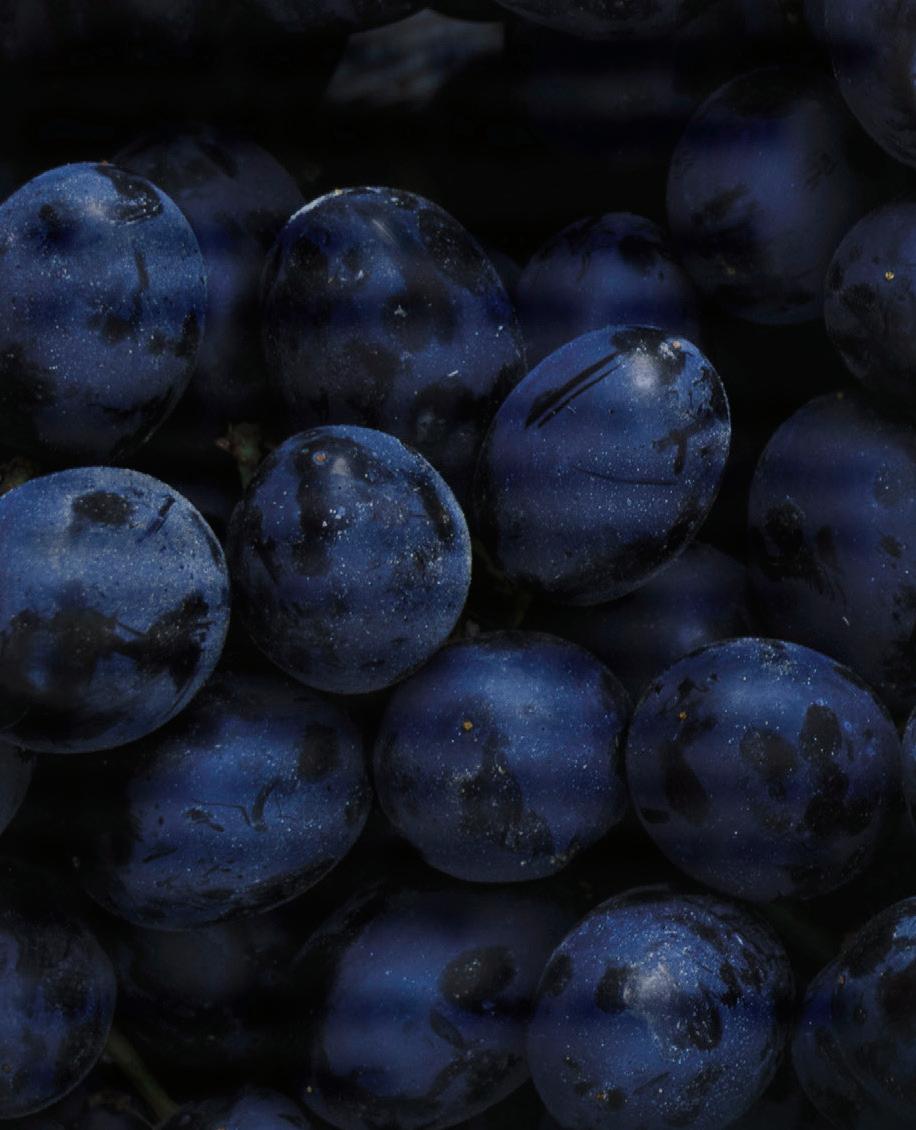
To take the stress out of buying tanks for this harvest, Core have secured a significant quantity of both fixed and variable capacity Letina tanks from 1000 litres through to 10,000 litres. As Letina’s largest European distributor and exclusive UK distributor, our close relationship with the Letina factory has enabled us to secure additional stock for delivery this spring.
Contact the Core sales department to secure yours.
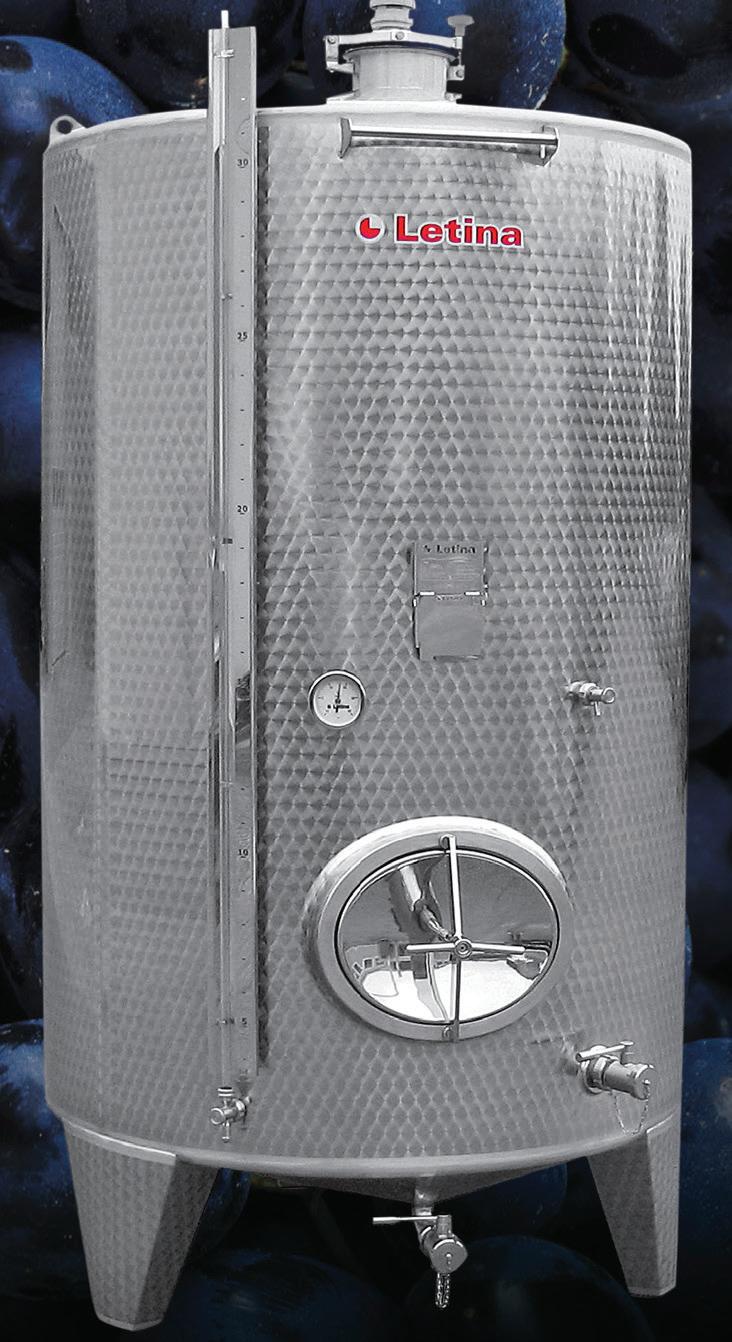

T: +44 (0)1327 342589 E: SALES@core-equip.com GET IN TOUCH core-equip.com Need more
Installation, training, service and maintenance
The
leading Winery Equipment supplier
Capacity?
from
UK’s
Working in partnership with Vineyard magazine for a developing UK wine industry.
WineGB is the national trade body representing the vine growers and winemakers of Great Britain from the largest producers to small hobbyists.
Our members work together with the organisation to develop strategy, expertise and marketing opportunities for long-term, sustainable success.
WineGB Awards Lunch and Celebration and Julia Trustram Eve farewell
We are gearing up for 19 July when we will be holding two events at the Drapers’ Hall in London. From 10:30am, we will host our annual WineGB Awards Lunch and Celebration. Following a record-breaking year with the highest number of entries and newcomers taking part, this event is not one to miss.
A tasting of the award-winning wines will start at 10:30am, followed by a sumptuous three-course lunch and the trophy announcements, concluding at 4pm.
Our Master of Ceremonies will be Peter Richards MW, one of the three Co-Chairs of the judging panel this year. Fellow Co-Chairs Susie Barrie MW and Oz Clarke OBE will be presenting the awards.
The awards ceremony will include the announcement of the regional trophy winners along with the unveiling of the category trophies, concluding with the top award: The Supreme Champion 2024.
We would like to take this opportunity to thank all the WineGB Awards trophy sponsors, our nine fantastic judges, our stunning judging venue Sandridge Barton,
For WineGB Awards Lunch tickets, please visit the WineGB website: www.winegb.co.uk/events/awards-lunch-2024
and Rankin for their continued support of this competition.
From 5pm to 9pm, we will host a farewell celebration for Julia Trustram Eve, WineGB’s former Head of Marketing. After more than 30 years of dedicated service to the GB wine industry, join us as we celebrate Julia’s incredible commitment and contribution to WineGB and our industry.
Julia is widely recognised and respected for having supported and shaped the sector and building the brand reputation of the English and Welsh wine industry – including the initiation of English Wine Week, a go to for press and UK trade, which gets stronger recognition each year.
Speaking about Julia’s contribution to the industry, Julian Barnes, former member and
Chairman of English Wine Producers (which merged with UK Vineyards Association becoming WineGB in 2017), said: “30 years ago, the English and Welsh wine industry was a little less known and far less visible. Having worked alongside Julia, we owe her more than a vote of thanks for her consistent and persistent marketing and promotion of the sector. From the early 90s, Julia has been the most embracing person any organisation could wish to have, every meeting, every event, brand ambassador, membership coordinator, always on point, well-polished and always smiling. Julia, we look forward to celebrating your achievements together.”
Join us at Drapers' Hall after the WineGB Awards Ceremony to bid Julia the fondest of farewells.
To register to attend Julia's Farewell, please register: www.winegb.co.uk/events/julia-trustram-eve-celebration-and-farewell
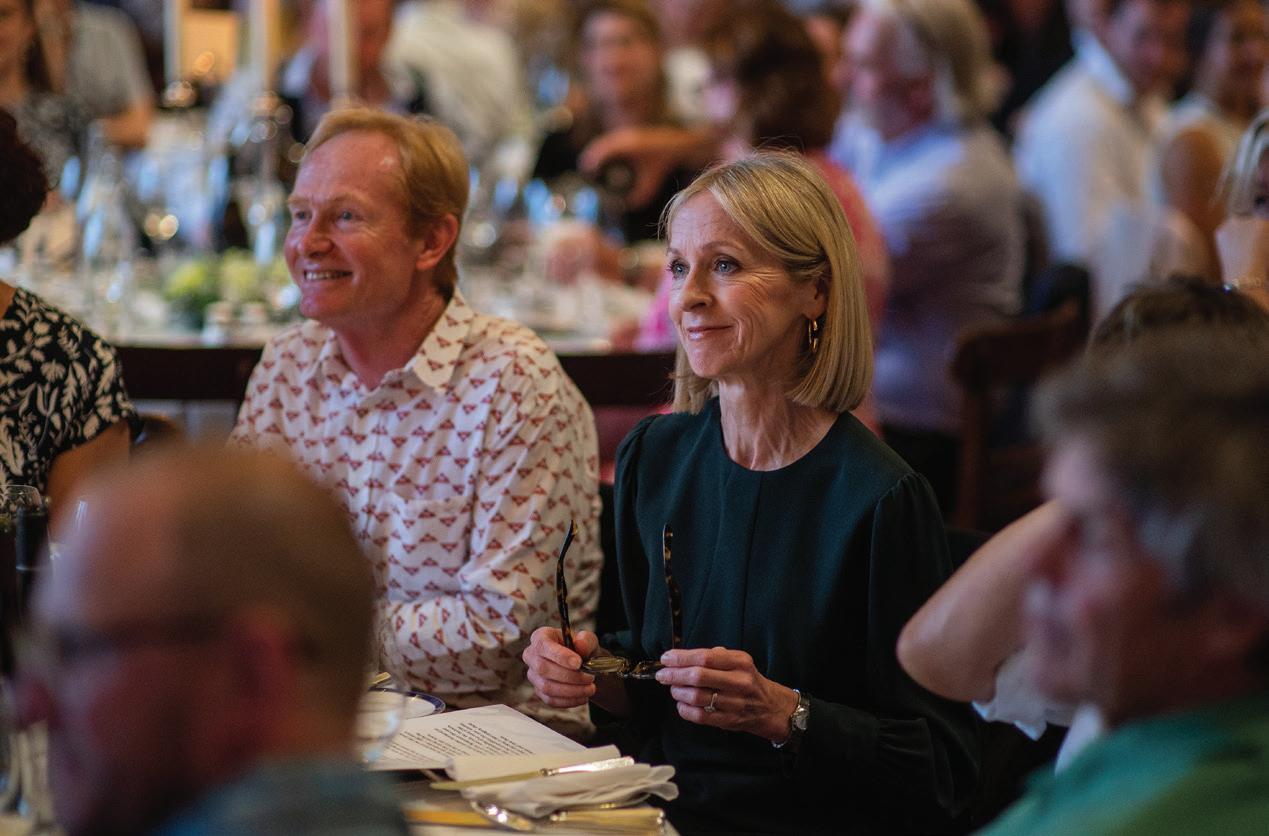
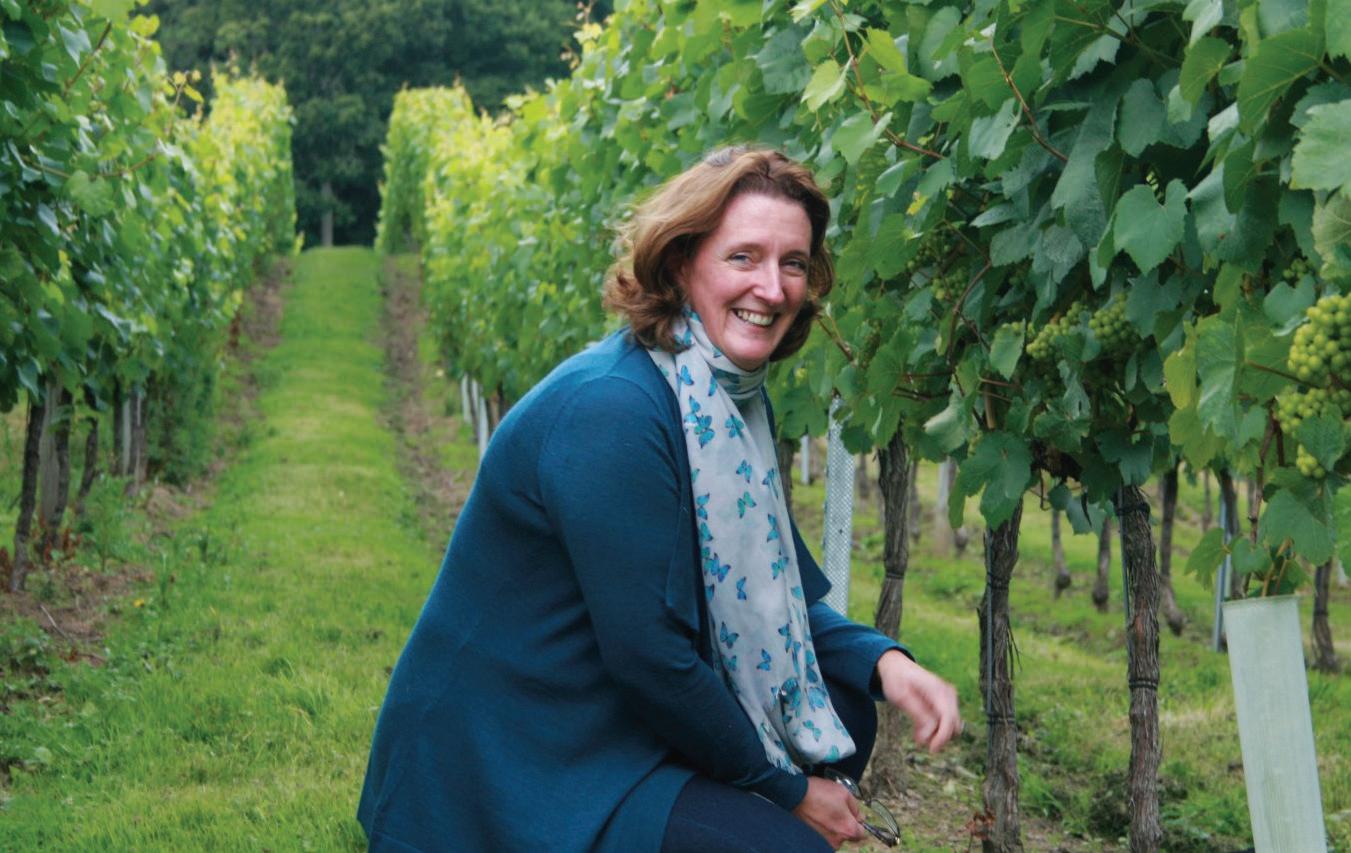
you
Photo: Cat Wilder
Representing
If you are interested in wine production in the UK find out more about WineGB and join us. Visit our website www.winegb.co.uk 50 facebook-f @winegb X-TWITTER @Wine_GB INSTAGRAM @winegb linkedin-in @winegb
Julia Trustram Eve
Photo: Tom Gold Photography

WineGB launches Manifesto for Growth and welcomes new members
Last month, ahead of the General Election, we launched our Manifesto for Growth which identifies the three main areas that require support from the new Government.
The English and Welsh wine industry is the fastest growing agricultural sector in the UK which brought in its largest harvest last year. It is experiencing rapid growth with planting predicted to rise by 84% by 2032.
A total of 35 new grower and producer members have joined WineGB this year, including the UK division of wine producer Jackson Family Wines. Jackson Family Wines is the first major still wine producer to invest in the English wine industry. By joining WineGB, the family-owned wine company demonstrates its dedication to supporting the development of our sector.
As the trade association representing the
English and Welsh wine industry, WineGB is calling on the new Government to act now and ensure that the right investment occurs, opportunities are taken, and regulatory blocks are removed to safeguard the sustainable growth of our sector.
Commenting on the launch, CEO of WineGB Nicola Bates said: “The domestic wine sector is growing at pace. Our producers are investing; WineGB provides vital business support for them and we look to the next Government to accelerate the growth of our industry to provide greater value to the UK. Our Manifesto for Growth identifies three key areas where we can make changes that will have a palpable effect on our community of winemakers and vine growers. We seek fairer business, a better environment and an understanding of the value of British.”
JOIN WINEGB phone-alt 01858 467792 paper-plane office@winegb.co.uk globe-asia www.WineGB.co.uk 51
Save the date WineGB members receive a 10% discount on packaging supplied by WineGB Gold Patron WBC. Join us today to benefit.
◆ 4 September: WineGB Trade & Press Tasting, Battersea Arts Centre, London
Charlie Holland, Jackson Family Wines; Nicola Bates, WineGB; and James Dodson, VineWorks
The WineGB Manifesto for Growth can be read in full at: www.winegb.co.uk/wp-content/uploads/2024/06/Manifesto-for-Growth-2024-final.pdf JULY 2024 | VINEYARD
Wine, interrupted
Why your vineyard needs business interruption insurance now.
It’s certain that running an English vineyard or winery, whether it’s a small family business or a major commercial operation, is more than just cultivating grapes and producing wine; it's a complex business that involves meticulous planning, significant investment and a deep connection to the land and climate.
The success of such businesses heavily relies on various factors, many of which are beyond the control of the owners and skilled staff – and just one equipment malfunction, unforeseen incident or weather disaster can halt production and suspend generation of income.
Flood, drought, fire, theft or malicious damage can all be major interruptions to your vineyard’s operation. You may suffer loss or damage to vines, grapes, stock, equipment and property, but you may also face loss in income in the coming days or even months.
An interrupted business means a financially interrupted business. Production could be halted until you are able to get going again, time may be needed for stock to be replenished and all those fixed overheads still need to be accounted for.
Vineyards and wineries face unique challenges that make them particularly vulnerable to disruptions. These challenges are:
◆ Weather and climate dependence. A late frost, excessive rain, drought or a sudden heatwave.
◆ The seasonal nature of the industry. The cyclical nature of grape growing and wine production means that timing is crucial, and a disruption during critical periods like harvesting or fermentation can result in a total loss for the season.
◆ The reliance on specialised equipment.
If key equipment breaks down, it can arrest production for an extended period while vital repairs or replacements are made.
◆ Disasters including fire, flood or machinery breakdown, which can cause significant damage to vineyards, buildings and equipment. Such events not only destroy property but also disturb business operations for extended periods.
◆ Pests and disease. These can devastate crops and require extensive measures to control and eradicate them.
These challenges and damaging occurrences can arrive unannounced, and if your vineyard or winery is under prepared and underinsured, they could quickly drain your stock and your profits.
How would your business fare should the worst happen?
Step in… Business Interruption insurance
Business Interruption Insurance (BI) is your partner-in-wine here! This type of insurance is absolutely essential for protecting vineyards and winery businesses from potentially devastating financial impacts. Business Interruption Insurance protects you for a specified time period beyond any incident itself and safeguards you in recovery, for as long as you need. It typically covers:
◆ Lost revenue.
◆ Operating expenses. Necessary ongoing expenses such as rent, payroll and utilities that must be paid even if the business is not operational.
◆ Temporary location costs.
It provides a safety net for savvy vineyards and wine producers, guaranteeing financial stability during periods when the business cannot generate income by ensuring essential
expenses are covered. Your business can focus on recovery without the added stress of financial difficulty or even ruin; in dramatic cases, sometimes making the difference between reopening after a disaster or permanently closing.
Business Interruption insurance certainly protects the significant time, money and effort invested into vineyards and wineries and helps businesses manage their obligations to both suppliers and customers, sustaining fruitful relationships even during prolonged disruptions.
Your bespoke policy will determine your period of indemnity – i.e. how long after a disruptive event your operations will be covered for. This would vary for vines, wine in store or collections. It is not unusual to have the indemnity period (length of cover) for 72 months or more.
Grape sense
For all English vineyards and wineries the unpredictable nature of agriculture, coupled with the high stakes of wine production, makes Business Interruption Insurance a critical component in a considered risk management strategy. By ensuring that financial losses from unexpected interruptions are reassuringly covered, Business Interruption Insurance will allow your business to weather the storm and continue thriving long-term.
Business interruption is not just for today, but will protect your business, if arranged correctly, into the future – in many circumstances, five years plus. As climate change and other risks become more pronounced, the protection offered by Business Interruption Insurance will only become more valuable, ensuring that the tradition and business of winemaking can endure for generations to come.

52 52
Ascend
Business Insurance Solutions Specialist insurance broker to the wine industry Ascend Broking, provide an insight to climate insurance solutions to the vineyard and wine production industry through www.vineyardprotect.co.uk and www.winesandspiritsprotect.co.uk provide an insight into the solutions that are available. ✉ matthew.collins@ascendbroking.co.uk phone-alt 01245 449060
Broking Group
A strategic partnership
A strategic partnership between AGCO dealer, Crawfords Group –comprising Crawfords, Agwood and Crawfords Automotive, and Plumpton College in East Sussex will ensure that students and apprentices gain practical experience and training on modern tractors with the latest technology, fully aligned with the needs of the industry.
Crawfords represents Valtra and Fendt from four depots looking after customers in east and south east England. The network also includes three Agwood depots representing Massey Ferguson in Kent, and East and West Sussex.
Plumpton College provides land-based and environmental education and training to 5,000 students on full-time and part-time courses annually. As the home of UK wine industry education and training, the college also has a successful vineyard which produces still and sparkling wines, as well as its own garden based in Brighton.
The initial three-year agreement between Crawfords Group and Plumpton College means that students will have three of the latest Valtra tractors always available for technical and operator training, based at the college farm. The first delivery, in mid-May this year, included two N5-series models and a G-5 series, two with powershift transmissions and one with a Direct CVT unit allowing operators to become familiar with both types of system. One tractor has Valtra’s SmartTouch Extend GPS guidance system fitted, which will be transferred to new tractors as the fleet is updated twice each year.



“We already enjoyed an excellent relationship with Plumpton College as some of our own staff were trained there,” explained Crawfords Group Business Director, Alan Haines.
Alan stressed that the partnership with Plumpton College will be mutually beneficial. Students will gain experience operating the latest AGCO tractors and the industry will benefit from operators and engineers already familiar with state-of-the-art technology.
“This is what a college and industry partnership should look like,” Jeremy Kerswell concluded. “For Crawfords Group, getting future farm owners, managers and operators exposed to their kit and, for our students, the up-to-date knowledge and skills to help ensure their future success.”

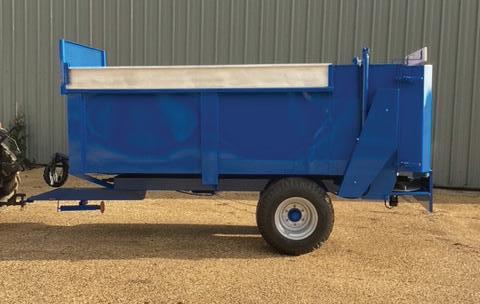


Equip has collectively over 40 years of UK vineyard, agriculture, engineering and farm machinery manufacture

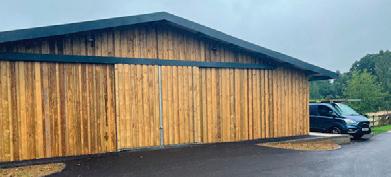


53 53
Left to right: James Hibbert, Julie Dougal, Clive Brickell, Alan Jarrett, Lilly Draper, Alan Jarrett, Sam Thorby, Arthur King, Harry Hollands, Albert Green, Alfie Hookway, Sam Cronin, Alan Johnson, Jeremy Kerswell
MACHINERY
EQUIPMENT
experience. Our products combine the latest technology, with the most efficient and versatile machinery on the UK market. The range of products include MWC spreader (manure, woodchip, compost), lime spreader, cultivator, subsoiler and picking trailers. Holsworthy, Devon, EX22 7XL Tel. 07730 402170 Email. info@vineequip.co.uk www.vineequip.co.uk EXPERTS IN THE FIELD Office 01825 371500 � info@formabuild.co.uk www.formabuild.co.uk 100% British designed & built Over 35 Years experience Site visits Call to arrange a site survey formabuild.co.uk STEEL FRAMED BUILDINGS, RECLADDING, REPAIRS AND GROUNDWORK � � @formabuild.co.uk @info_forma We specialise in the supply and construction of steel framed buildings. We have a wealth of knowledge and experience in the wine and fruit production sector to complete your new facility Based in the heart of Sussex, covering the South East. Sussex builders since at least 1605.
offer all aspects of steel framed construction and cladding together with groundworks and electrical fit out if required.
&
Vine
Forma
Establishing a wildflower strip


With a view to increasing biodiversity on site many vineyards are looking to establish wildflowers either in meadows or strips. It can be a difficult task to establish a successful wildflower meadow or strip but the results are well worth the effort. Vitifruit Equipment have the ability to provide all the necessary equipment to ensure the essential soil preparation is undertaken and a successful result is achieved. The photos show successful strips on site
at Godstone Vineyard where two passes produced a beautiful seedbed; the first pass to do the primary cultivation and the second with the seeder engaged. The cage roller followed by the trailed roller ensured good soil to seed contact and thanks to a shower the next day the seeds had a good start in life.
Jonathan Deeley of Godstone Vineyard said: "The key to good establishment is a fine, firm seedbed. To get that you need to break a shallow layer of topsoil down to a fine crumb all the time remembering that the smaller the

seed the finer the seedbed. In my case the soil did not need subsoiling or any prior cultivation and I had also previously sprayed off the weeds in the strips so as to avoid the potential problem of them growing up into the new baby plants and smothering them. I hired the kit from Vitifruit Equipment and thanks primarily to the strength of their Sauerburger rotavator the soil preparation was easy. In other cases the same rotavator is used to level out uneven rutted lumpy alleyways even where longish grass is present."

DESKTOP www.vitifruitequipment.co.uk phone-alt 01732 866567 ✉ vitifruitequipment@sky.com 54 MACHINERY & EQUIPMENT 54
VITIFRUIT EQUIPMENT David Sayell&Richard W i t
JULY 2024 | VINEYARD




Glosrose was established in 1976 as a family business. Having successfully developed into a nationwide company, we still retain the values that have been the foundation of our growth over many years.
Our dedicated team are committed to exceeding your expectations, however large or small your business, they are ready and waiting to deliver a speedy and flexible response on a full range of services.







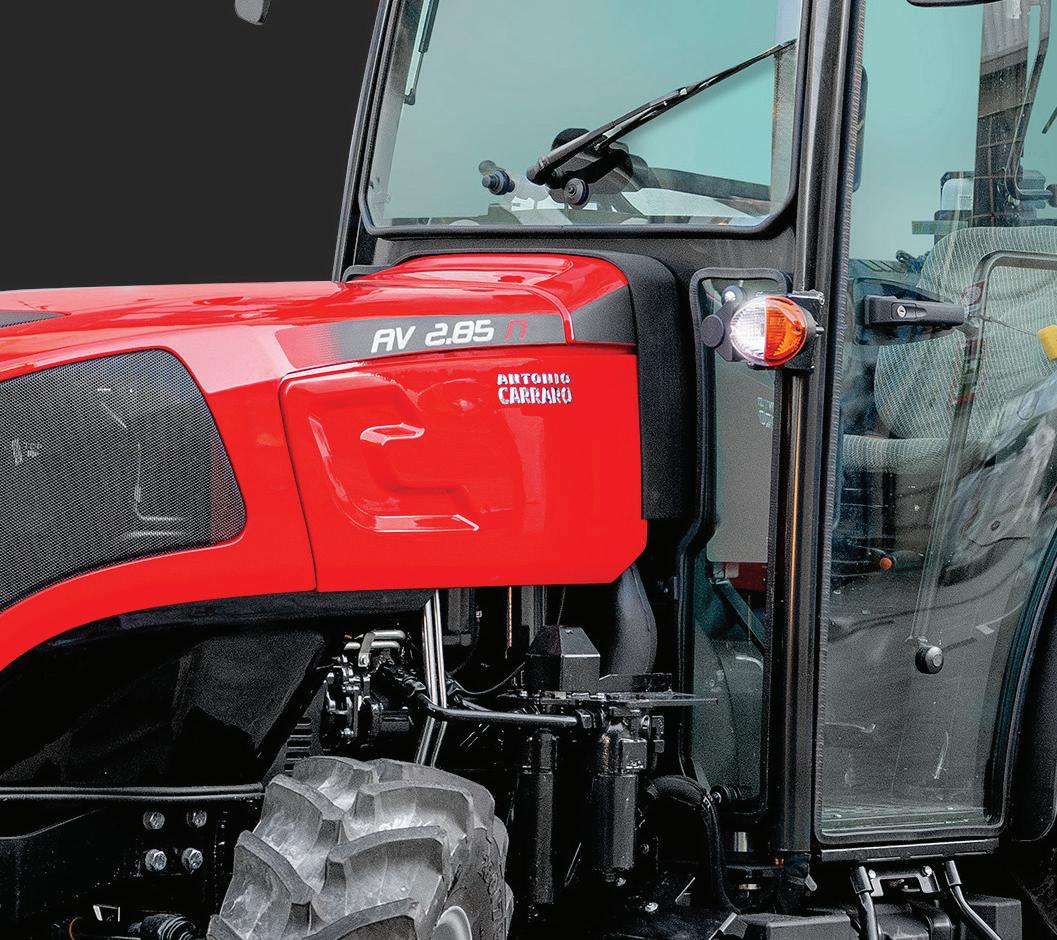














55 55 SERVICE | PARTS | HIRE SPECIALIST IN MECHANICAL HANDLING TO THE VITICULTURE INDUSTRY For more information call today SERVICE24/7-365FULL SUPPORT www.glosrose.co.uk 0800 731 1758
Call 0800 731 1758 now for a free demo NEW RANGE THE A SERIES...BUILT FOR VINEYARDS EXCELLENTVALUE! ENGINESIZE75-105HP NARROWWIDTHSRANGEFROM1MTR- 1.75MTR INSTOCKNOW!CONTACTUSFORADEMO PRICES FROM £39,750 +VAT Kirkland UK, Griffins Farm, Pleasure House Lane, Maidstone, ME17 3NW. 01622 843013. info@kirklanduk.com. JULY 2024 | VINEYARD


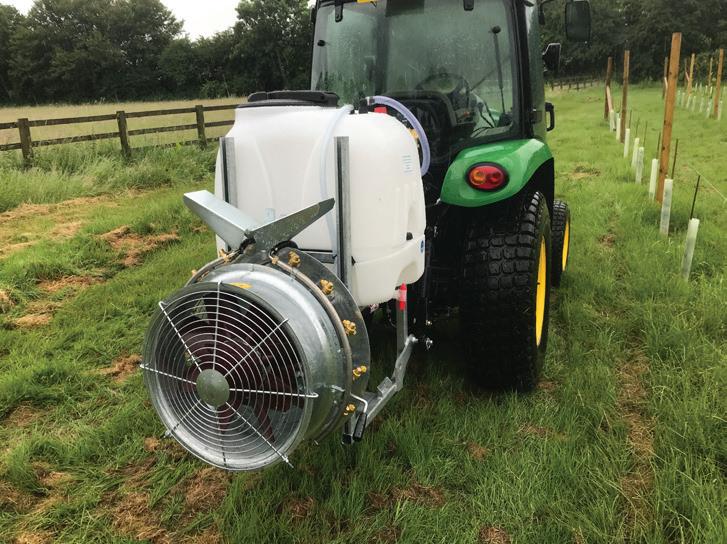
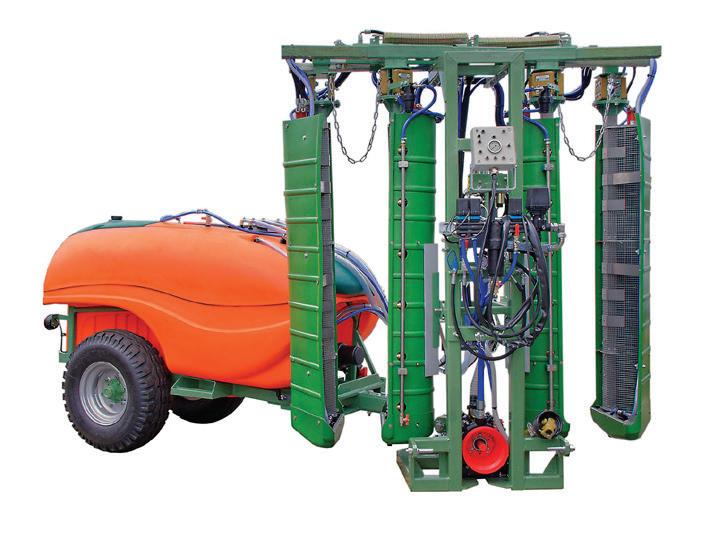
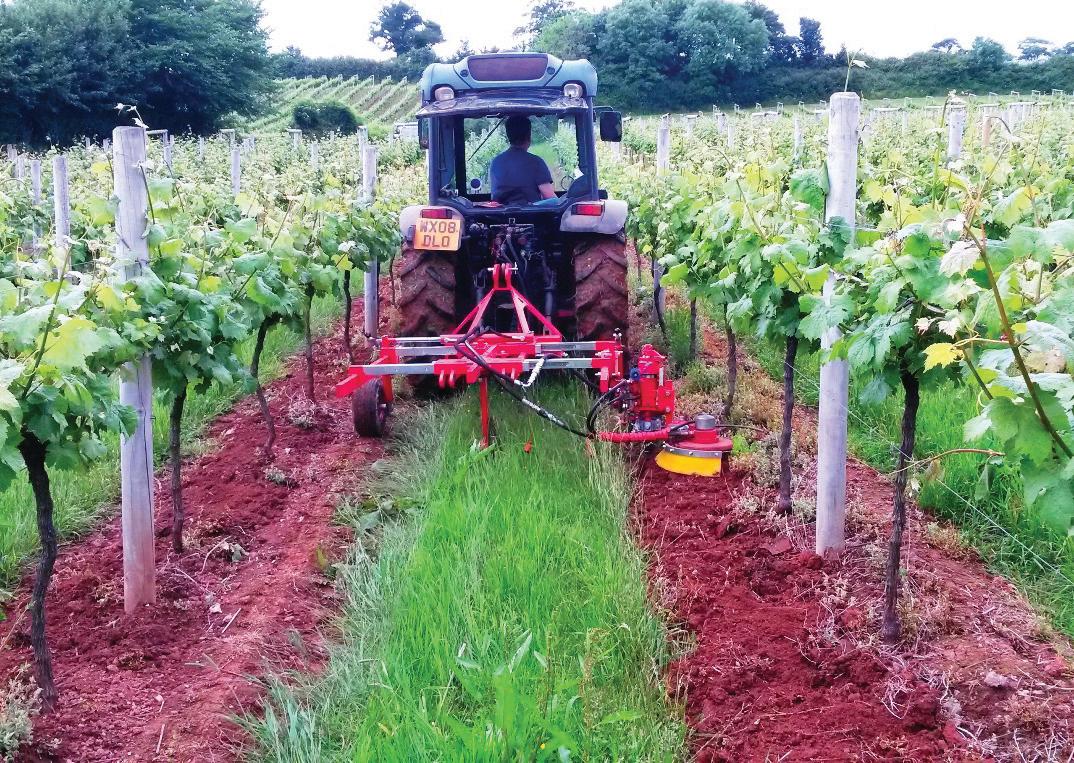
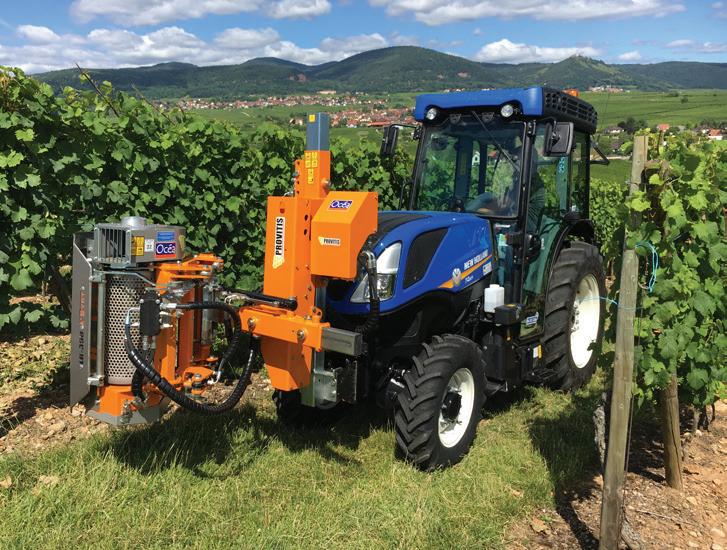

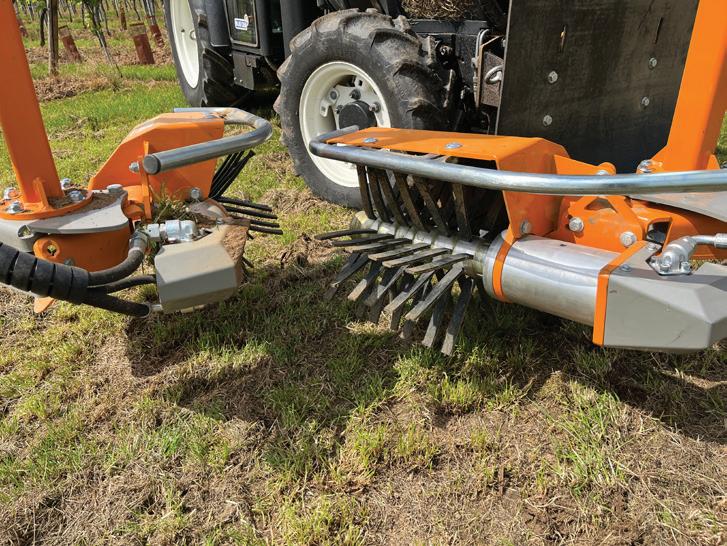
56 56 Vitifruit Equipment Sales and Hire /vitifruitequipment vitifruitequipment@sky.com 01732 866567 www.vitifruitequipment.co.uk PROVITIS TRUNK CLEANER PROVITIS LEAF REMOVERS MM FAN SPRAYERS PROVITIS TRIMMERS LIPCO RECIRCULATION SPRAYERS BOISSELET CULTIVATORS & STRIMMERS JULY 2024 | VINEYARD
MACHINERY ADVICE AND TIPS
Opening up and controlling the canopy
It’s that time of year when vineyard managers turn their thoughts to the importance and benefits of opening up and controlling the canopy as early as possible.
It’s widely known that good ventilation in the fruiting zone reduces the risk of Botrytis and other fungal diseases, improves spray targeting and efficacy, and also increases the berries’ exposure to sunlight, leading to the development of better colour in red fruit and aromas.
A study on the impact of leaf removal from Oregon State University also proved that mechanical defoliation was just as effective as hand leaf thinning, with both methods having the same results on the vine and overall fruit.
With this in mind, when it comes to canopy management, it is not surprising that there has been a surging demand for mechanical defoliators and vine trimmers in the last five years or so.
Defoliators
German manufacturer ERO has long offered growers a range of highquality leaf removal tools including the Elite, the ‘suck and pluck’ roller defoliation method, and VITIpulse, the pneumatic air blast method.
Wanting to combine these two technologies ERO developed the VITIpulse Combi – a defoliator with rollers to strip from the exterior and air to get right into the centre of the canopy.
Having greatly increased its canopy management client base over the years, viticultural contracting firm SJ Barnes, which now completes around 400ha of contract defoliation work each year across Kent, Sussex and Surrey, invested in the ERO VITIpulse Combi a few seasons ago to sit alongside the firm’s existing ERO Elite defoliator.
With the VITIpulse Combi, more targeted defoliation results can be achieved as the roller removes the external leaves, which then allows the air blast to better penetrate through to the inner part of the canopy.
“The VITIpulse Combi really lends itself to still wine production because you are exposing the fruit and blowing away trash and debris so that the grapes are kept clean, allowing for longer hanging times and riper berries,” said Sam Barnes, owner of SJ Barnes. “It is particularly useful for Bacchus too as the air blast system can remove the flower caps which so often lead to Botrytis.”
One key benefit of the VITIpulse Combi is that it allows for flexible use of the two defoliation systems. Operators can choose to combine the use of both systems or run them individually and independently of each other. According to Sam, what method the growers choose to operate for the best canopy management results will greatly depend on the season.
Vine trimmers
The ERO defoliators all sit on a common front-mounted mast system, which can also be used to mount the ERO Elite vine trimmer.


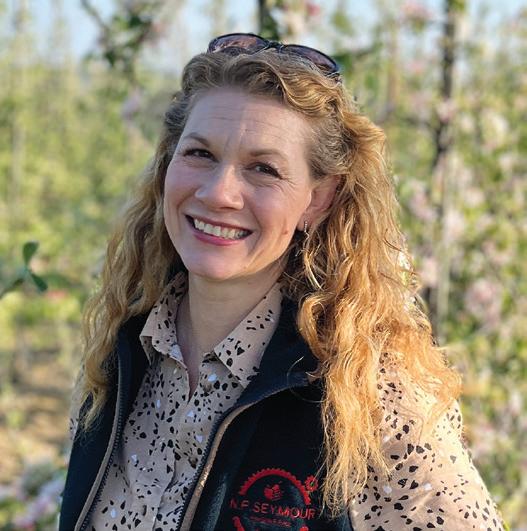
Described by many growers as one of the easiest to operate vine trimmers on the market, the ERO also benefits from specially designed cutter blades which are shaped to ensure a surgical cut and reduce wire damage.
With several sites planted in East and West Sussex, Roebuck Estates’ vineyard manager Jake Wicks explained why he chose a double-sided ERO Elite vine trimmer.
“I had heard really good things about the ERO vine trimmer from Sam Barnes and I was also keen to use NP Seymour as they’re the local dealership,” said Jake. “The ERO is very user-friendly compared to the other brands I have used before. It’s also really straightforward to get the trimmer on and off the tractor.”
The trimmers are operated by a joystick with light-touch action and have a split control box for better positioning in the cab.
As the vineyard has a New Holland tractor, a special front-mounted bracket was made by NP Seymour, along with some work on the hydraulic system.
“It has all been really well set up,” said Jake. “Engineering is something which NP Seymour does really well. They provide a great service, and everything is always really well produced.”
Vine trimmers are not just viable for large sites either. When White Castle Vineyard owners Robb and Nicola Merchant were ready to upgrade from a handheld hedgecutter, they opted for a BMV single-sided trimmer from NP Seymour to use on their 10 acre site in Wales.
“The BMV saves us about 60 hours’ work, which can be better spent looking after other more important areas of the business,” said Robb.
Having done extensive research before purchasing the BMV, Robb said that his final decision was based not just on price but also on what would be most suitable for the vineyard in the long term.
“The reason I chose the BMV is because we will at some point look to invest in a defoliator which will fit on the same mounting bracket and will use the same control panel and hydraulic set-up,” said Robb. “NP Seymour were pretty responsive, quick and accommodating to any questions. I spoke to Nick Seymour about measurements for our tractor and he built a bracket for the front. Despite being so far away, ordering from them was really easy right the way through.”

57 57 Claire Seym ur N P S e y m ruo dtL For
information on mechanical defoliators and vine trimmers from NP Seymour,
on 01580 712200 or email sales@npseymour.co.uk
more
please contact the sales team
JULY 2024 | VINEYARD
Local machinery dealer featured in Clarkson’s Farm

Kent based machinery supplier Kirkland UK has been featured on the extremely popular Clarkson’s Farm. The fruit and vineyard machinery dealer specialise in labour-saving machinery which is what originally caught the eye of Amazon producers.
Scott Worsley, Managing Director at Kirkland UK explained more: “We were approached by Amazon producers back in spring 2022 about our labour-saving machinery. The particular machine that caught their interest was the berry harvester. This machine can replace up to 200

pickers a day and is hugely popular with UK berry growers.”
With the episode focusing on reducing the cost for harvesting blackberries, Jeremy Clarkson was keen to try the demonstrator.
“It was a fun-filled, full-on day. We were helping the crew load the harvester and explaining to Jeremy how the machine works. We are also thrilled to have the Antonio Carraro tracked MACH 4 shown on the popular TV series. Jeremy loved driving this machine, and said he wants one of his own!”
Online self-assessment tool
The Regenerative Viticulture Foundation (RVF), a charity dedicated to creating a sustainable future for vineyards, growers and the planet, has launched the RV Guide – an online self-assessment tool to help growers recognise the good practices they already have in their vineyards, gauge their level of integration and discover new practices. The RV Guide includes information and resources on 16 practices which the RVF considers useful to farming vines regeneratively, with a focus on principles that are restorative rather than extractive and work in concert with nature rather than against it.
1. Monitoring soil health
2. Soil organic matter
3. Interrow tillage
4. Undervine tillage
5. Decompaction
6. Soil/ground cover
7. Cover crops
8. Vine fertility/nutrition and composting
9. Animal integration
10. Water use
11. Herbicide use
12. Fungal control
13. Insect control
14. Biodiversity
15. Agroforestry
16. Ecosystem design
The RV Guide takes the form of a questionnaire where growers determine how confident they feel in their ability to implement each of the practices, enabling the RVF to identify where growers most feel they need support to best direct resources.
Growers can also record what their current practices are, using accompanying explanatory information with links to other resources. This information can be updated as they improve their practices, allowing growers to chart their progress.
Stephen Cronk, Chair of the RVF, commented: “Interest in regenerative viticulture has exploded over the last year or so with more retailers coming on board and helping to drive demand. Despite this, growers can find it difficult to get the help they need on starting their regenerative transition or to find a trusted agronomist or consultant with the necessary expertise. We are finding that
the best way to learn about implementing a practice is by building local support networks or communities, so through the RV Guide, we aim to connect growers at different stages of their regen journey and allow them to share their knowledge.”
Through the RV Guide, growers can also be included in a map of producers interested in regenerative practices – from those who are just starting to become curious about regenerative farming, to those who are highly experienced. Vineyards can be filtered by practice and region.
During its beta testing stage alone, the RV Guide was accessed by 190 individual users including wine producers, growers and RV advisors, who registered 110 vineyards in the map. It has received endorsements from RV practitioners across the globe.
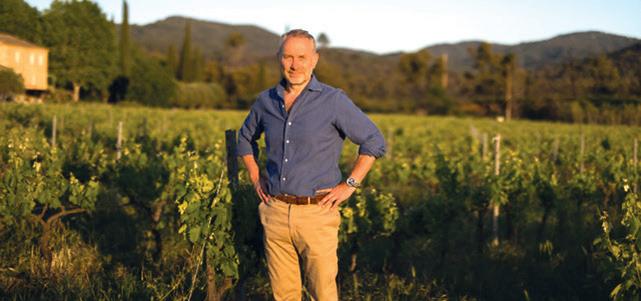
58 58 MACHINERY & EQUIPMENT
JULY 2024 | VINEYARD
Stephen Cronk at Domaine Mirabeau


NATURE IS OUR DRIVER www.pellenc.com WARRANT Y OFFERED FOR UP TO 5 SEASONS * on our battery-powered tools: C35, C45, VINION, PRUNION, POWER 48, SELION 12, CULTIVION and FIXION 2 with their battery** for 4 years from tool commissioning date Excluding reconditioned tools for up to 5 seasons (annual maintenance mandatory) from date of commissioning **Original battery supplied with tool at time of purchase 5 SEASONS BY YOUR SIDE Available From: For more information contact: rwcrawford.co.uk | agwood.co.uk


13 min Bo t tli n g s y s te ms as ve r sa til e a s you ! SCAN2WATCH w w w s r a ml c o m Bottles and aluminium cans on the same machine! FAST AND EASY CHANGEOVER IN ONLY 13 MINUTES Purchase your filling lines TECHNICAL SERVICES Itasca Technical Services / Contact: John Simmons Tel: 07788 561464 / Email: john.s@itascawines.com www.itascawines.com





















































































































































































































































































































































































































































































































